|
|
Post by fogster on Jul 7, 2014 21:28:01 GMT
24th June 2014 Andrew Fothergill's X-10D Latest X-10D mods, matched 1980 vintage (from same batch) 6N23P valves, ceramic valve sockets, new quad phono socket, new 2.1mm DC inlet socket. Samwha VA (135C caps) employed adjacent to the power resistor, Panasonic FC, WIMA, EVOX caps fitted to the rest of the board. Ultrafast diodes fitted. These are the latest "X-TRA" capacitance mods and take the X-10D to new sonic dimensions (and then some!). Mike Just taking a moment to give some initial feedback on the x10d upgrades. You are a genius! I still have the x10d you overhauled for me 5 years ago (not to mention the little pinkie power supply). May I say that one is still going strong and there are no problems with it, so buying another second hand to get your latest version seemed a bit of an extravagance. However my first impressions are that the latest version is a significant step up, even though it might need a few more hours burning in to reach its full potential. I'm using it between DAC and amp with silver interconnects and it's giving a lovely detailed and musical sound, with decent weight to it. I don't get as much time as I'd like to listen, but a good test is how excited the kids get when I put some music on for them - the new x10d has had a very good reception from them! It's easy to spend large sums of money chasing small improvements in sound quality, but what you do is very effective and excellent value for money in my view. Keep up the good work! Thanks again, Andrew |
|
|
|
Post by PinkFloyd on Jul 10, 2014 19:55:23 GMT
10th July 2014 - Chris Baillie's XCANS (V1) Headphone Amplifier. Panasonic FC / NHG, WIMA, Nichicon MUSE, Samwhah VA and OSCON capacitors. Ultrafast UF4004 diodes, ALPS potentiometer and knob, purple LED, Quad gold plated socket, Jalco pro headphone socket, New 2.1mm DC input socket, matched pair of Russian 6N23P valves. Removed the parts and two of the capacitors had leaked onto the board so that explains the strange noises Chris was experiencing with the amp  The boards are in tip top condition and this is a very tidy example of an XCANS (V1) amp. This would be one of the early X-CANS, you can tell that from the capacitor soldered across the DC socket (instead of board mounted), and in damned fine condition for its age. Quite a few of the caps had gone bad but that's to be expected when you fit 85c rated general purpose caps into a warm ambient environment. Still, pretty good going for an amp that is over 20 years old and will probably go on for another 40 years before another cap change is required. I've used my usual high temperature capacitors and have employed Panasonic NHG (105c) and Samwha VA (130C) types next to the regulators (which run quite hot to the touch) so these are more than up to the job! Input coupling caps are Nichicon MUSE 10uF (C103 / C203) and all the other 10uF caps are OSCON types. The power board caps are all Panasonic and the increased capacitance reaps major rewards across the sonic spectrum. As a matter of course, I now supply a Jalco Pro headphone socket and a gold plated quad phono socket with all of my kits.... all very well replacing capacitors, valves etc. but also crucial that all ingoing / outgoing connectors are renewed as well.... a brand new headphone socket will always be a lot better than a 25 year old oxidised socket, same goes with the phono sockets. A little tip to any of you who may be experiencing a "buzz" or "hum" with your XCANS (V1)...... you could spend years trying to find it with no luck and the solution is as simple as repositioning a piece of wire  If your LED wires goes anywhere near the input coupling capacitor, C103, then the amp will buzz like an angry bee! Always make sure your route the LED wires to the right hand side of the amp (when viewing the amp from the front).... this also applies to the V2 amp. LED's are noisy and the best type of LED in an amp is NO LED..... if you can live without an indication lamp telling you the amp is "on" and just look at the mains switch instead then I would recommend removing the LED from the circuit. A simple cutting of the wires is all that's required. This is how I get my leads to stay away from C103.... it's simple and effective: 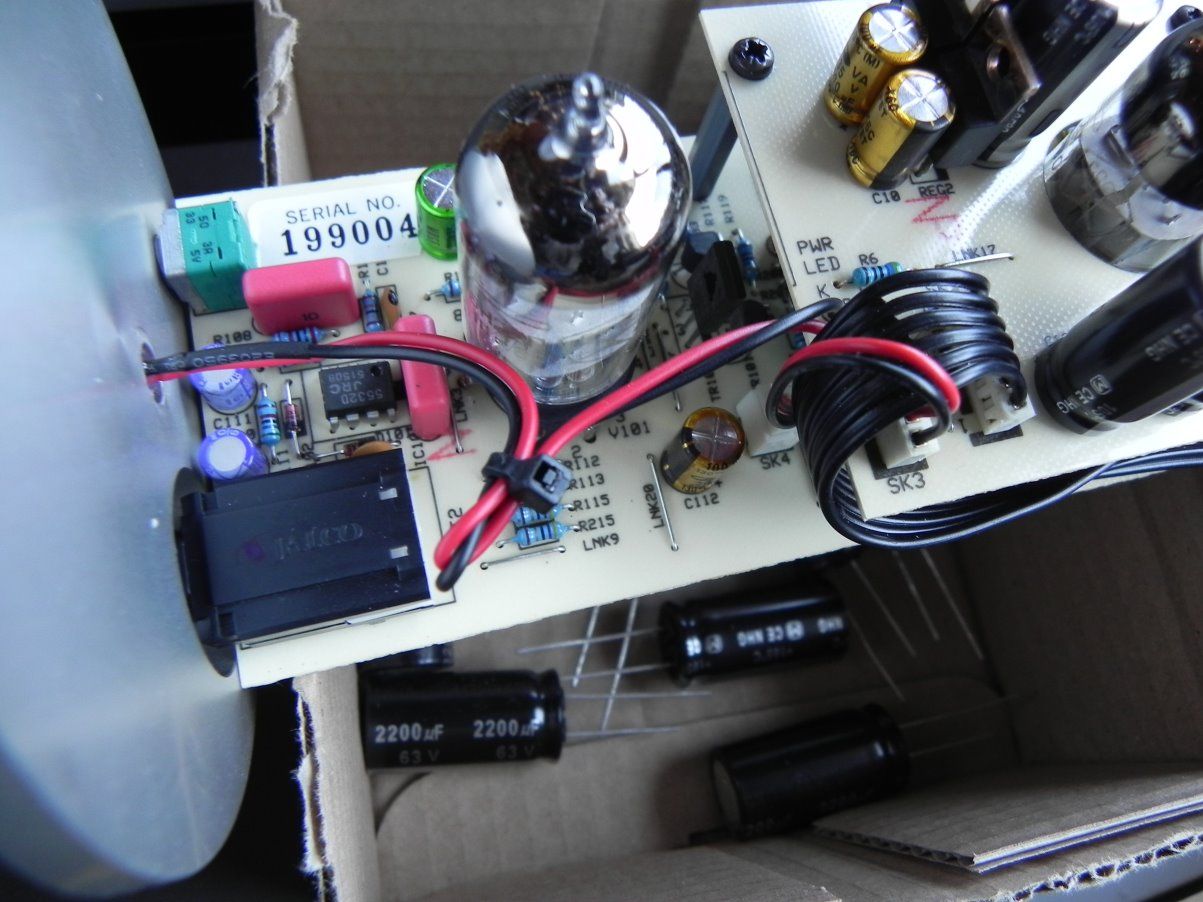 That photo is from the amp I was working on today, Chris Baillie's XCAN V1. Back to the meat and bones..... The amp as was: 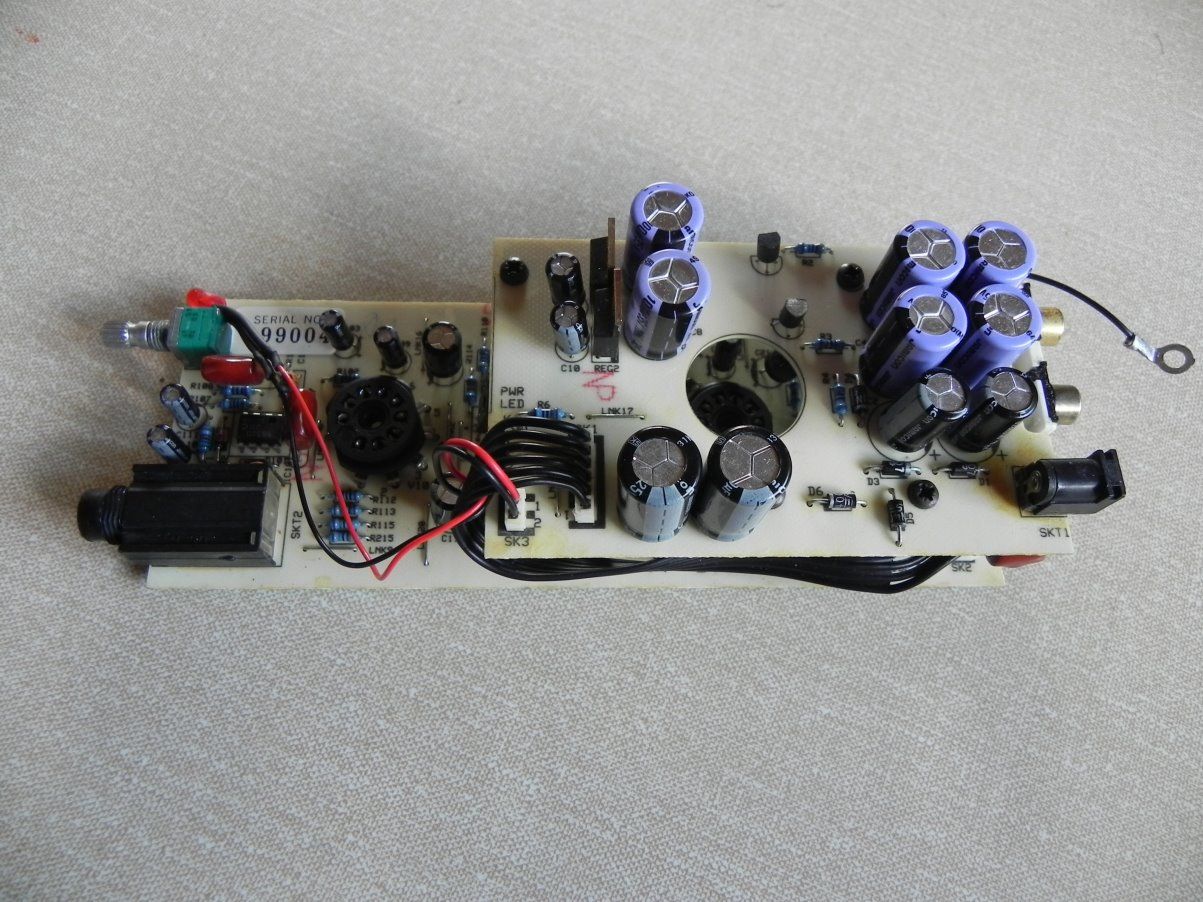  Stripped all the bits and bobs off: 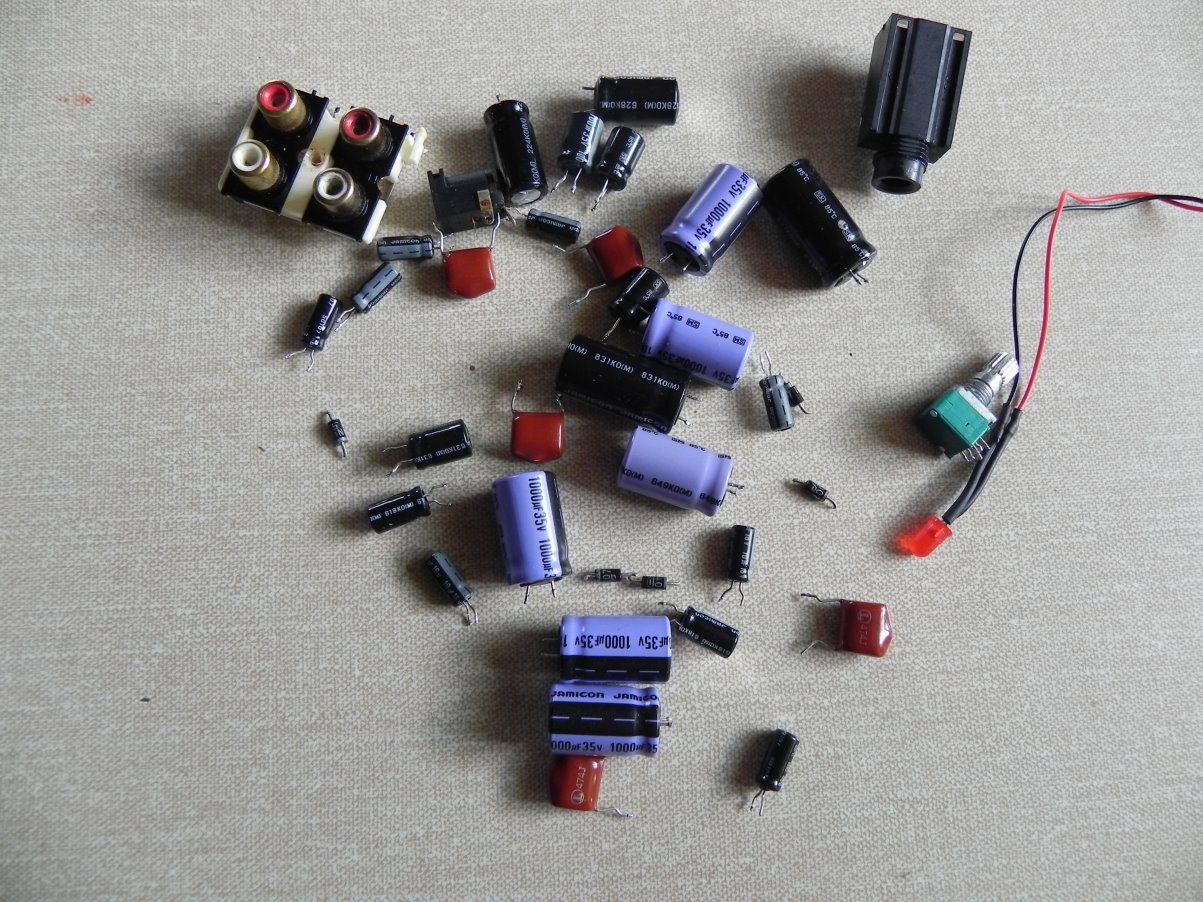 Cleaned both the boards.... all ready for the new parts / mods: 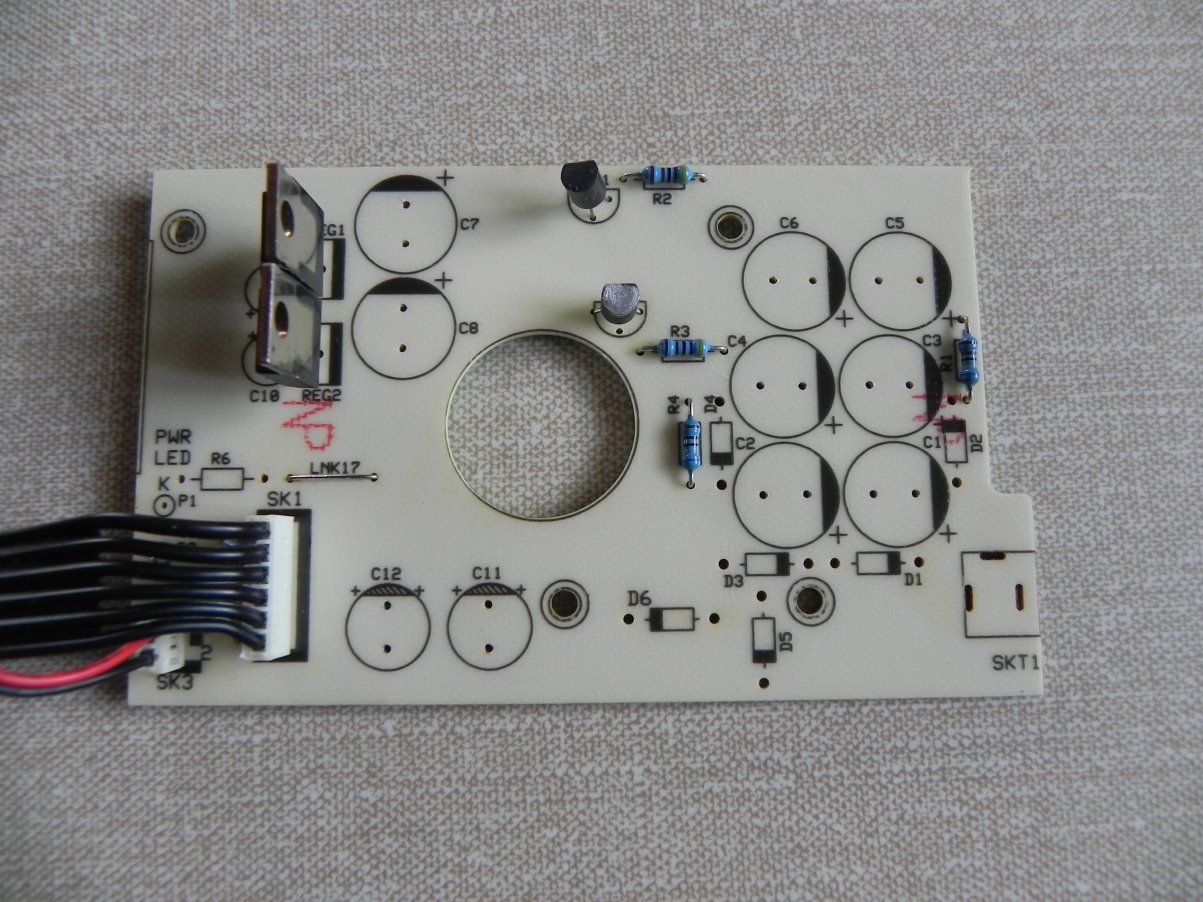 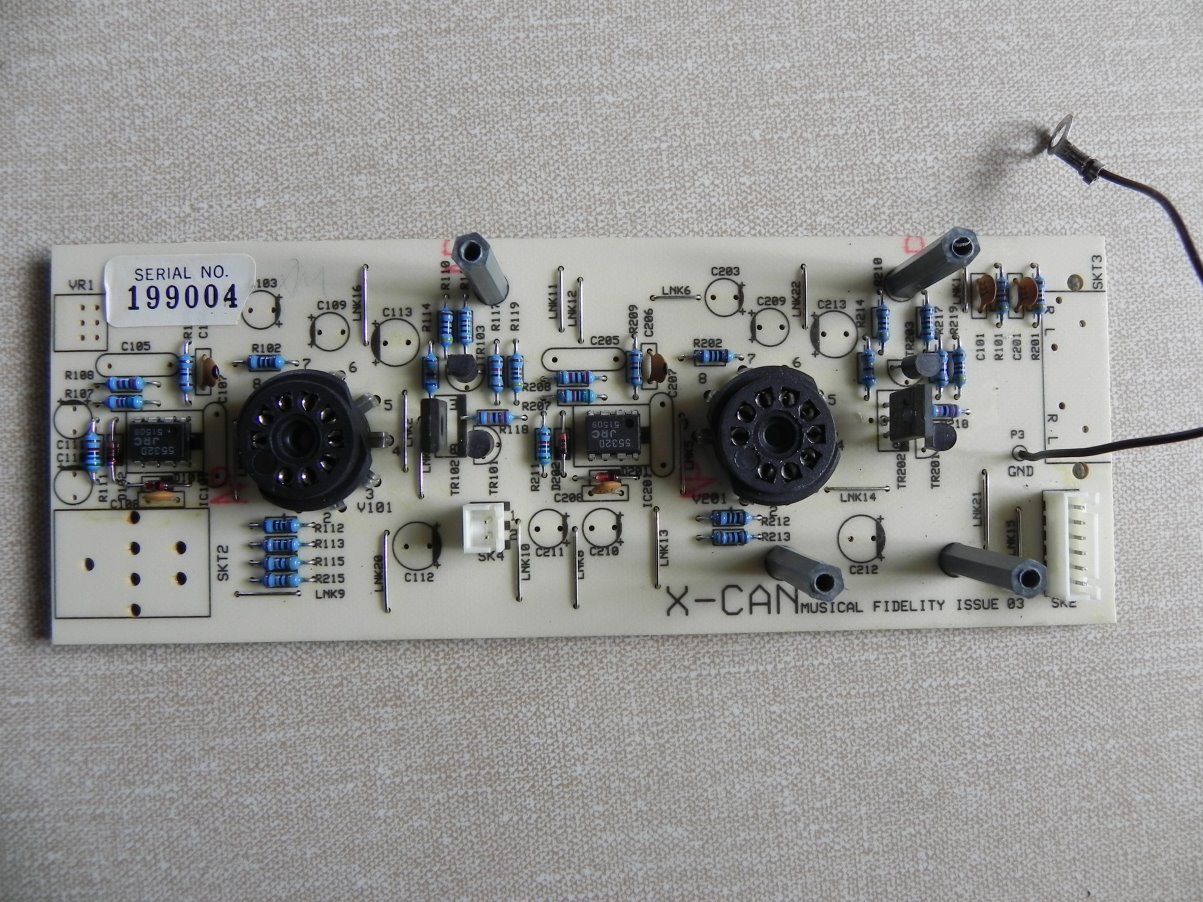 Fitted the new parts / tweaks etc. and she is now singing a VERY sweet tune indeed   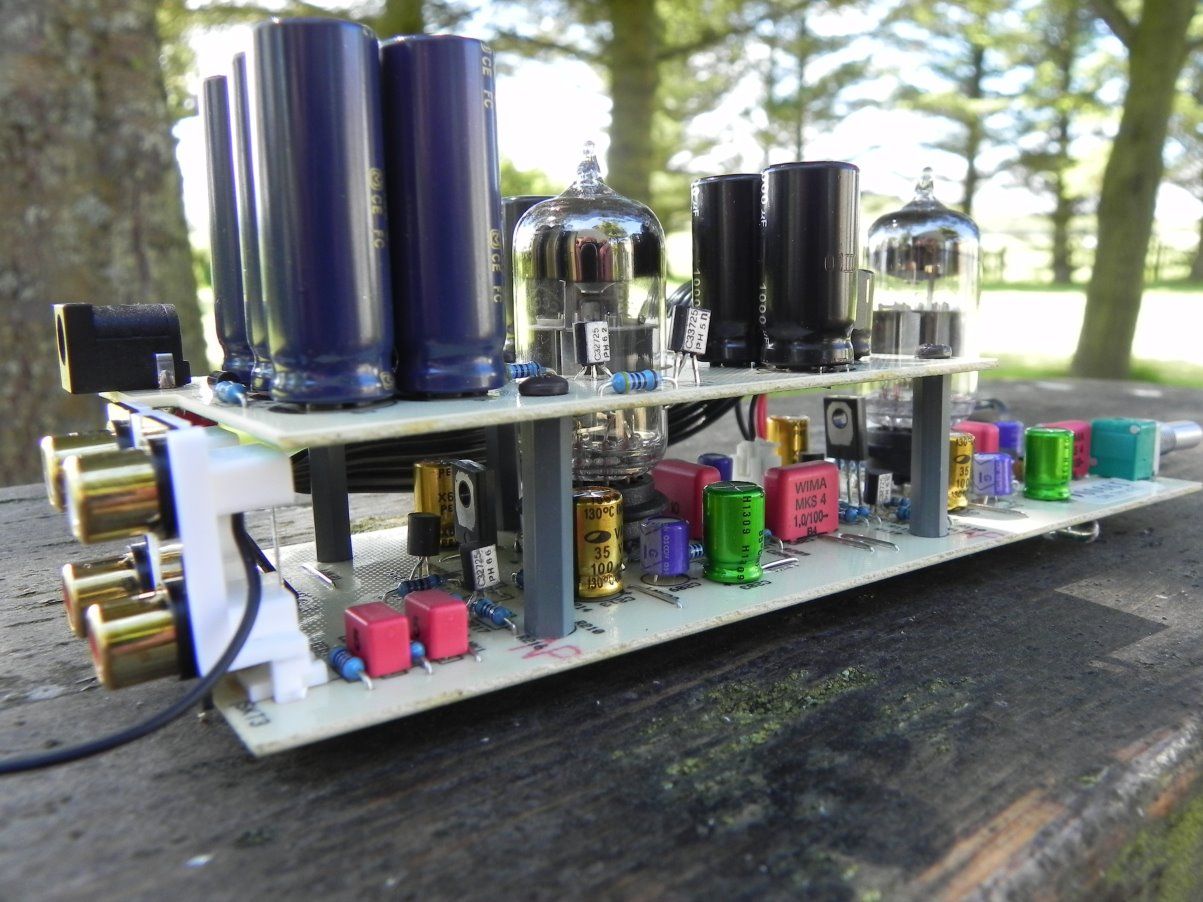 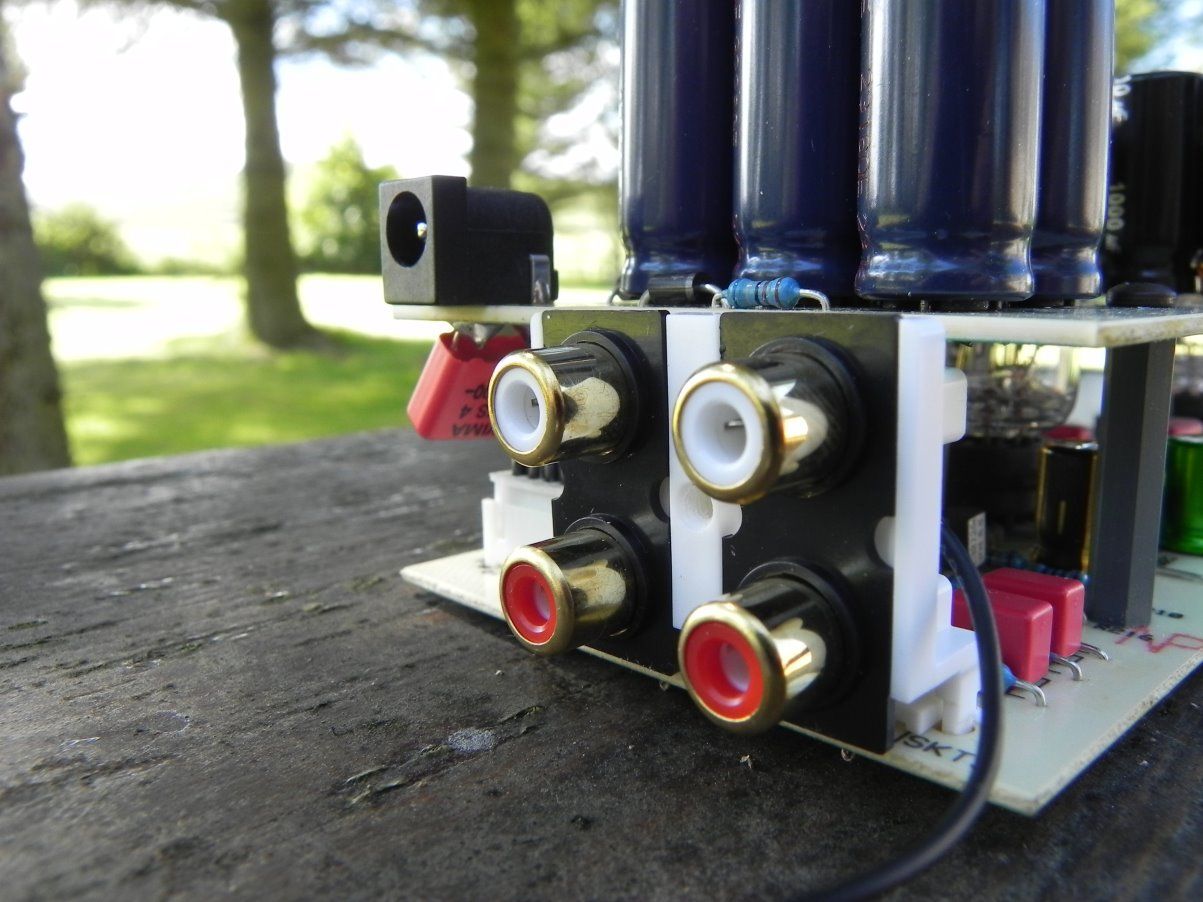 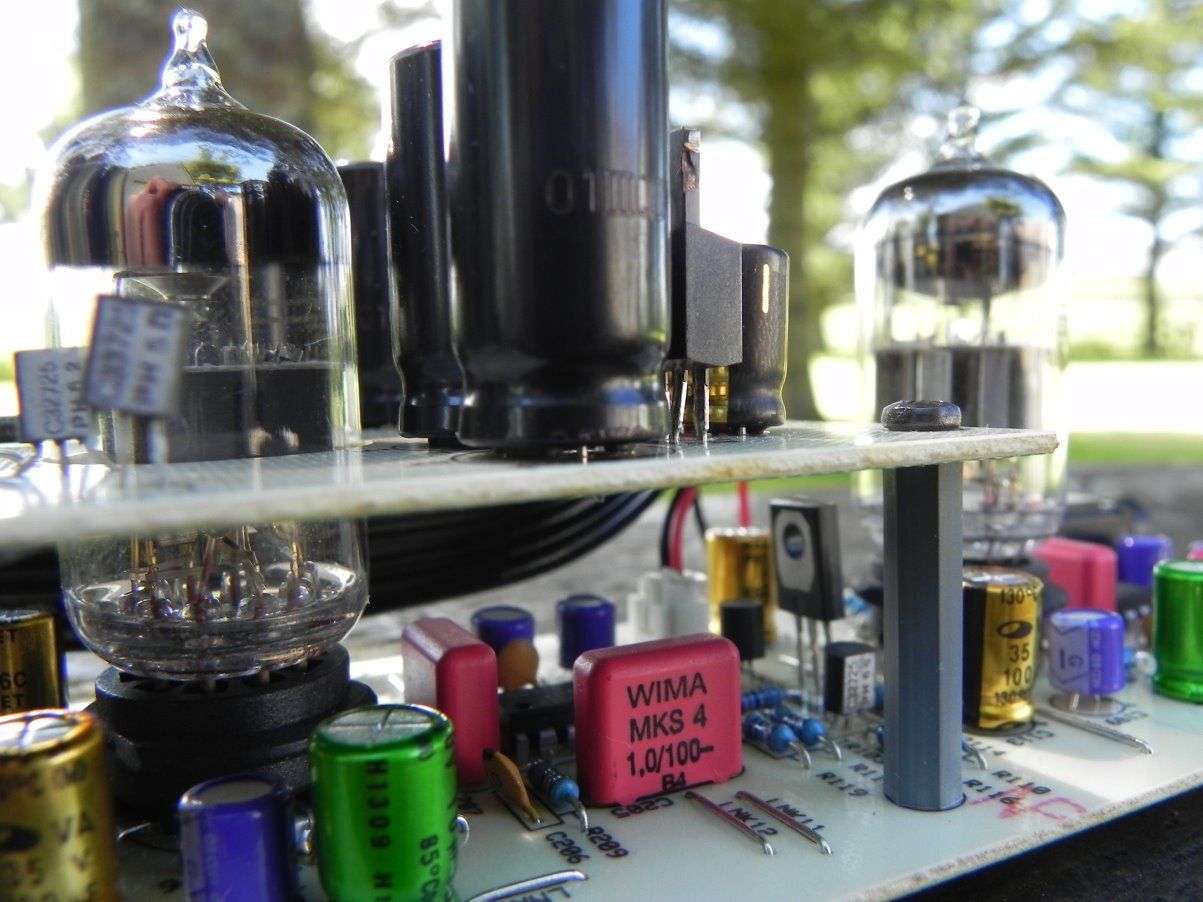 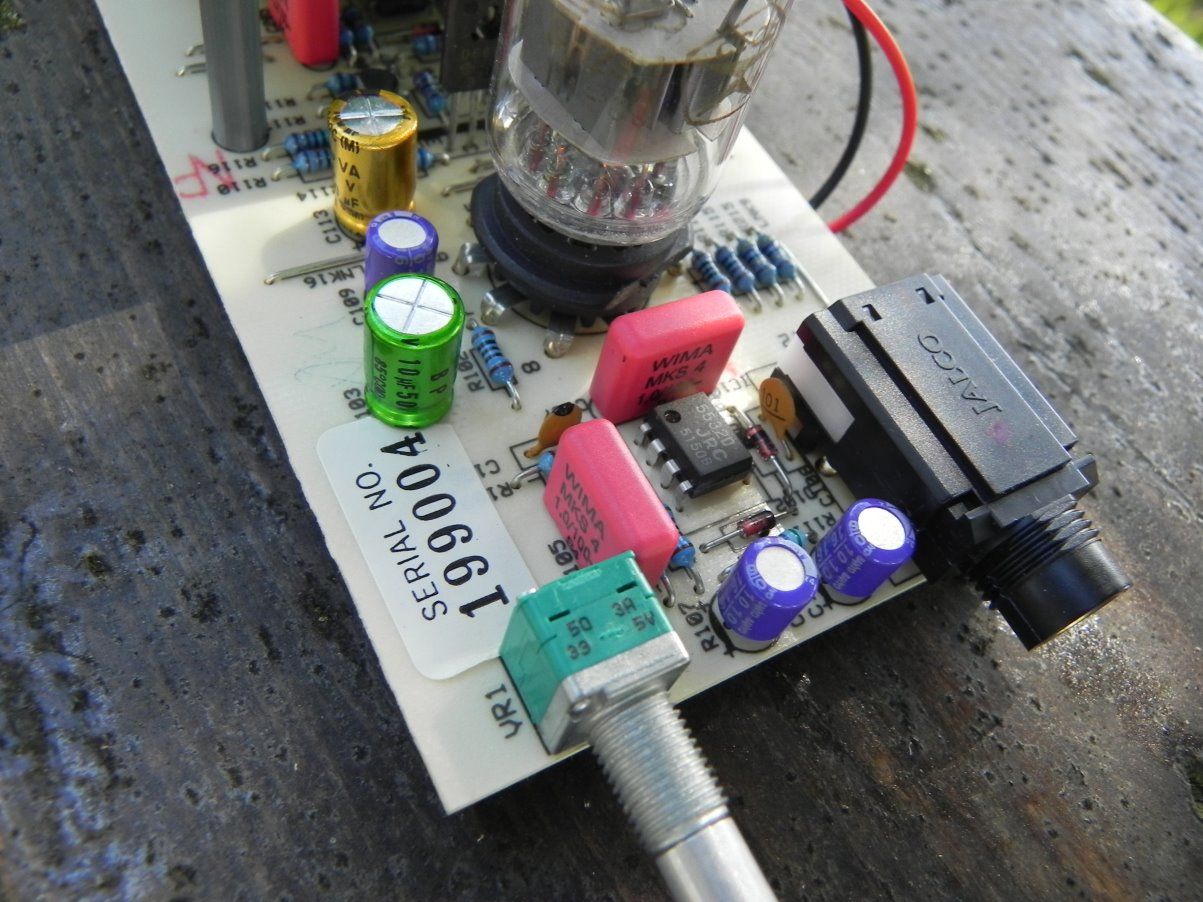 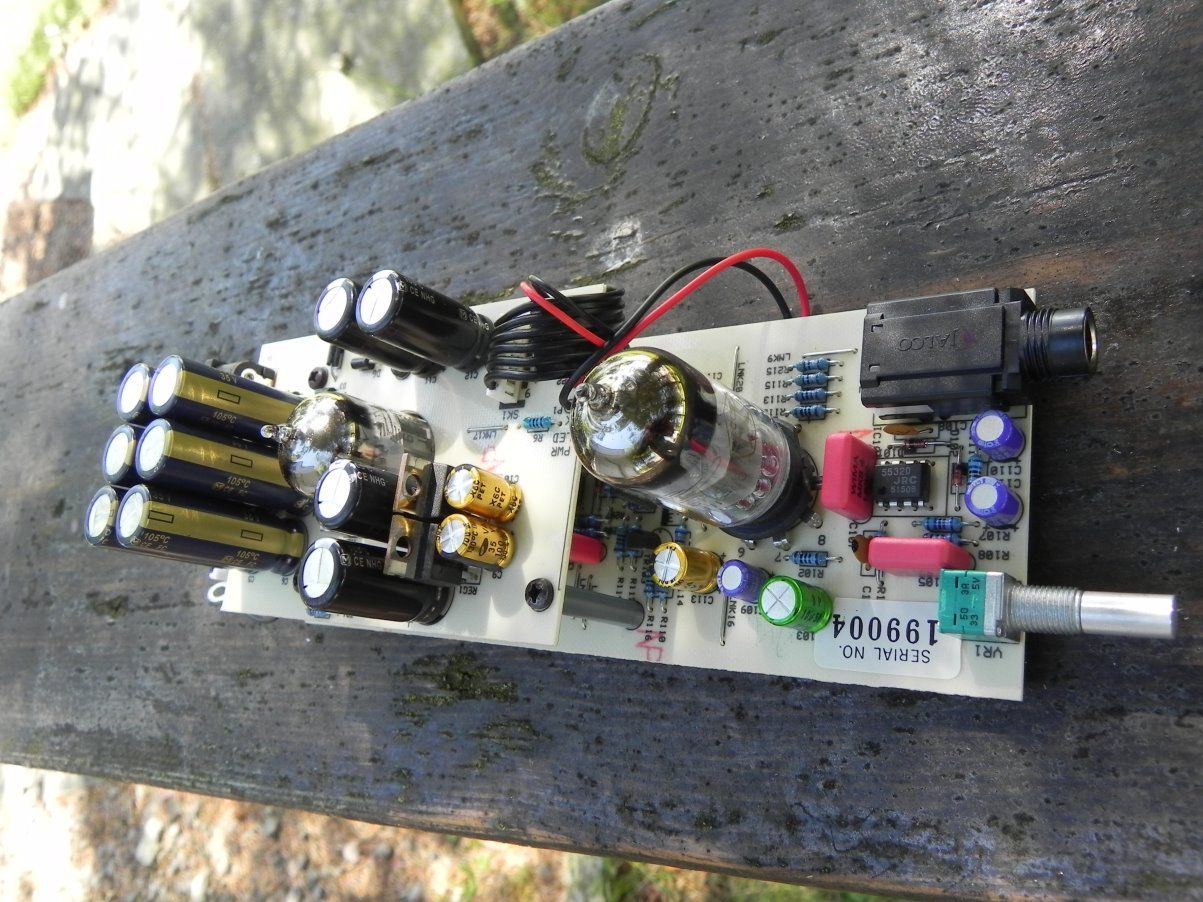 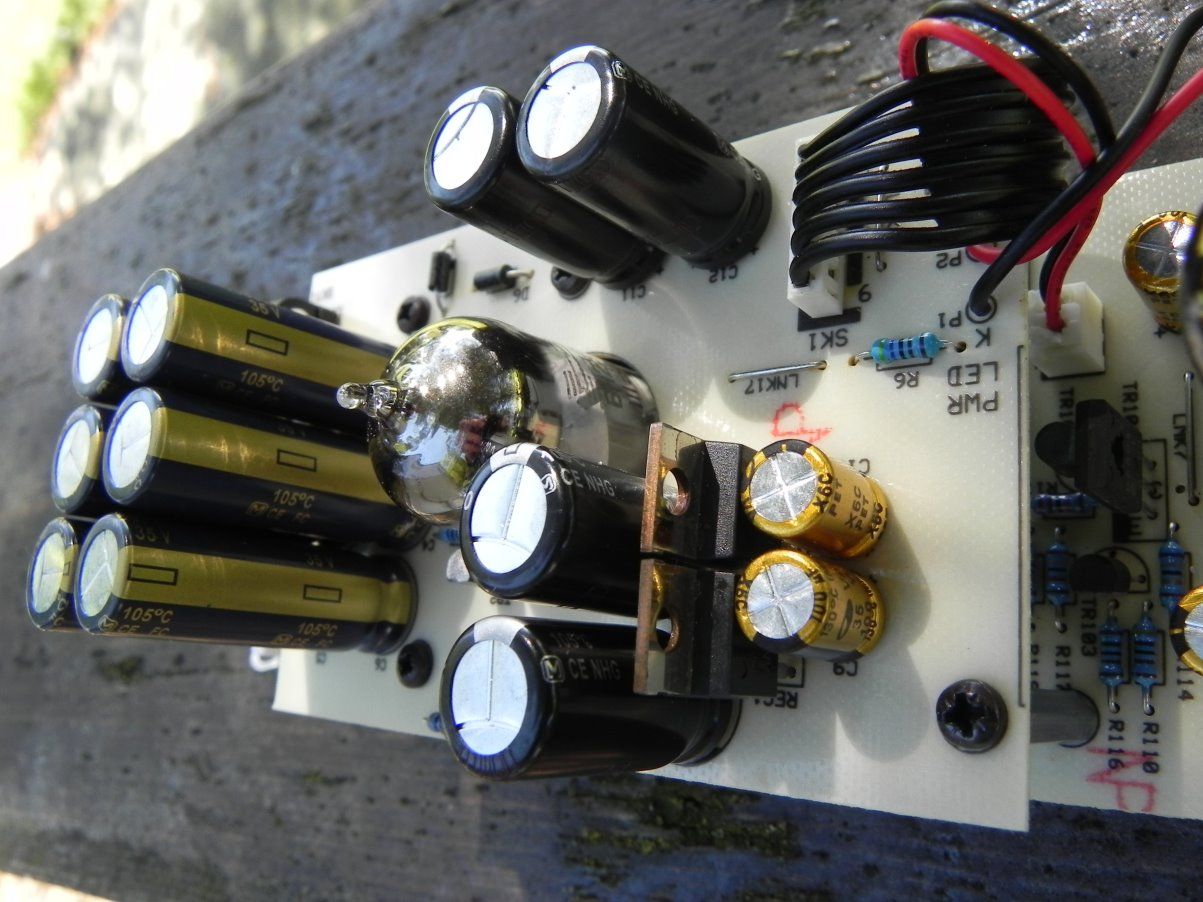 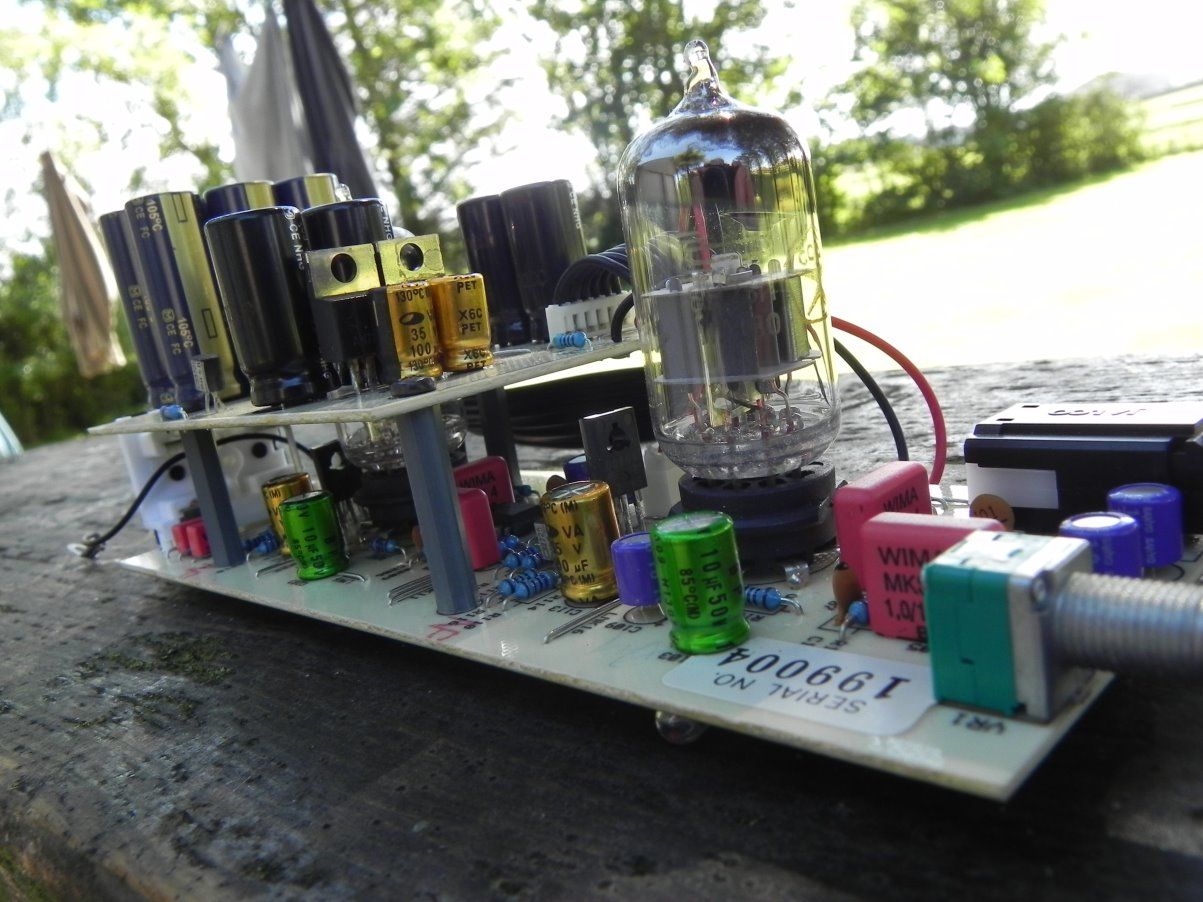 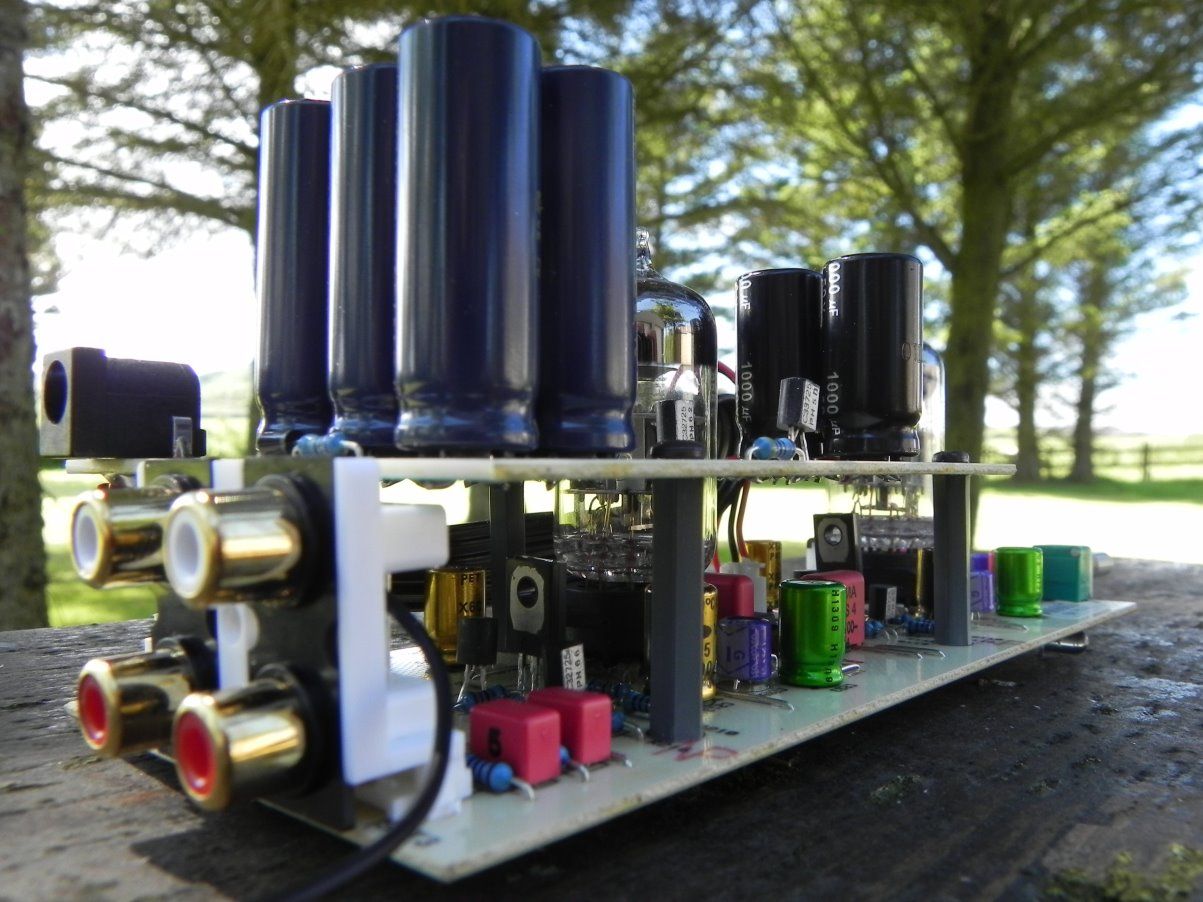 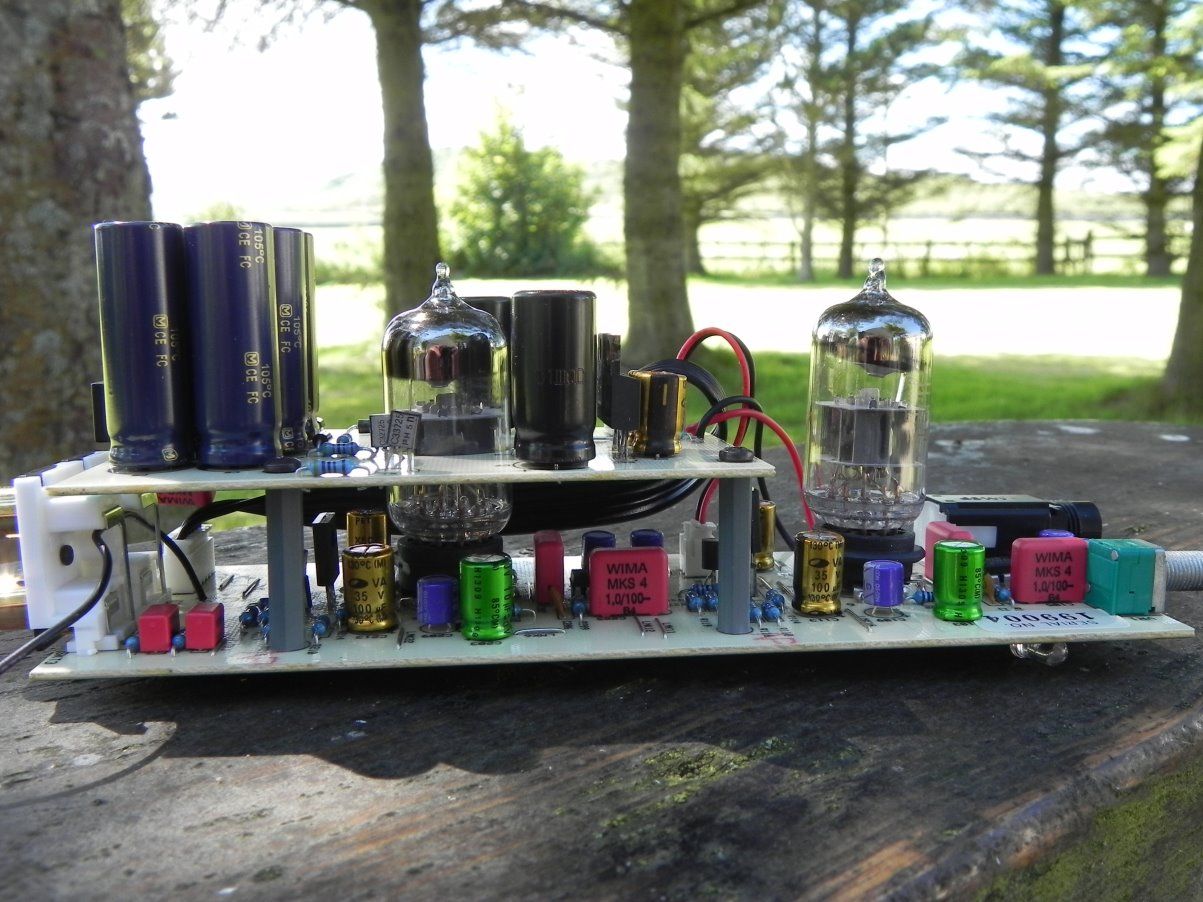 And, ladies and gentlemen...... a nice "toned down" purple LED to ice the cake  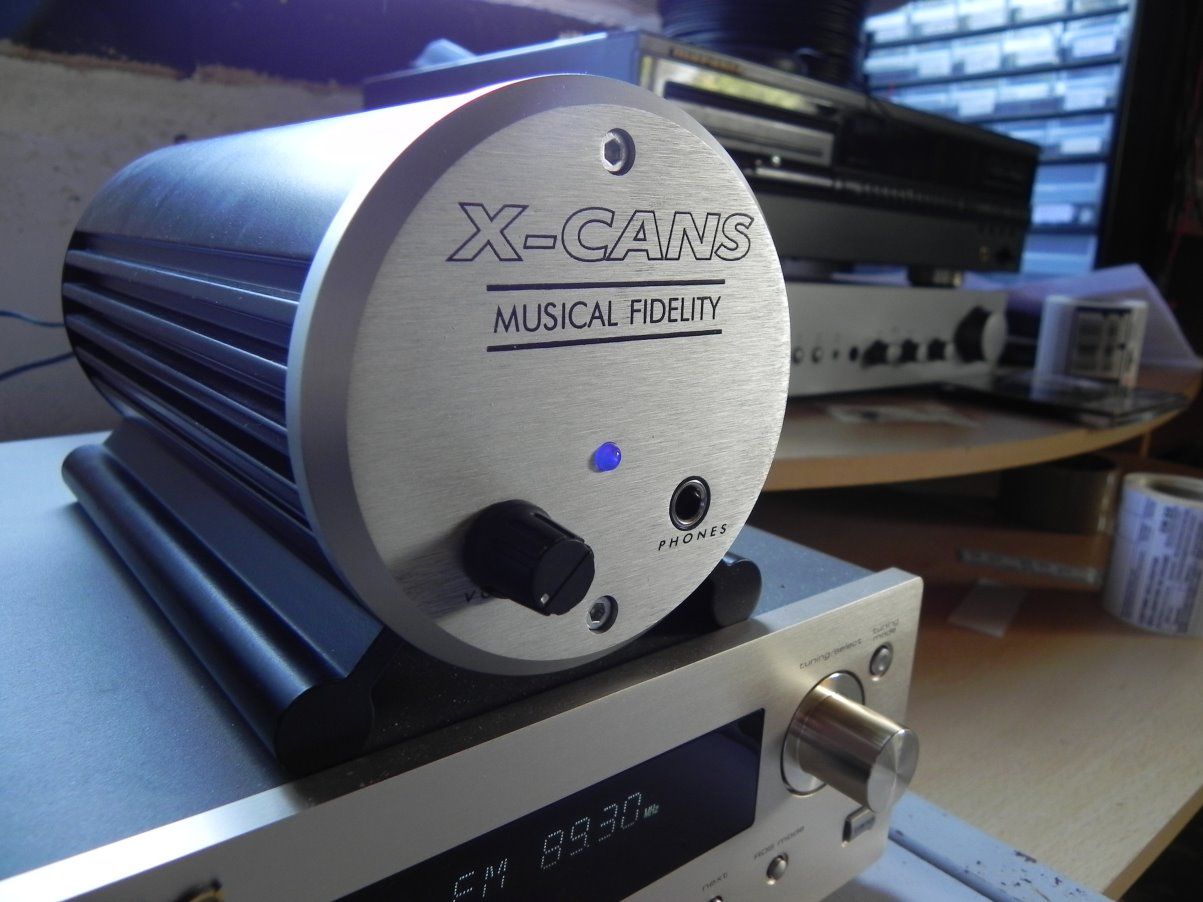 Mike. |
|
|
|
Post by chrisbaillie on Jul 10, 2014 20:51:22 GMT
Looks fantastic Mike, thank you so much for your help. Can't wait to get it back and try it:)
|
|
|
|
Post by PinkFloyd on Jul 10, 2014 21:10:53 GMT
Looks fantastic Mike, thank you so much for your help. Can't wait to get it back and try it:) She should be back with you on Monday Chris. All the best, Mike. |
|
Deleted
Deleted Member
Posts: 0
|
Post by Deleted on Jul 11, 2014 3:29:53 GMT
Hi Mike You can blame M.F. for noise via the front panel LED. They appear to have picked up noisy power for it from before the voltage regulators, so you will need to keep it's wiring well away from the Input area. Most modern LEDs are normally so quiet, that they can often be used as low voltage references in place of low voltage Zener diodes, which I have done previously in my Class A gear. Elektor magazine uses them as voltage references in quite a few preamplifier and power amplifier designs, and they were also used for that purpose in the old S.C./Jaycar H.A.
Kind Regards Alex
P.S. I like those "purple" LEDs too ! |
|
|
|
Post by PinkFloyd on Jul 11, 2014 18:55:48 GMT
Hi Mike You can blame M.F. for noise via the front panel LED. They appear to have picked up noisy power for it from before the voltage regulators, so you will need to keep it's wiring well away from the Input area. Most modern LEDs are normally so quiet, that they can often be used as low voltage references in place of low voltage Zener diodes, which I have done previously in my Class A gear. Elektor magazine uses them as voltage references in quite a few preamplifier and power amplifier designs, and they were also used for that purpose in the old S.C./Jaycar H.A.
Kind Regards Alex
P.S. I like those "purple" LEDs too ! Yes Alex, essential to keep the LED wires away from the input otherwise the amp will buzz like a bee  The Purple LEDS are quite pleasing on the eye and are not as cold and clinical as the blue.... they have a nice warm depth to them. I remove the 300ohm resistor in the V1 / V2 and replace with a 5k1 resistor, this tones them down to a "subtle" (rather than a retina burning) glow. |
|
|
|
Post by PinkFloyd on Jul 11, 2014 19:12:19 GMT
By the way.... anybody wanting to fit a blue or purple LED to their X-CANS (V1) should remove R6 and replace it with either a 4K7 or 5K1 resistor: 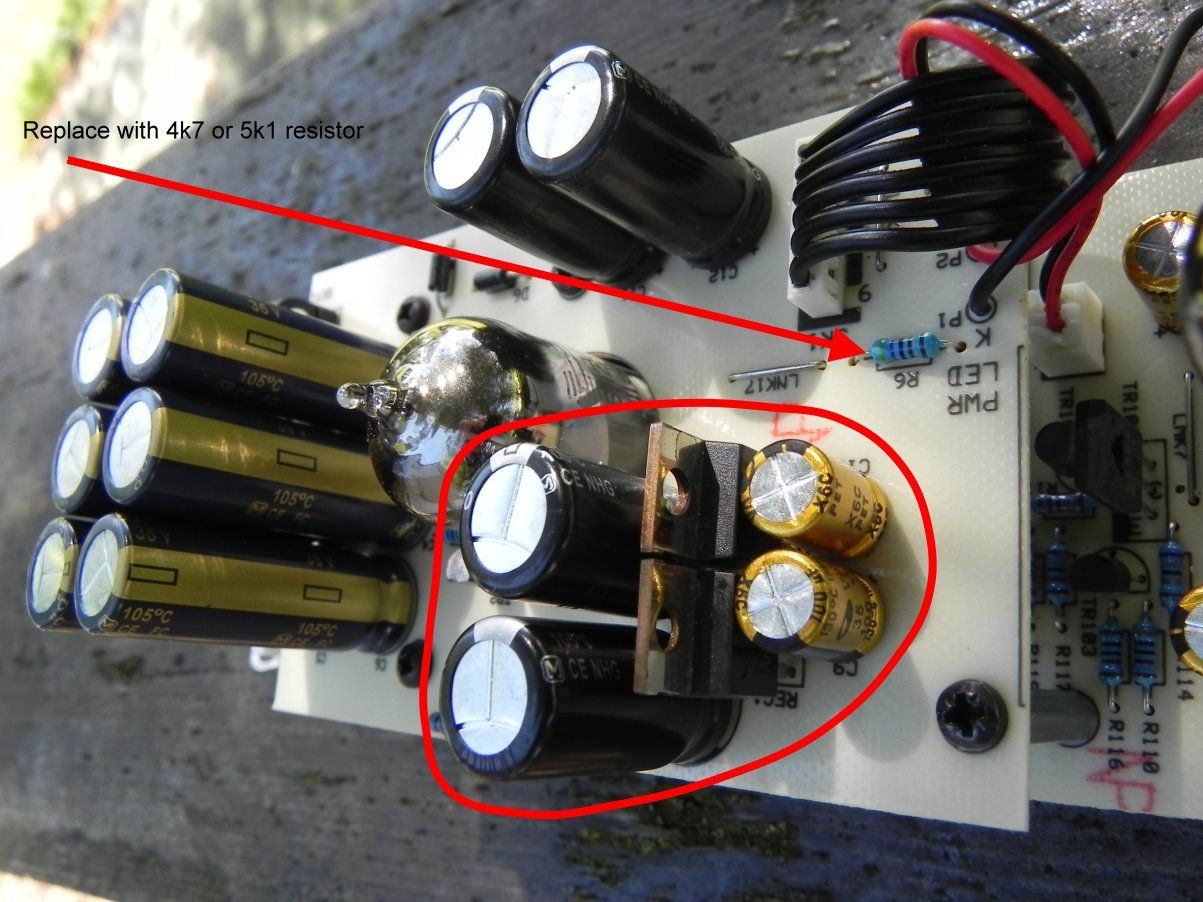 |
|
|
|
Post by PinkFloyd on Jul 11, 2014 19:36:15 GMT
The regulators run quite warm so the capacitors that are either side of them are best to be high temperature types.... the stock capacitors are 85C rated types but for the absolute best longevity 105C types should be employed. The gold caps in the circled area of the photo are Samwha VA 130C types..... these were designed to be used in the harsh environment of a car engine and are absolutely BULLET proof in all the amps I have used them in since first discovering them in 2007: rockgrotto.proboards.com/thread/1512/samwha-va-series-caps-arrivedThe black and silver caps are the Panasonic NHG series... another bullet proof cap rated @ 105C. Alex, I think you mentioned that low ESR caps were a bad idea before and after the regulators as it causes ringing but in this particular application it actually improves the sound quality..... in that original post "GNS" (Graham Slee) agreed with me when he said "It could be worth noting that low impedance electrolytics are high impedance at low frequencies and can make solid state circuits sound extremely bright. Tube circuits differ greatly, and seem to benefit by using low impedance electrolytics."Low impedance caps, after using them for over 20 years in the X-CAN series of amps, are the best by far and the "amazing" type comments (with regard to the improvement in SQ) are totally expected because they improve the sonics of these amps by a very considerable margin. Just saying that I 100% stand by my "ears" to this day. |
|
Deleted
Deleted Member
Posts: 0
|
Post by Deleted on Jul 11, 2014 21:32:49 GMT
Hi Mike
I understand and accept what you are doing in order to try and squeeze a little more HF detail out of them.
Have you tried Panasonic FMs there?
Regards
Alex
|
|
|
|
Post by chrisbaillie on Jul 12, 2014 11:36:19 GMT
Only one thing I caught you out on Mike - it arrived this morning, not Monday! Sounds great, whooshing noise gone but much more extended, cleaner top end, higher resolution overall. That was from cold and after a 4 hour 100km cycle hilly cycle ride so I'll try it later when system's warmed up and I've cooled down:)
|
|
|
|
Post by PinkFloyd on Jul 12, 2014 20:00:10 GMT
Only one thing I caught you out on Mike - it arrived this morning, not Monday! Sounds great, whooshing noise gone but much more extended, cleaner top end, higher resolution overall. That was from cold and after a 4 hour 100km cycle hilly cycle ride so I'll try it later when system's warmed up and I've cooled down:) Hi Chris, That was good going considering I posted it yesterday afternoon.... all the way from the top of the UK overnight.... The Royal Mail is superb! I wouldn't be in a position to try anything after a 100km cycle ride as I would almost certainly die after the first two or three kilometres  Although I spend every afternoon in the Thurso bike shop and probably know more than most about bikes the furthest I could get without running out of puff / exhausted would be a mile tops.  Give the caps a good 100 or so hours before expecting the best and then gradual / subtle improvements over and above that period will start to appear. All the best, Mike. |
|
|
|
Post by PinkFloyd on Jul 12, 2014 20:26:34 GMT
24th June 2014 Andrew Fothergill's X-10D Latest X-10D mods, matched 1980 vintage (from same batch) 6N23P valves, ceramic valve sockets, new quad phono socket, new 2.1mm DC inlet socket. Samwha VA (135C caps) employed adjacent to the power resistor, Panasonic FC, WIMA, EVOX caps fitted to the rest of the board. Ultrafast diodes fitted. These are the latest "X-TRA" capacitance mods and take the X-10D to new sonic dimensions (and then some!). Mike Just taking a moment to give some initial feedback on the x10d upgrades. You are a genius! I still have the x10d you overhauled for me 5 years ago (not to mention the little pinkie power supply). May I say that one is still going strong and there are no problems with it, so buying another second hand to get your latest version seemed a bit of an extravagance. However my first impressions are that the latest version is a significant step up, even though it might need a few more hours burning in to reach its full potential. I'm using it between DAC and amp with silver interconnects and it's giving a lovely detailed and musical sound, with decent weight to it. I don't get as much time as I'd like to listen, but a good test is how excited the kids get when I put some music on for them - the new x10d has had a very good reception from them! It's easy to spend large sums of money chasing small improvements in sound quality, but what you do is very effective and excellent value for money in my view. Keep up the good work! Thanks again, Andrew Hi Andrew, Thanks for your feedback, it's appreciated. In my opinion an "upgrade" should mean a discernible improvement in sound quality and shouldn't have to cost the earth. It really annoys me when these snake oil vendors will sell you a metre of copper clad in a fancy sleeve and charge hundreds for it claiming it's the key to unlocking the full potential of your system..... a good "honest" upgrade that doesn't cost the earth is always what I have tried to achieve and I am happy that you think the upgrade was good value for money and even more pleased that the sonic improvements are clearly obvious. With internal mods you are not "looking" at the upgrade and only your ears can be the judge.... with things like interconnects, your mind also plays a big part as you look at the £600 per metre python like "length" on your carpet and a perceived concept of "quality" enters your mind. A length of bell wire will possible sound exactly the same but replace your audio python snake with bell wire and your mind is already screaming out "cheap!".... it can't possibly be as good as the £600 length of copper in a glorified hosepipe type girth sheath..... It's actually damned easy to make interconnects and that's the one area of audio that I always avoid..... I could EASILY punt out a "Pink Python" interconnect but I know that I would be selling something that didn't make a discernible improvement and, being a person who actually has a conscience, I wouldn't be able to sleep at night if I were to sell snake oil to people. Anyhoo..... glad you are enjoying the X-10D..... gotta go now as I am working on perfecting my new range of acoustically treated beach pebbles  Mike. |
|
Deleted
Deleted Member
Posts: 0
|
Post by Deleted on Jul 13, 2014 1:17:29 GMT
Have you run out of those small white Tampon thingies that you and the Rabbit used to hang on plugs etc . ?
|
|
|
|
Post by PinkFloyd on Jul 20, 2014 19:41:15 GMT
|
|
|
|
Post by mikebrooks on Aug 8, 2014 15:51:58 GMT
Mike
What a fabulous upgrade!! This is not the same machine...I cannot believe I got such a great amp for the relatively very small amount of money it cost for the upgrades. You get 5 stars. Afterwards I got so excited I bought some Sennheiser HD800 cans to go with it.
Thanks so much.
Mike Brooks
|
|
|
|
Post by PinkFloyd on Sept 17, 2014 20:08:11 GMT
|
|
|
|
Post by PinkFloyd on Sept 21, 2014 19:36:41 GMT
20th September 2014 - Stuart Washington's X-CAN V3 Replaced all the electrolytic caps with high quality Panasonic FC / NHG and Nichicon MUSE types. Fitted extra capacitance in the power section of the amp which really does improve things big time. The two (per channel) 220uF non polar coupling caps (440uF per channel) have been replaced by one Nichicon MUSE 1000uF per channel. People say that having one output coupling capacitor in the signal path is bad but to have two is even worse! The single 1000uF capacitor (per channel) is the best solution and brings the cutoff frequency for 32 ohm 'phones down to 4.97Hz (it's 11.3Hz with the stock 440uF) so this gives any 32 ohm headphones that can go down as low as 5Hz the chance to give off their best in the bass department. The valves are VERY closely matched with particular attention to the gain on both sides of the valve..... I have managed to select a pair that are left channel: Side 1 = 37.9 / side 2 = 37.7 - Right channel: Side 1 = 37.4 / side 2 = 37.6 this helps to ensure that distortion figures are kept to the lowest possible. Measurements are only taken once the valve has heated up and not after a few seconds... this is why proper matching takes such a long time but, fortunately, most of the Russian 6N23P-EB are pretty close and I can match a perfect pair from a handful of valves rather than spend hours sifting through a large box of crap trying to match one good pair. I have taken the input coupling capacitors out of the circuit and jumpered over the pads with a ferrite link. I know a few people claim that the ferrite links aren't necessary / have no benefit but my ears tell me differently. One thing is CERTAIN, they do not do any harm and the input is a great place to put them to iron out any gremlins that "may" want to enter into the signal path. I have also replaced a couple of the wire links with ferrite links in the middle of the board..... again, there is no harm in doing this but potential benefits, my ears tell me there are benefits  The Gold plated quad phono socket was a bit oxidised so I fitted a new one. All of my kits now come complete with a new gold plated quad phono socket as standard (and the ferrite links, as well as input coupling caps so you can make your own choice) as I think it a good idea that these should be replaced, as a matter of course, on older amps..... the signal input connection is the entry point for the signal being fed into the amp so much better to have a nice new socket than an oxidised old socket. I have also replaced the standard plastic Valve sockets with ceramic ones, the ceramic sockets tend to have a mightier grip on the valve pins and, thus, better connectivity..... I can't (honestly) say that a ceramic valve socket makes any difference to the sound quality but I CAN say that a ceramic valve socket will hold those valves firmly in place during transit! You could drop the amp from a 50 storey building and the valves would still be gripped tight by the ceramics! The cheap MF sockets are fine but are not designed for a lot of valve rolls.... the sockets soon widen and get sloppy.... The ceramics remain as tight as a virgin roll after roll  24 hour on loop test and sounding absolutely sublime! 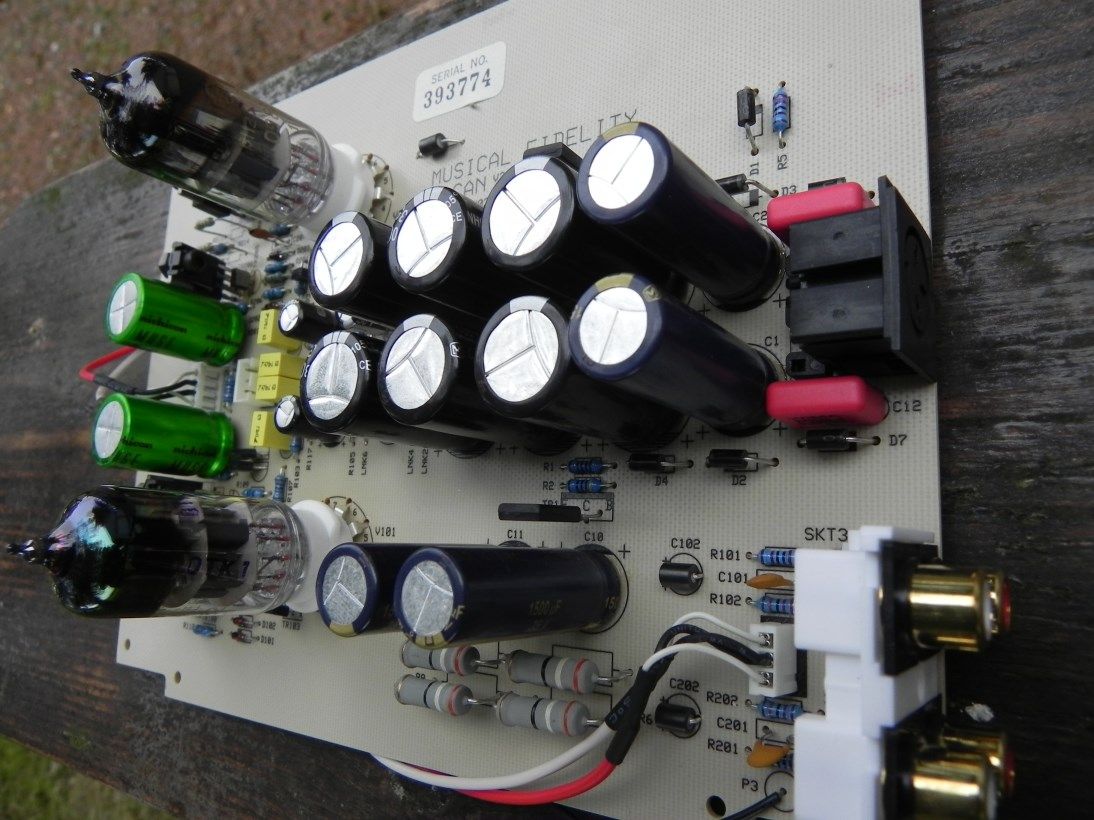 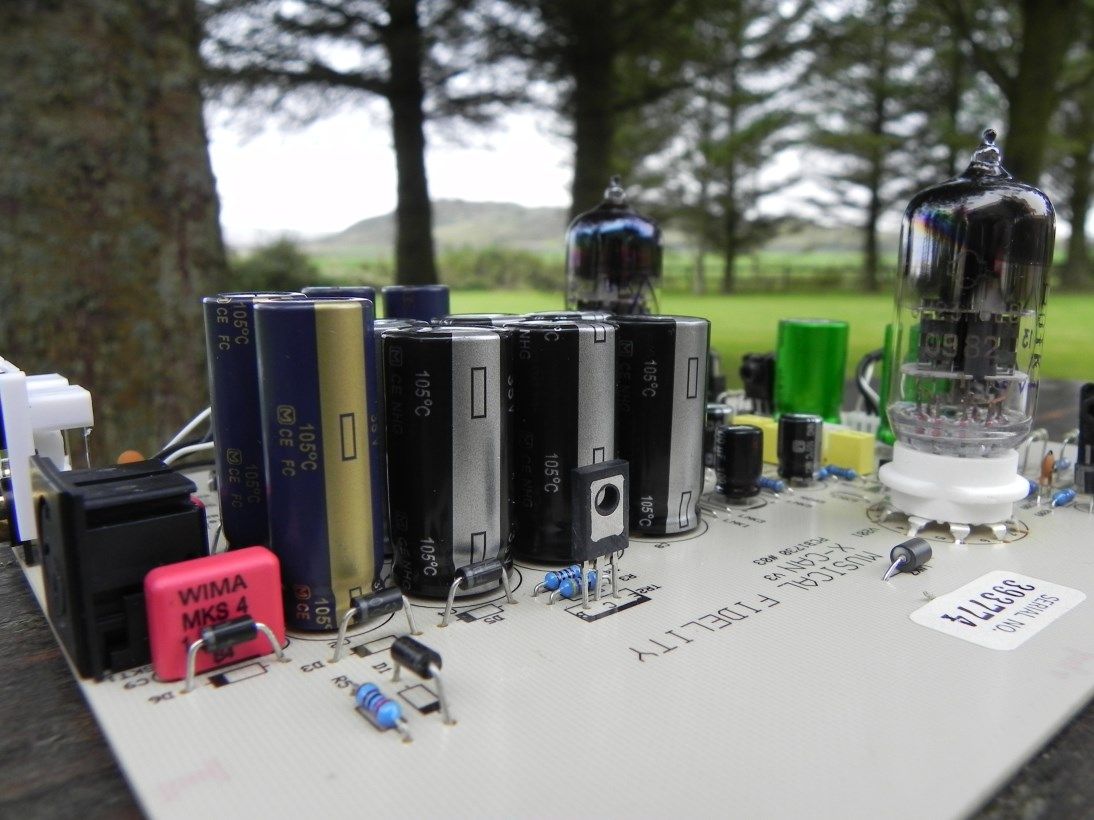 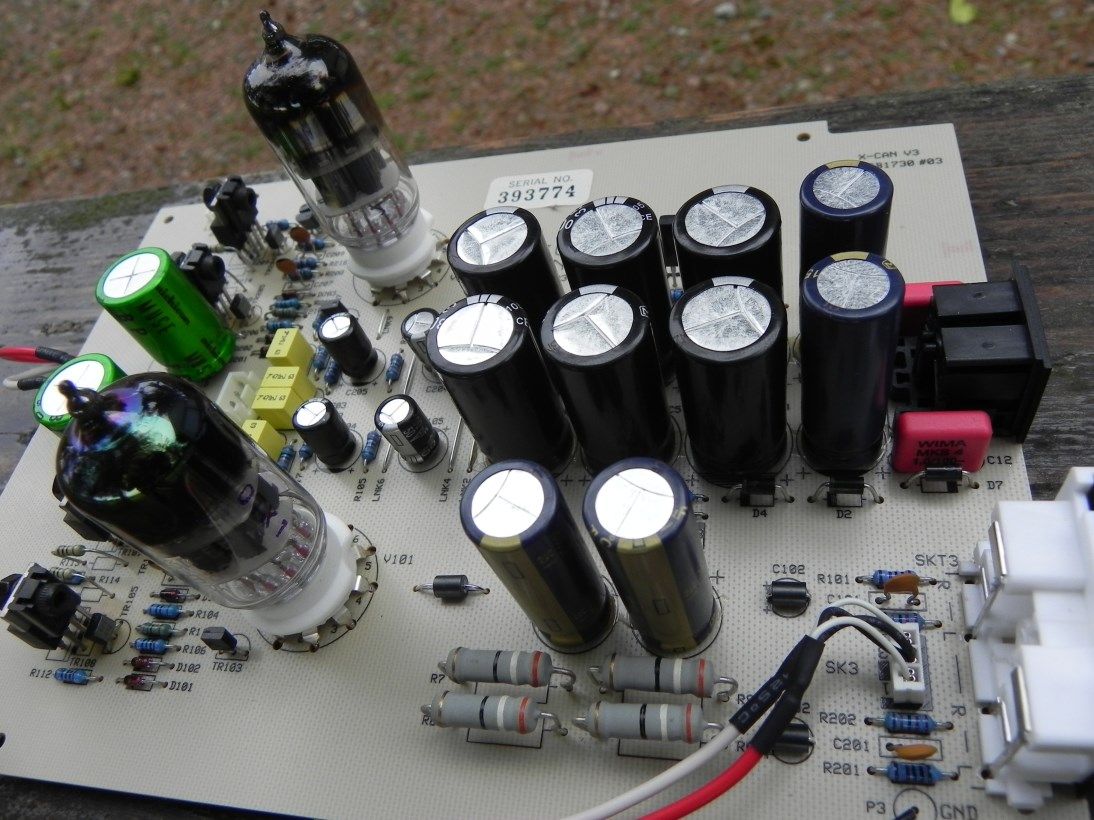  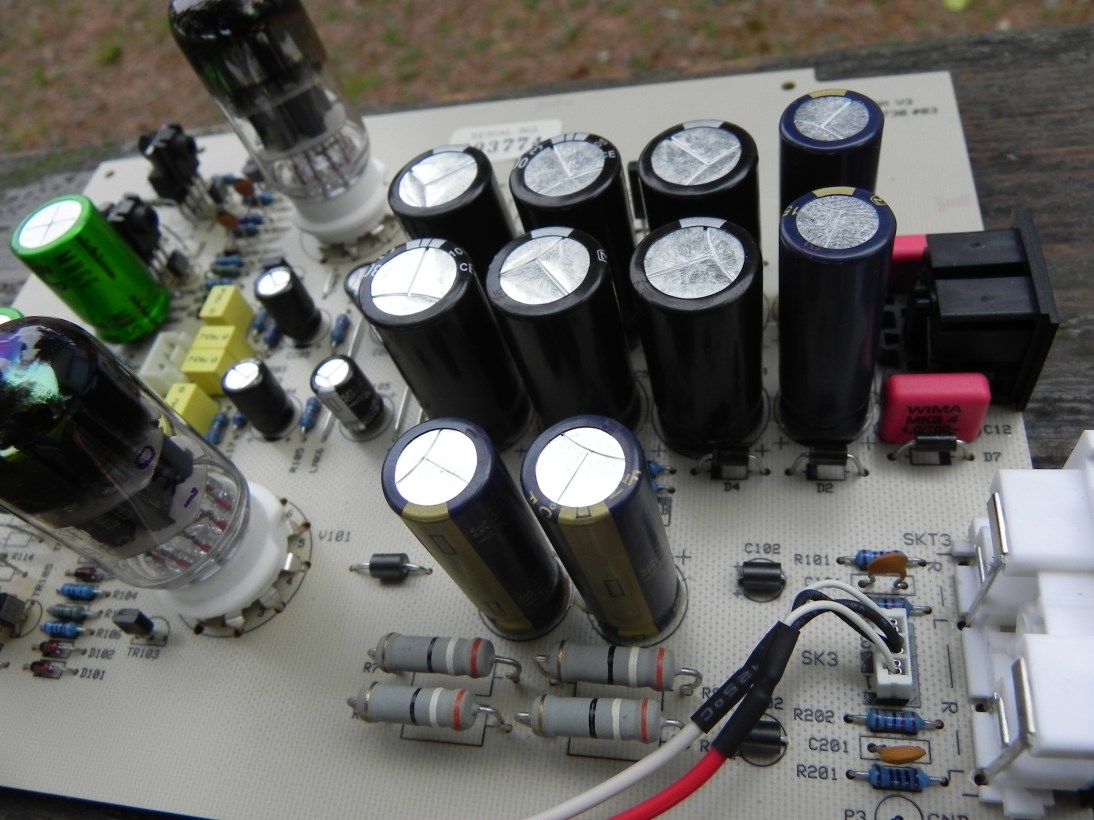 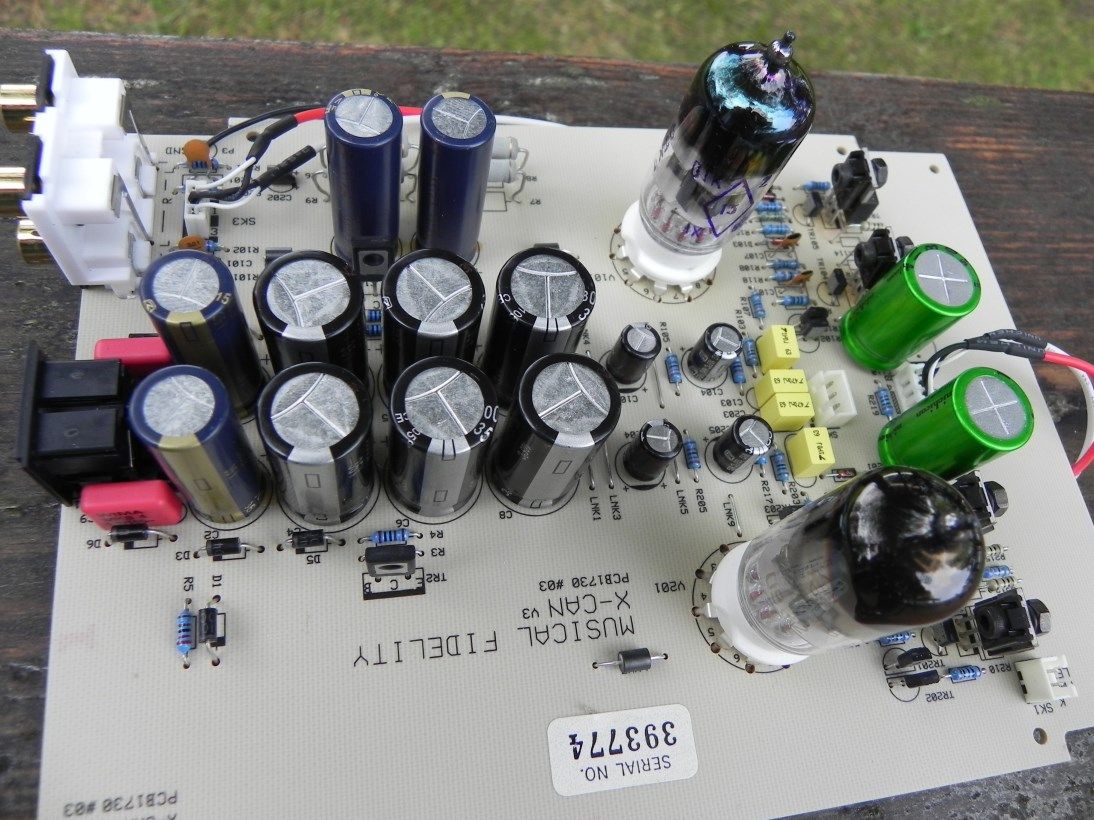 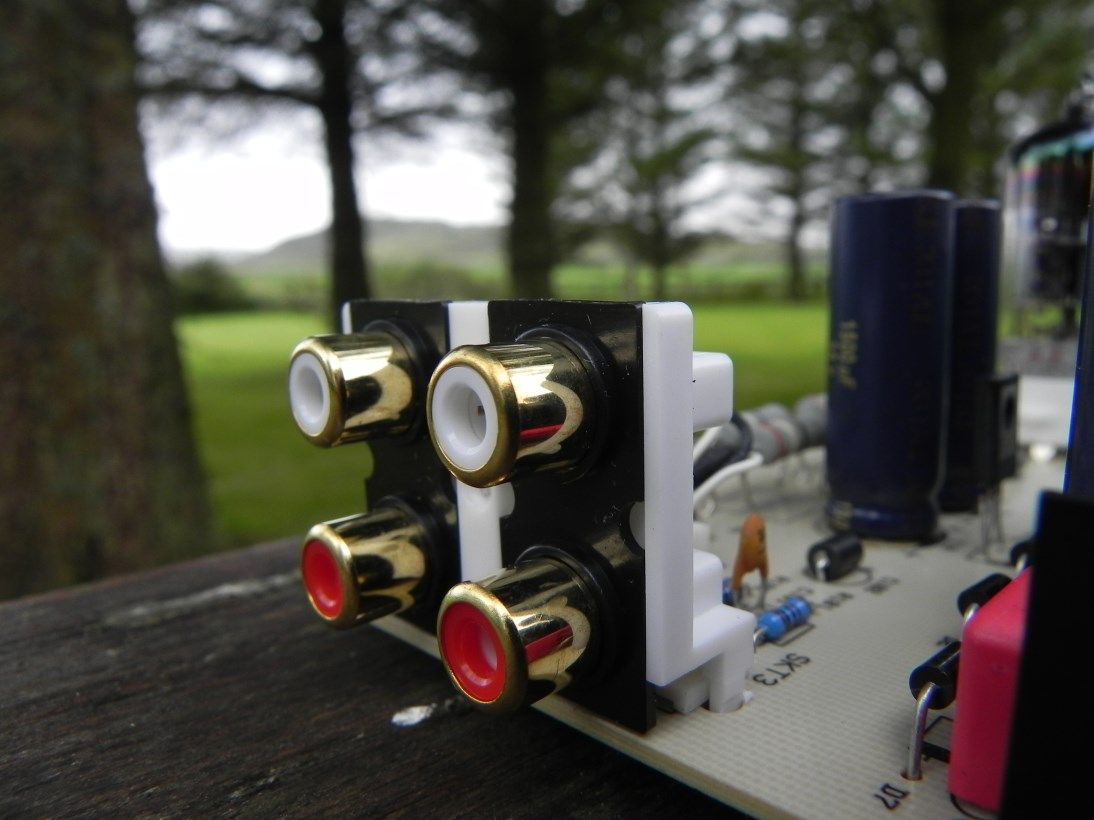 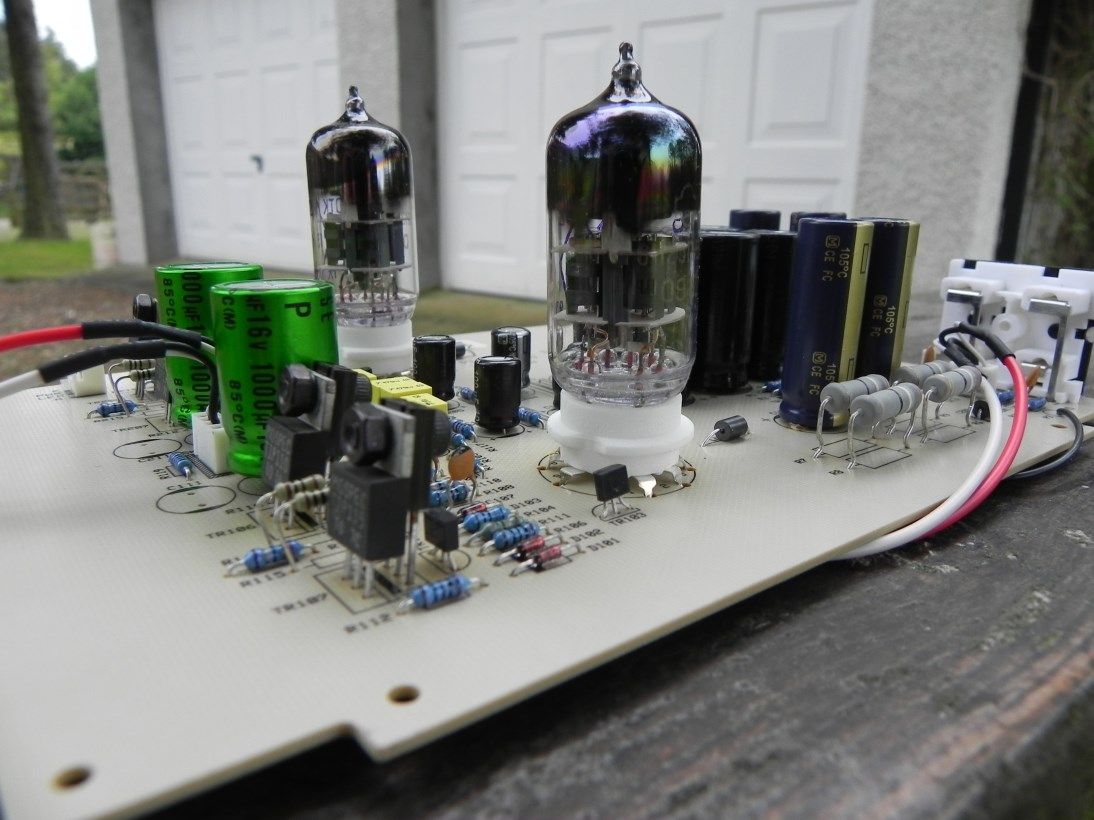 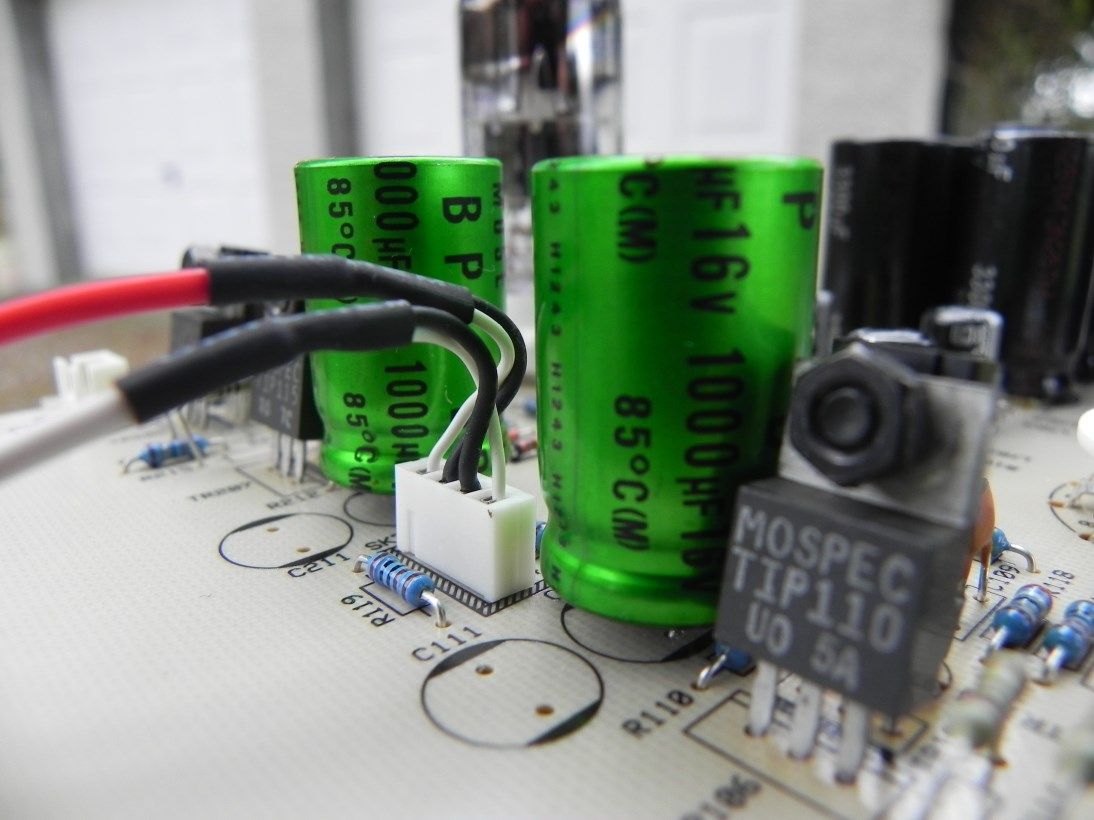 |
|
|
|
Post by PinkFloyd on Oct 2, 2014 20:01:11 GMT
|
|
|
|
Post by PinkFloyd on Oct 19, 2014 19:47:08 GMT
19th October 2014 - Stephen Hau's X10-V3 buffer X2 Stephen liked the changes to his Musical Fidelity X10-V3 buffer so much he sent me his other V3 up for modification. Modifications were identical to the above ^ apart from the 6112 valves which were from a 1980's JAN / Philips military batch. Absolutely sublime sound quality, if I may say so  I hope Stephen doesn't mind me quoting him, here is what he had to say about the last buffer I modded for him: "Hi Mike, Received the shipment this morning just after 9am. Connect the X10 and little pinkie with a 8 years old cheap CD player ( €100 ). Audition for over five hours. I can't believe it sounds like a cd player priced one and half to two Thousand Pounds. It's Fantastic! Thank you for your hard work. What do you think if put it between a hi end solid state pre and power amp? Did anyone experience in this setup? I like to send you another X10 for the same modification next week . Best regard, Stephen" It always makes me happy when I receive feedback like that and is confirmation that I am not going deaf  A few pics of Stephen's X10-V3 after the mods:  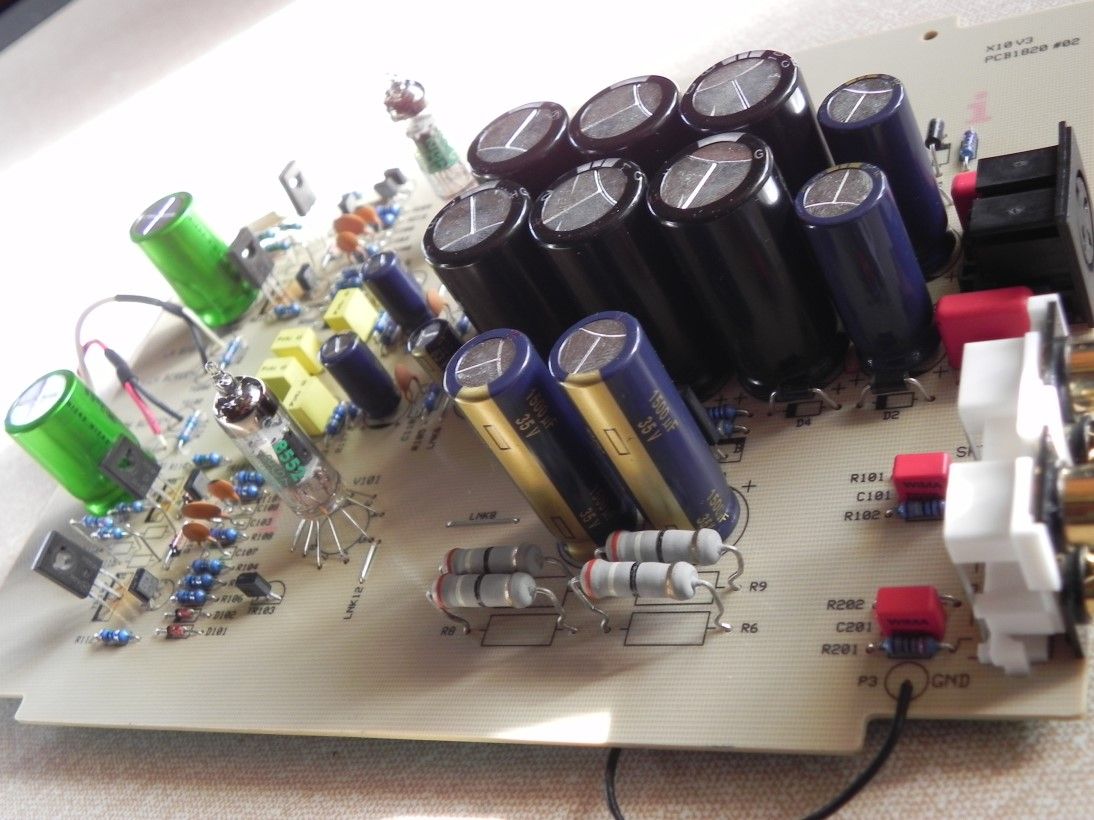 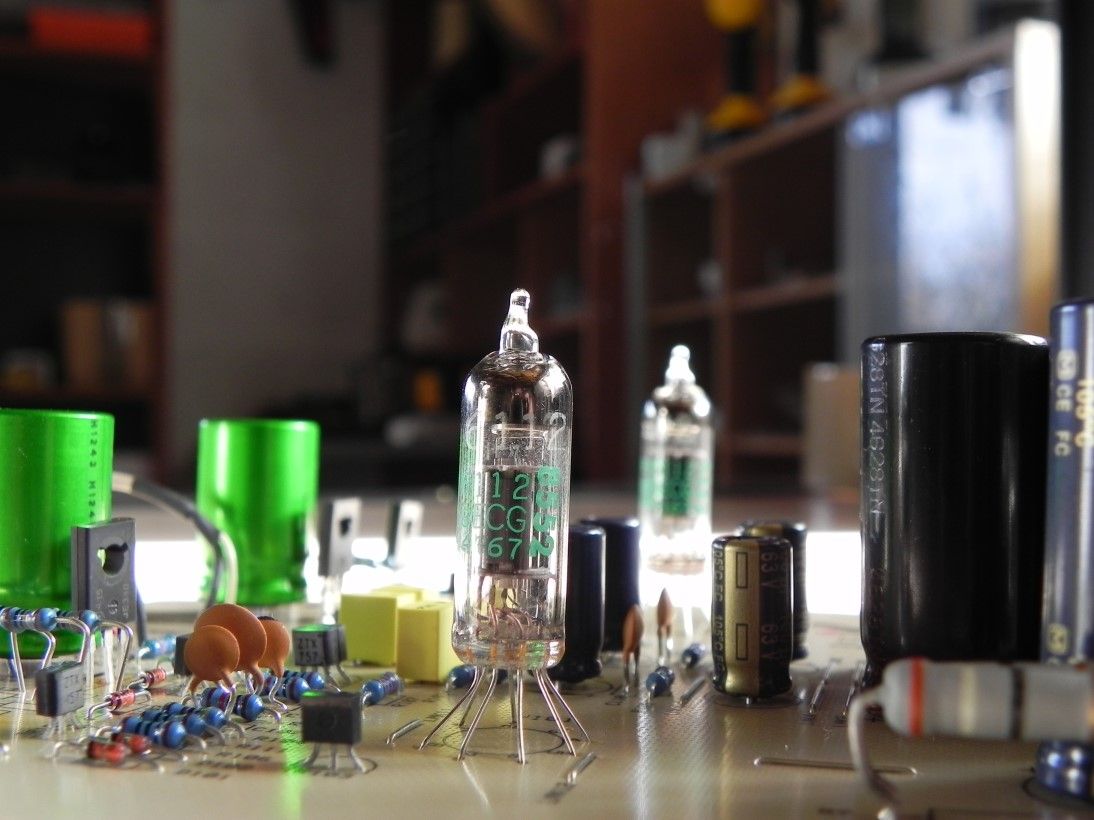 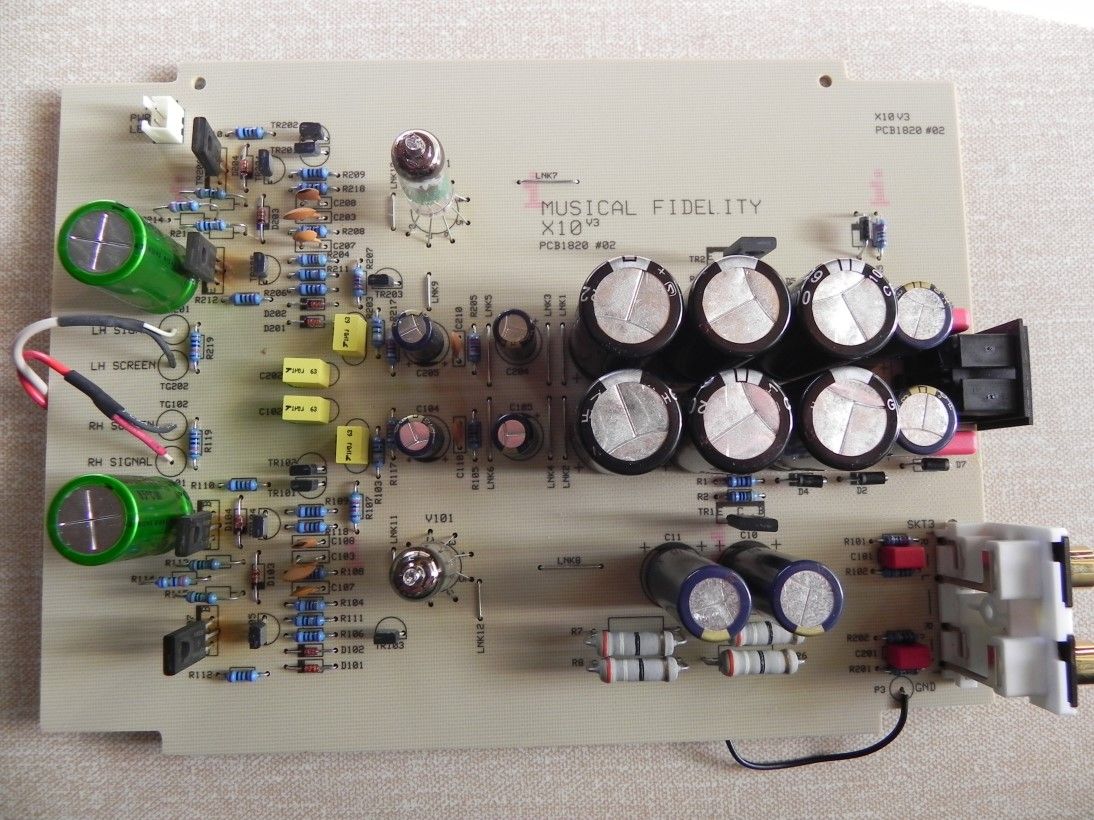 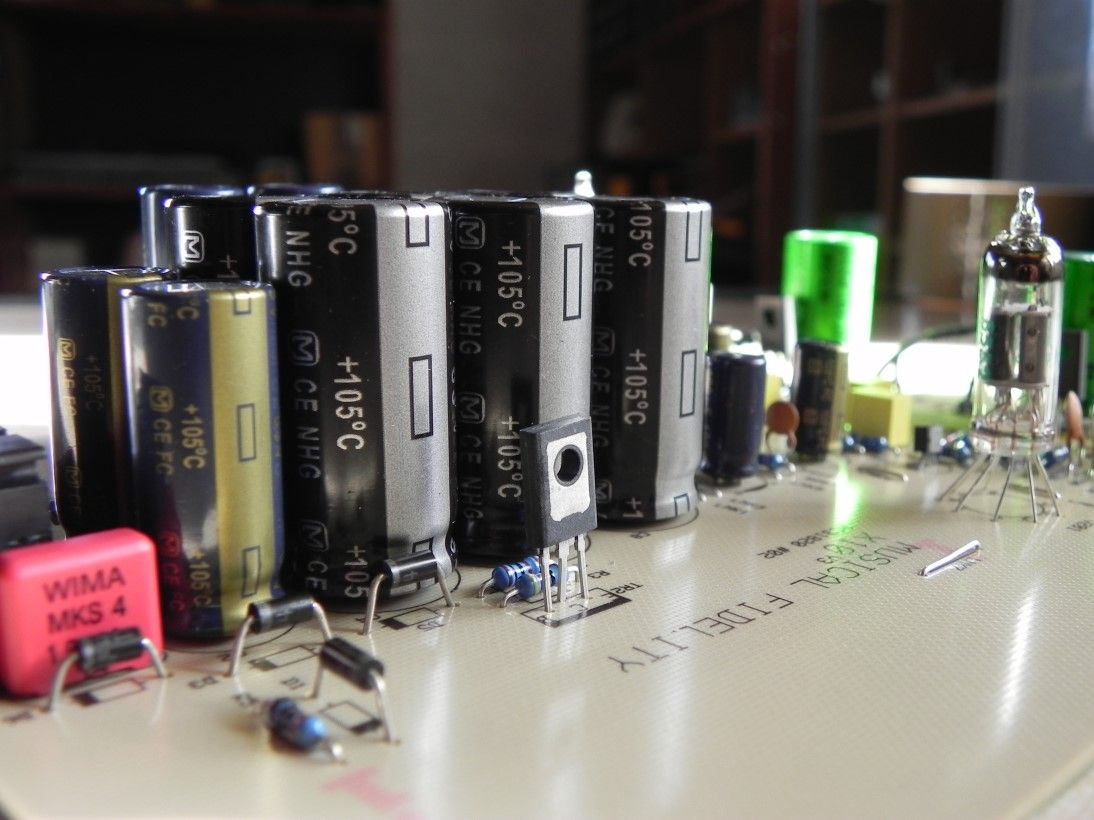  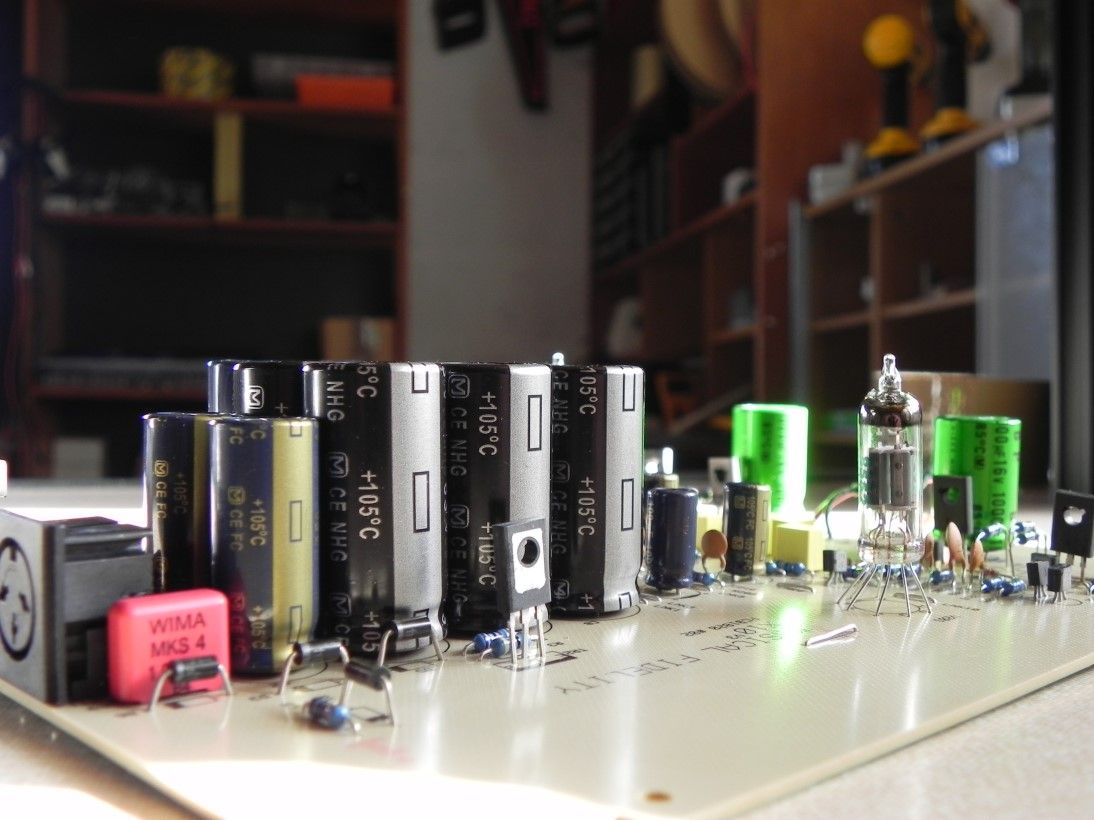 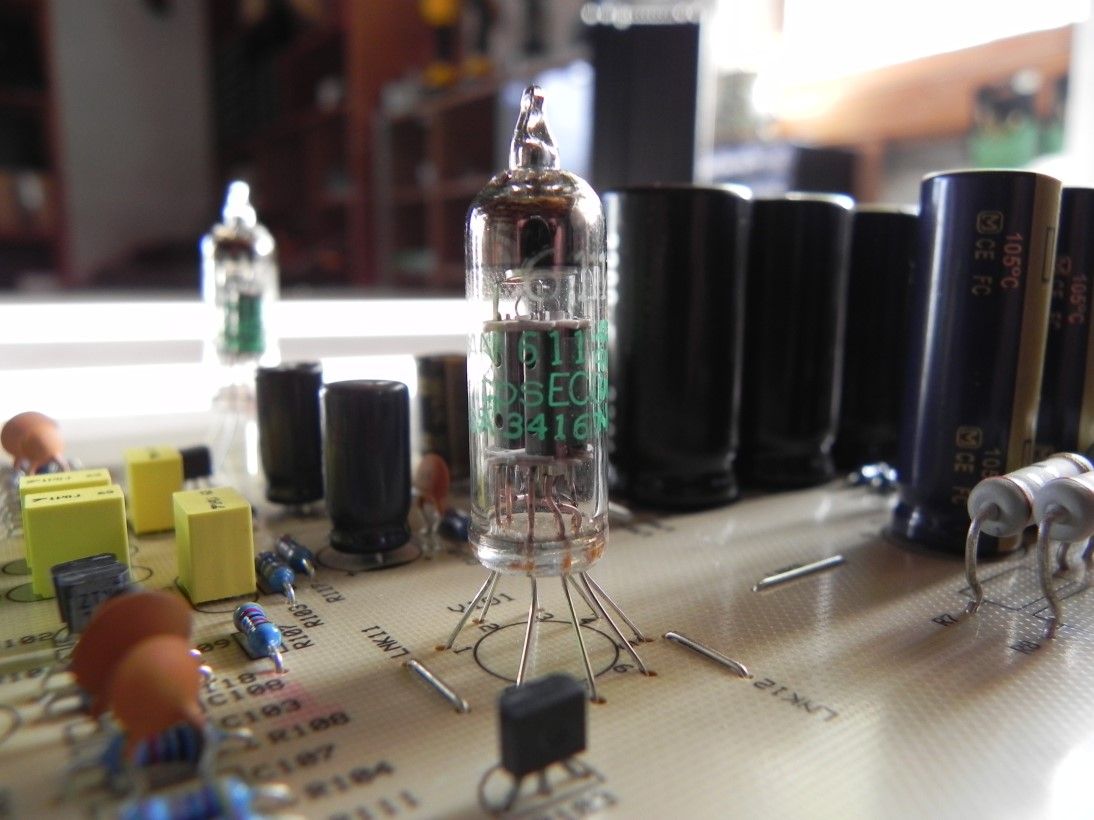 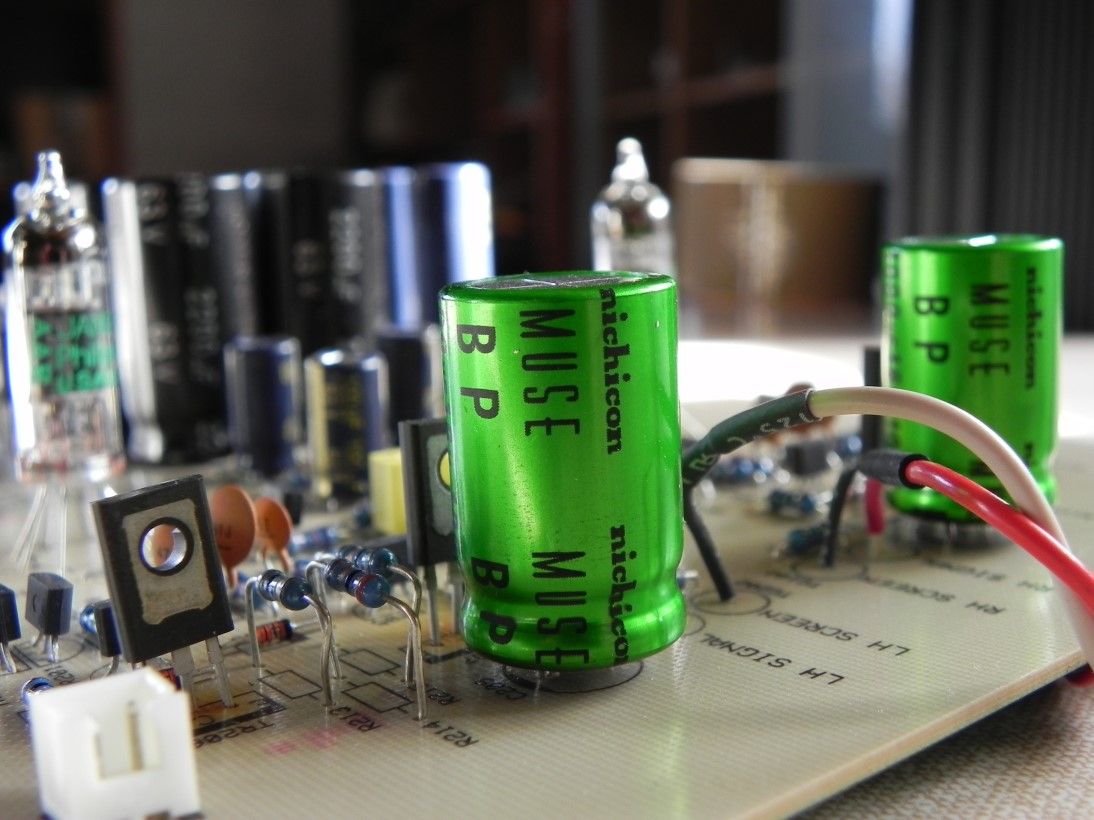 |
|
Deleted
Deleted Member
Posts: 0
|
Post by Deleted on Dec 20, 2014 11:45:26 GMT
Hi, Mike. Thank You for great and very attractive work. Your thread inspired Me to renew my pretty old X-Cans v.1 I bought in 1997  . I see You use BB brand (TI now ) OPA2132 , OPA2134 as main choice to replace. Did You try members of AD family of operation amplifiers: AD823,AD826,AD8620 and what is your opinion ? May be You tried: LM4562, LM6172, LT1364 . I see you replaced C106 , C206 caps. near DIP8 socket in some mods on WIMA polypropylene, is it concerned with operational amplifiers You changed ? Best Regards, Sergey |
|
|
|
Post by PinkFloyd on Dec 20, 2014 23:13:11 GMT
Hi, Mike. Thank You for great and very attractive work. Your thread inspired Me to renew my pretty old X-Cans v.1 I bought in 1997  . I see You use BB brand (TI now ) OPA2132 , OPA2134 as main choice to replace. Did You try members of AD family of operation amplifiers: AD823,AD826,AD8620 and what is your opinion ? May be You tried: LM4562, LM6172, LT1364 . I see you replaced C106 , C206 caps. near DIP8 socket in some mods on WIMA polypropylene, is it concerned with operational amplifiers You changed ? Best Regards, Sergey Hi Sergey, I tried most of the opamps you refer to but found the OPA2134 / 2132 to give the best results as a direct drop in replacement for the 5532. Your own ears are the best judge so get experimenting with the opamps you mention and let us know how you get on. Mike. |
|
Deleted
Deleted Member
Posts: 0
|
Post by Deleted on Dec 21, 2014 21:18:58 GMT
Hi Mike. Thank you for Your help. I've just ordered AD823AN and later will order OPA2132. It may be problems with fake opamps I've ordered at ebay  but now there are some great troubles in Russia to order some parts in large local stores  no ways to buy capacitors . Regards, Sergey |
|
|
|
Post by PinkFloyd on Dec 22, 2014 12:30:48 GMT
Hi Sergey,
What capacitors do you need? I always have plenty in stock and am happy to ship to Russia.
Mike.
|
|
Deleted
Deleted Member
Posts: 0
|
Post by Deleted on Dec 22, 2014 16:49:46 GMT
Hi, Mike. I got addicted to eBay shopping  , so after careful selection it'was possible to find almost all parts. What I really didn't find - Samwha VA high temperature tolerable caps ( 100uF - 35V ) to put them near voltage regulators on the upper board. Nobody sells Samwha VA at all , period. I ordered Panasonic FC caps with same values. I ordered Rubycon LZH 1500 uF and Panasonic FM for the power board, Elna Silmic II 10uF and 100uF, Wima, Nichicon BP. It seems that I didn't look for an easy way. May be I'll order ALPS potentiometer and Jalco pro headphone socket from you a bit later. Regards, Sergey |
|
Deleted
Deleted Member
Posts: 0
|
Post by Deleted on Jan 2, 2015 19:10:36 GMT
Hi Mike,
What do You think about quantity of funds one need to involve in the process of modding or better say repairing of old MF X-Can v.1 ?
I'd just want to say that there are a lot of places to improve due to genius of engineers from MF - caps, old op amps, sockets, good tubes, diodes, power source ..... tinkering here and there.
Does this device deserve such amount of efforts really ? All in all it may cost as new custom made tube amplifier. Yes, I ordered some parts indeed but if try a bunch of different op amps, and a new stabilized power supply final price may be ridiculous. Every device has definite boundaries defined by it's internal scheme .
Regards,
Sergey
|
|


 The boards are in tip top condition and this is a very tidy example of an XCANS (V1) amp. This would be one of the early X-CANS, you can tell that from the capacitor soldered across the DC socket (instead of board mounted), and in damned fine condition for its age. Quite a few of the caps had gone bad but that's to be expected when you fit 85c rated general purpose caps into a warm ambient environment. Still, pretty good going for an amp that is over 20 years old and will probably go on for another 40 years before another cap change is required. I've used my usual high temperature capacitors and have employed Panasonic NHG (105c) and Samwha VA (130C) types next to the regulators (which run quite hot to the touch) so these are more than up to the job!
The boards are in tip top condition and this is a very tidy example of an XCANS (V1) amp. This would be one of the early X-CANS, you can tell that from the capacitor soldered across the DC socket (instead of board mounted), and in damned fine condition for its age. Quite a few of the caps had gone bad but that's to be expected when you fit 85c rated general purpose caps into a warm ambient environment. Still, pretty good going for an amp that is over 20 years old and will probably go on for another 40 years before another cap change is required. I've used my usual high temperature capacitors and have employed Panasonic NHG (105c) and Samwha VA (130C) types next to the regulators (which run quite hot to the touch) so these are more than up to the job!



















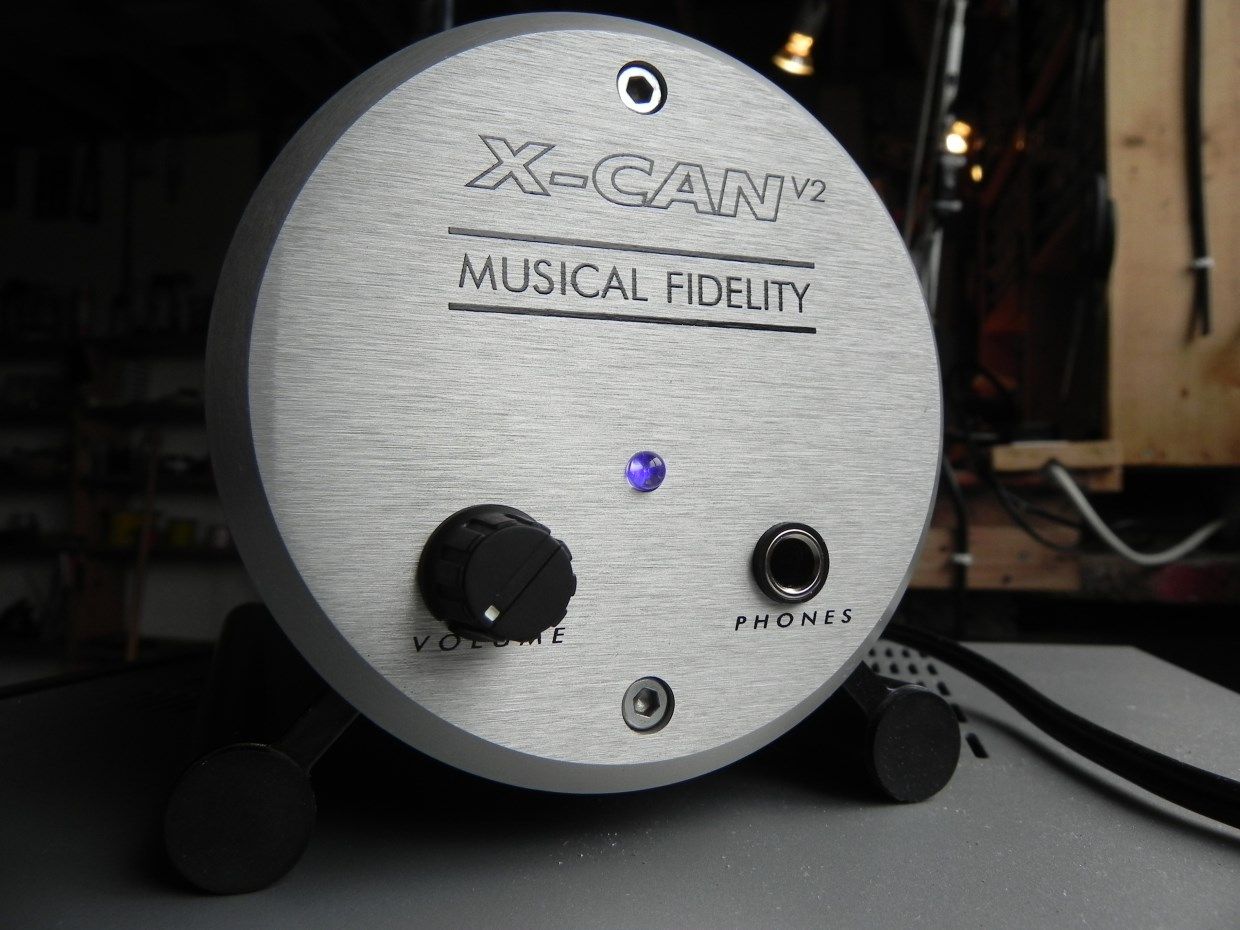
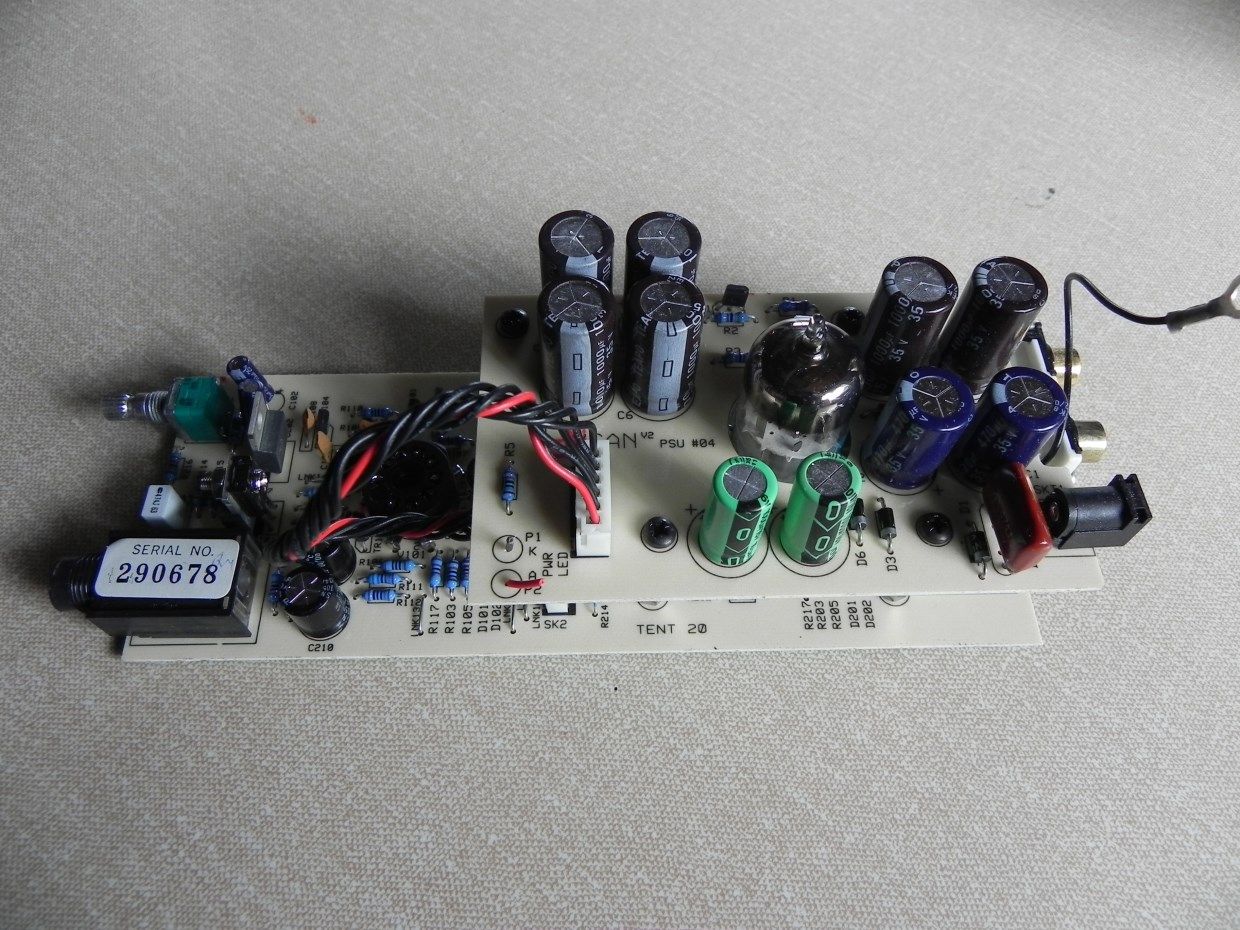
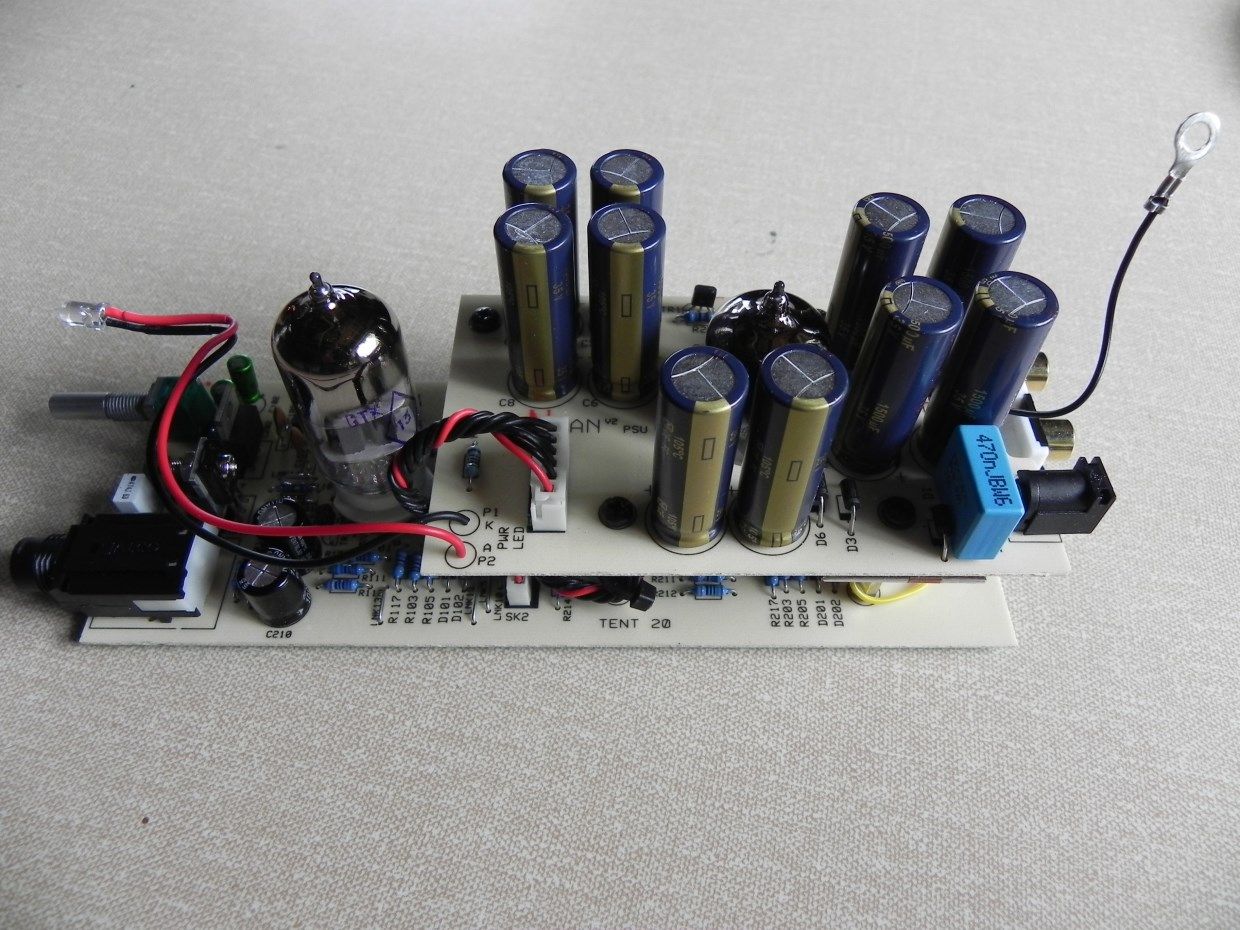
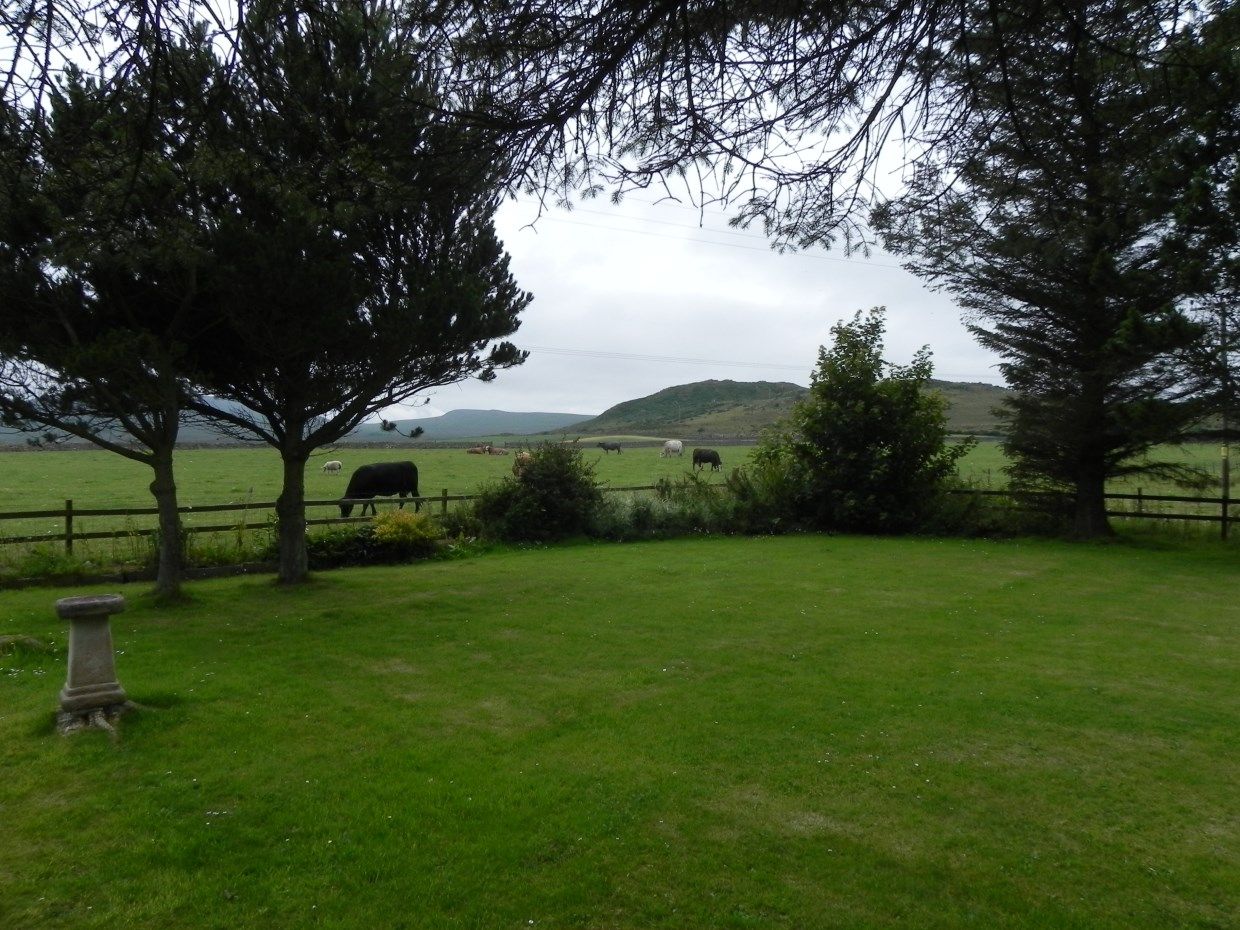
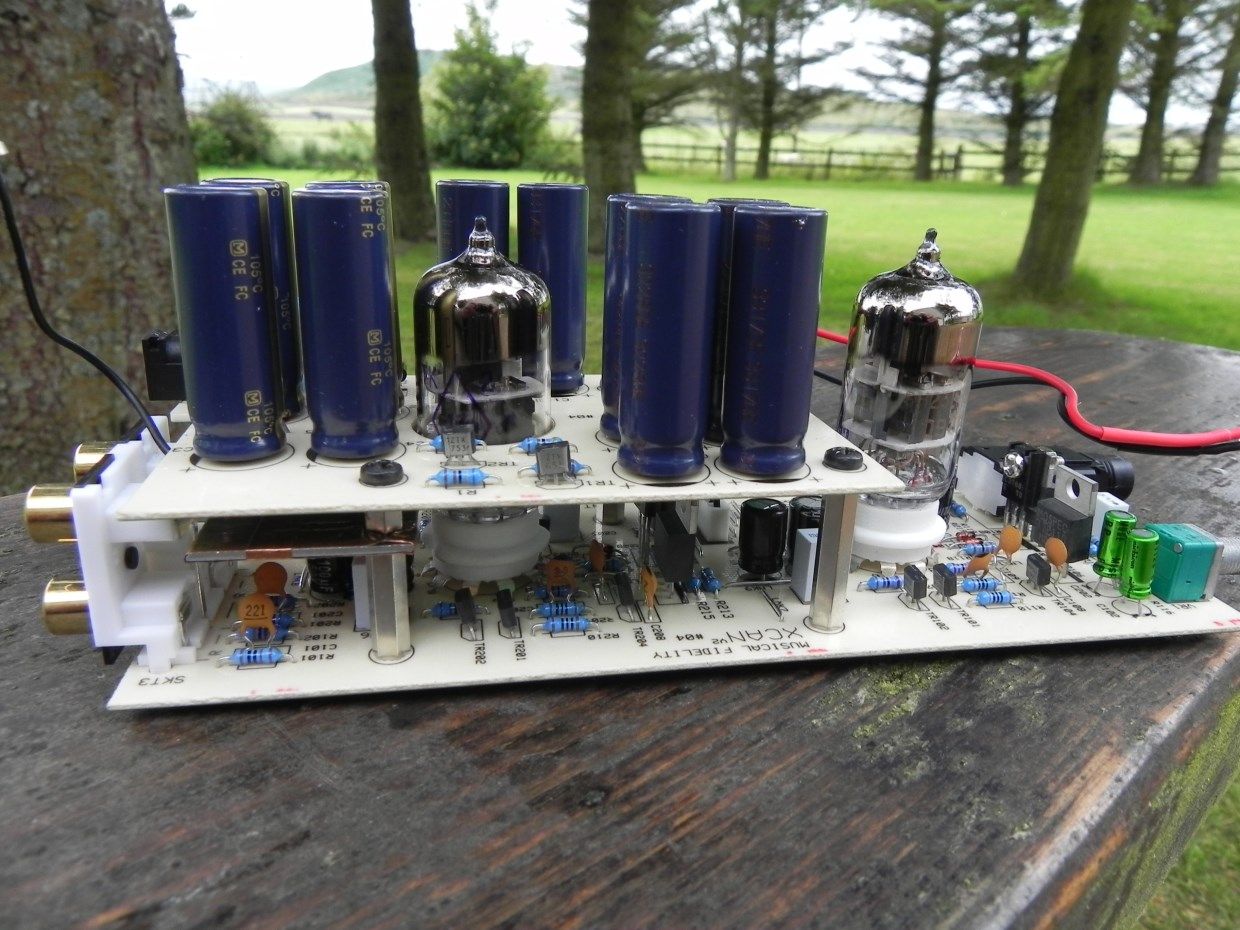
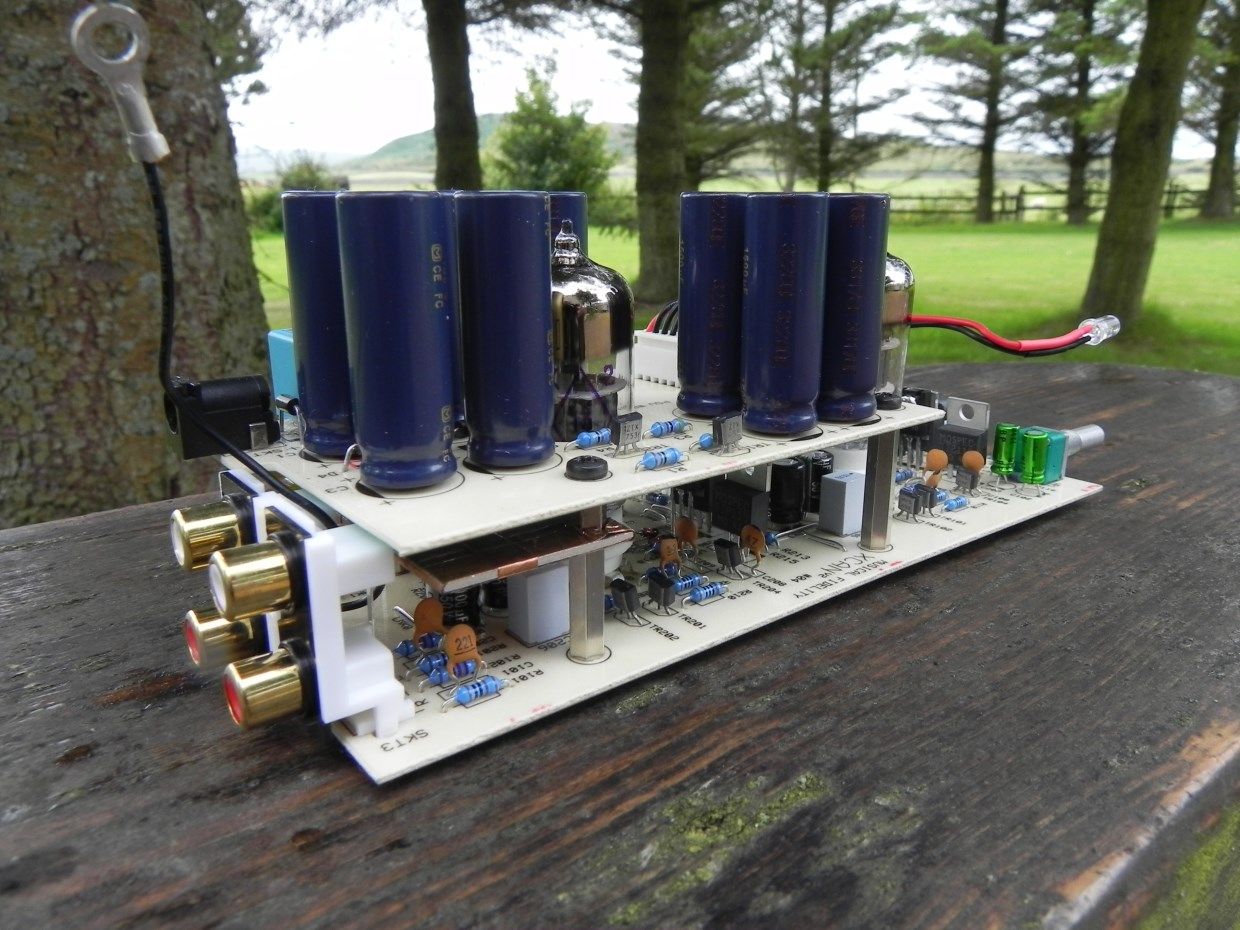
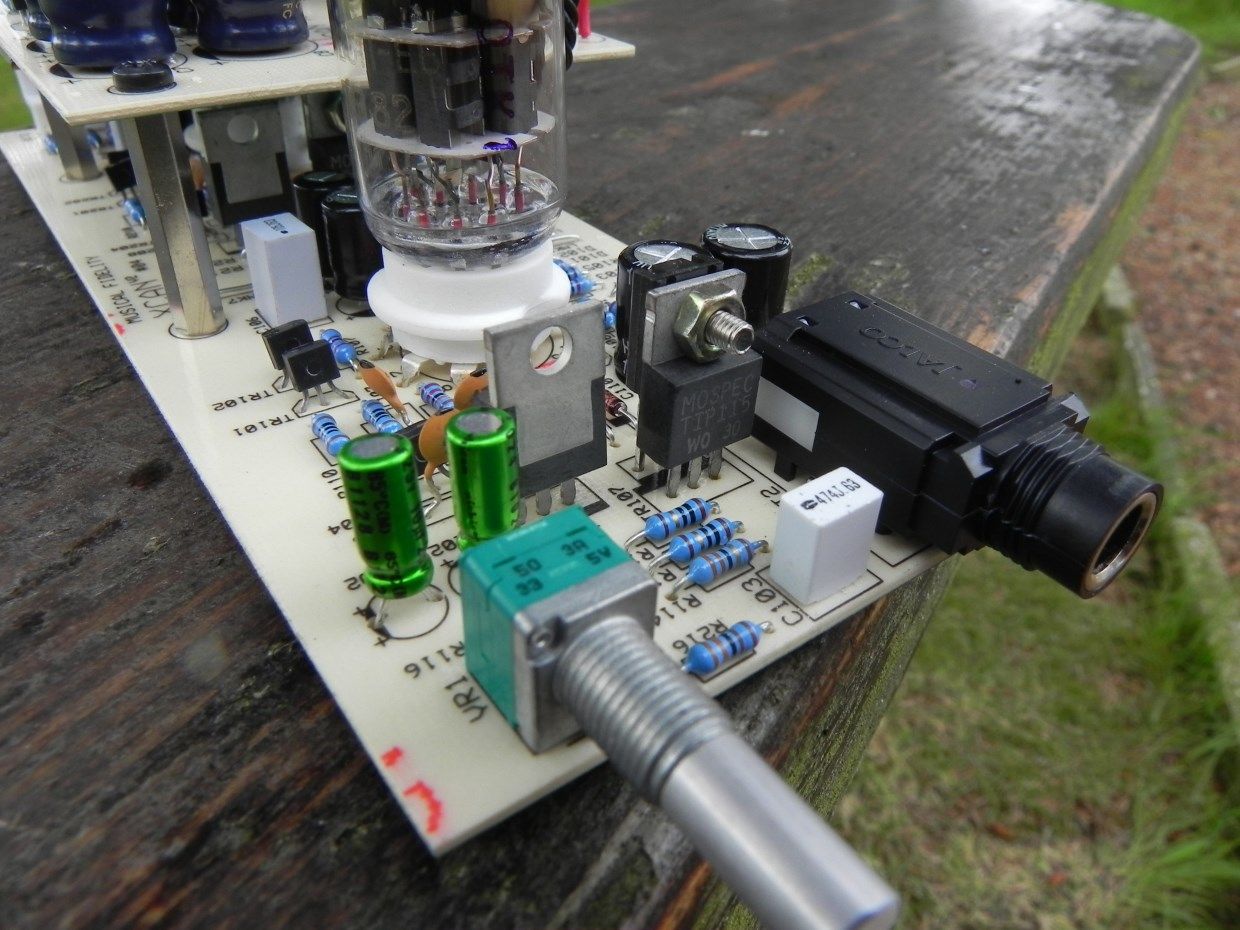
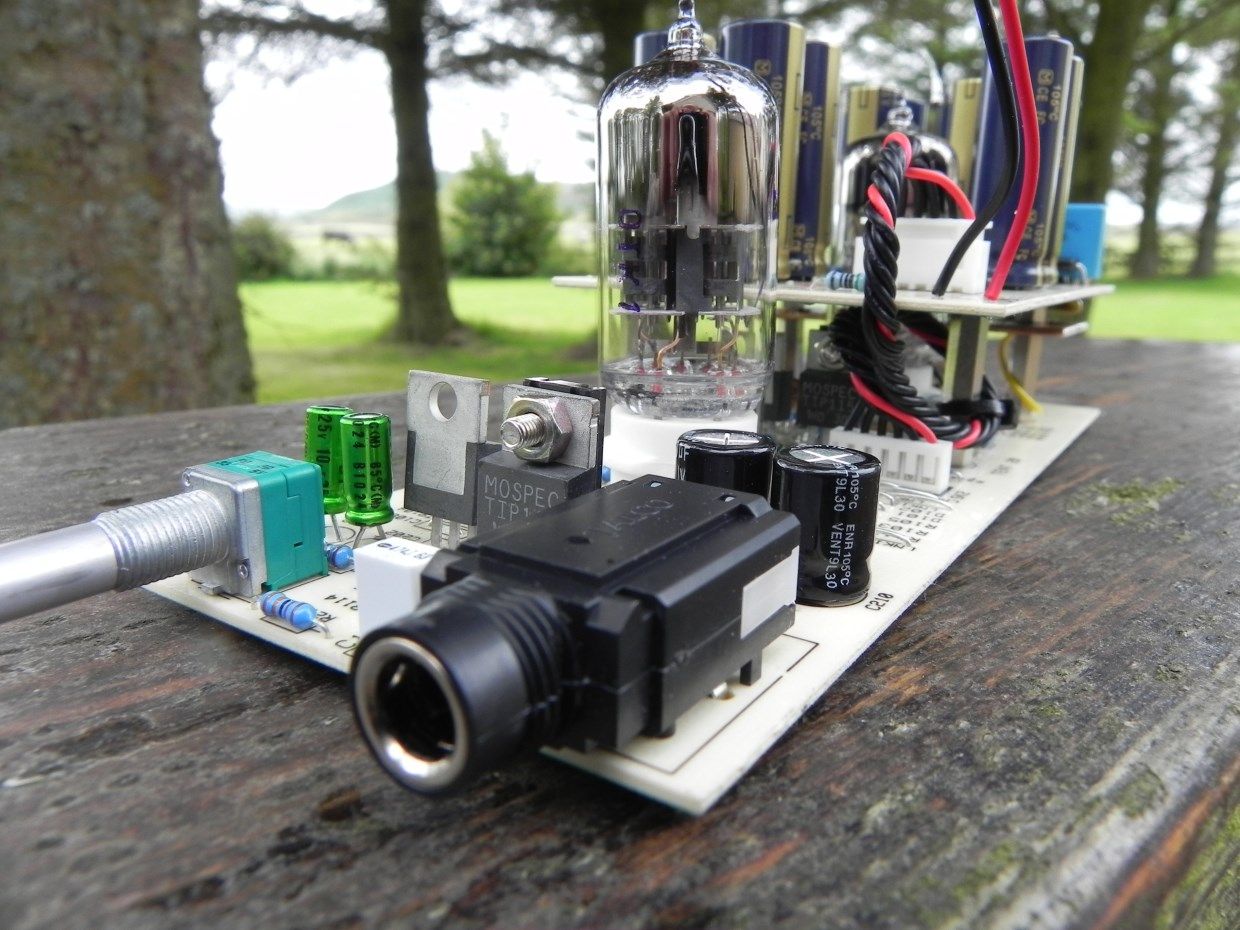
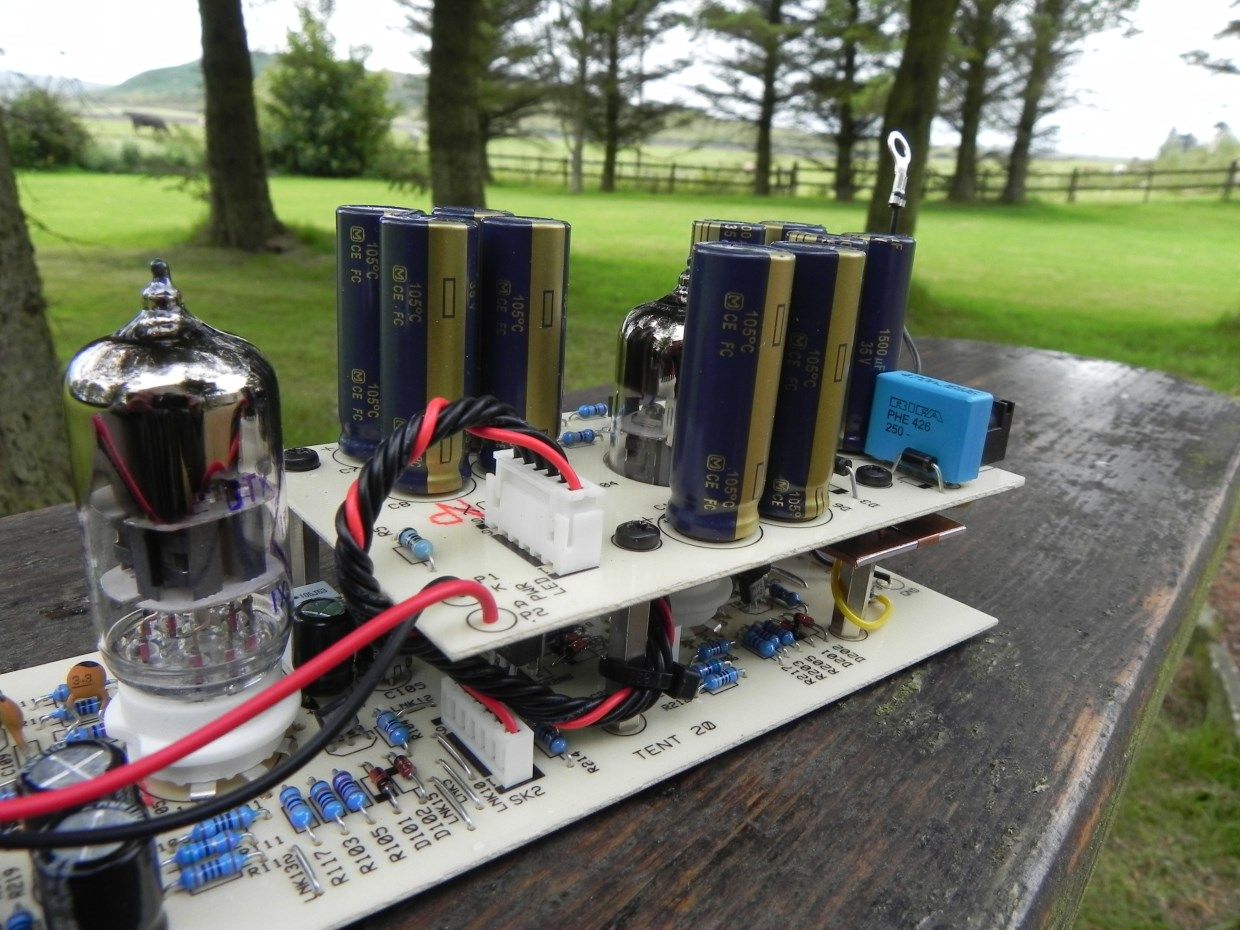
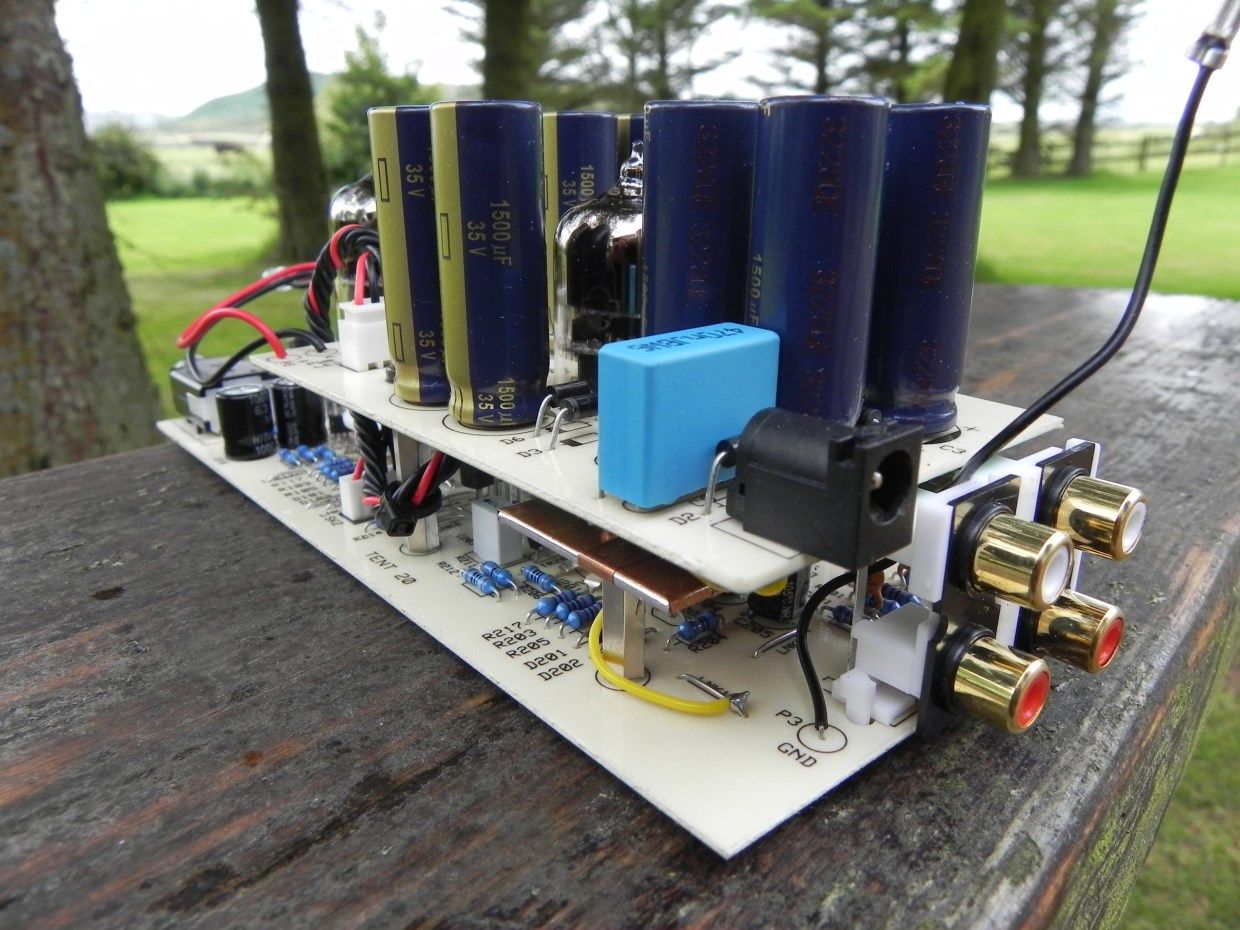
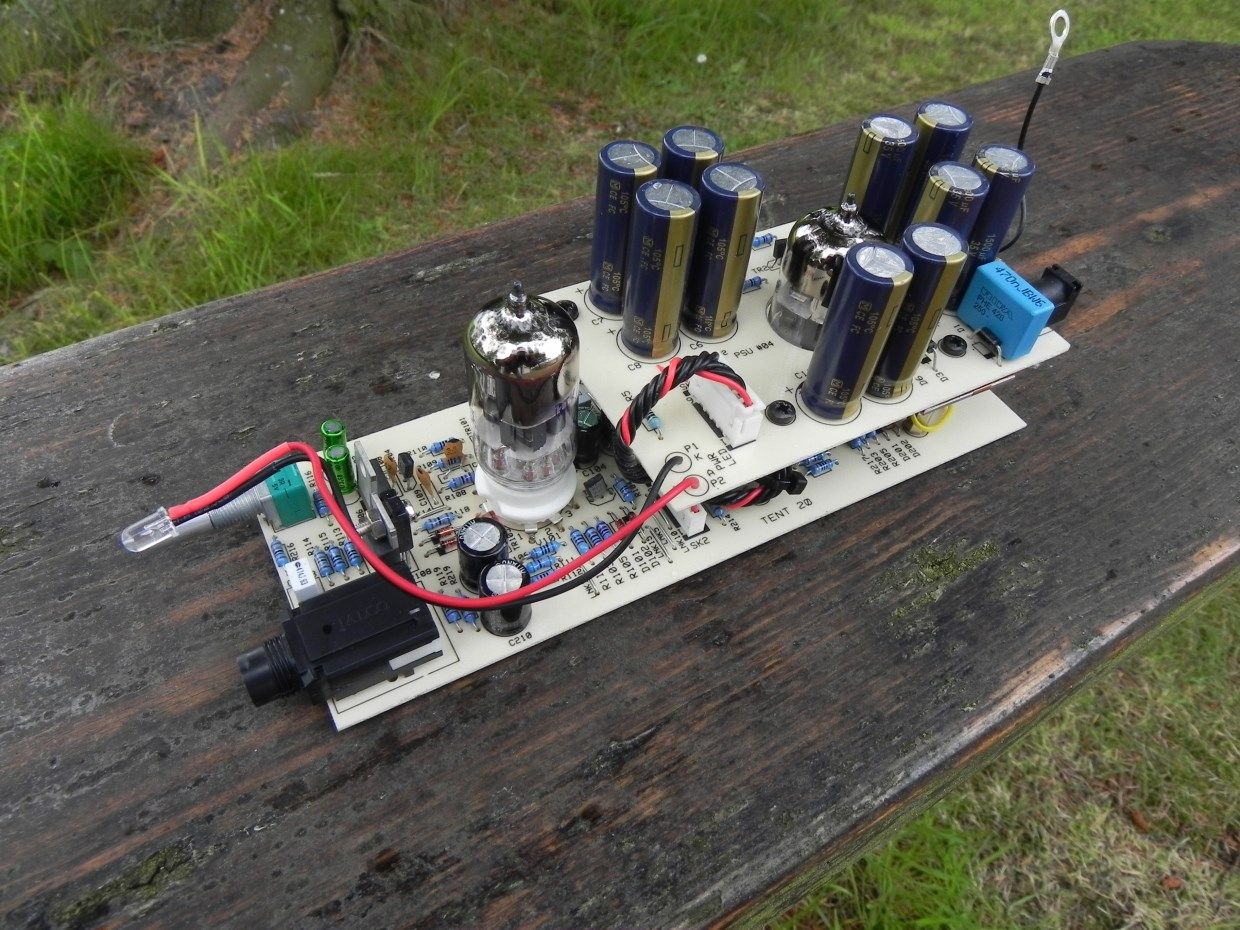

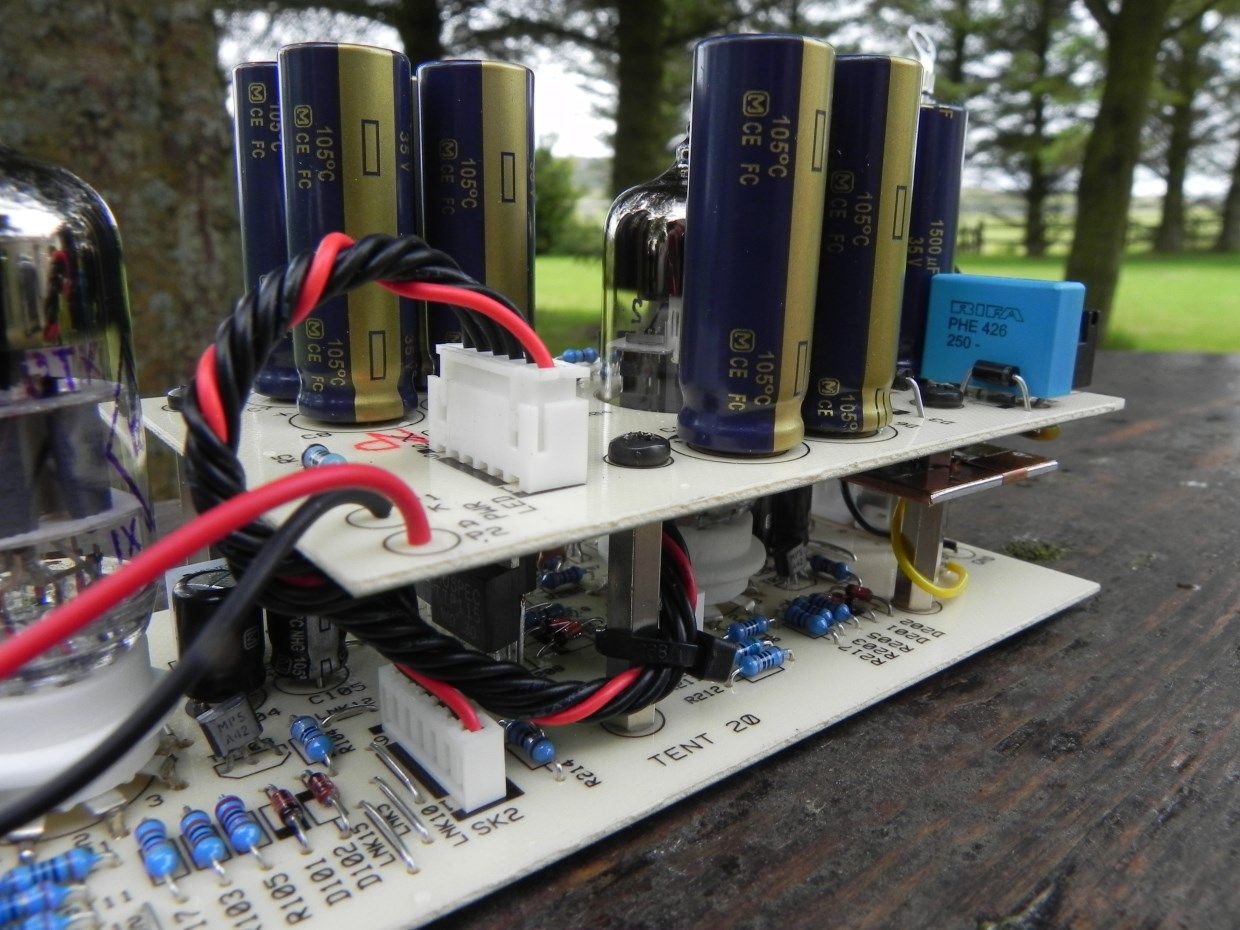
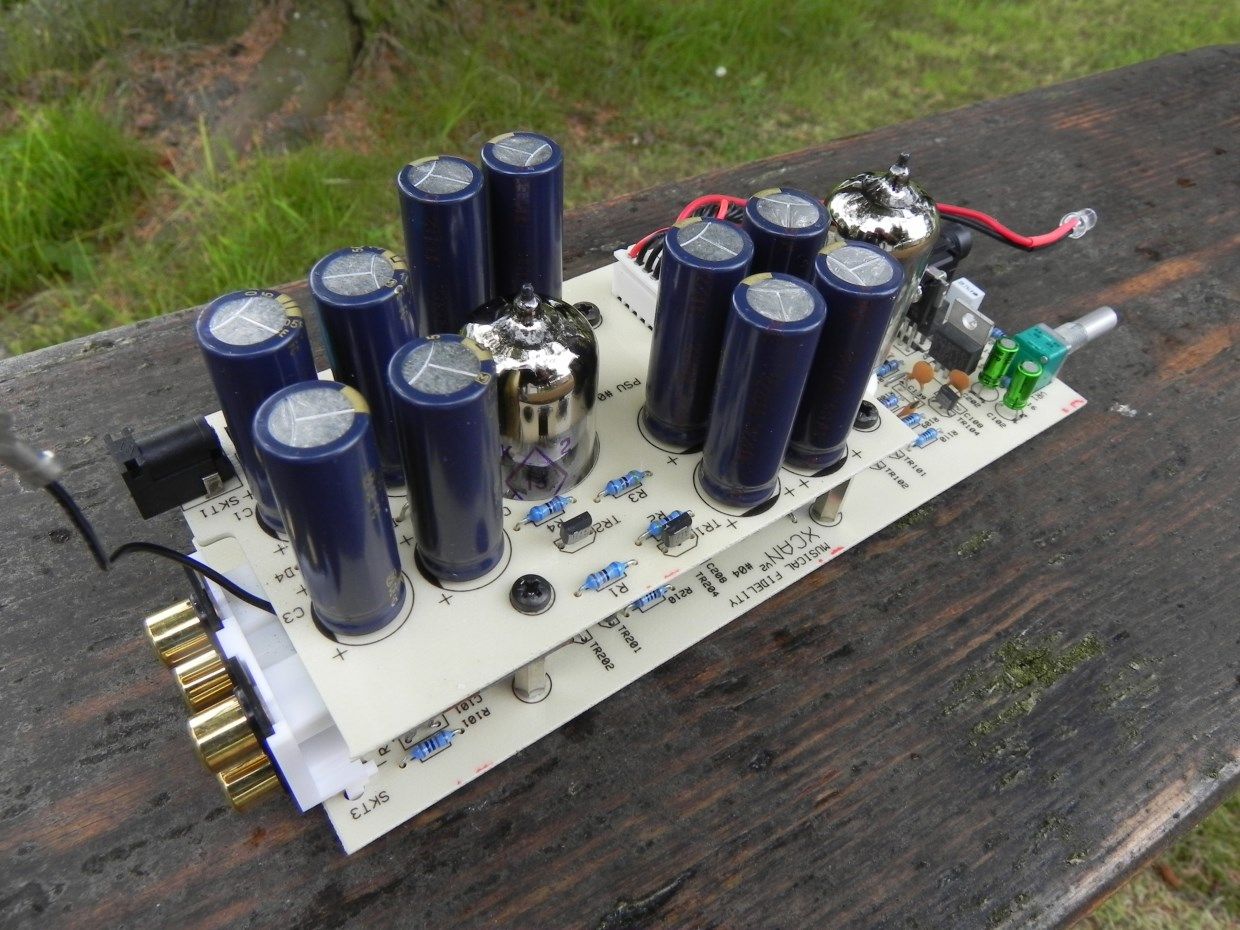

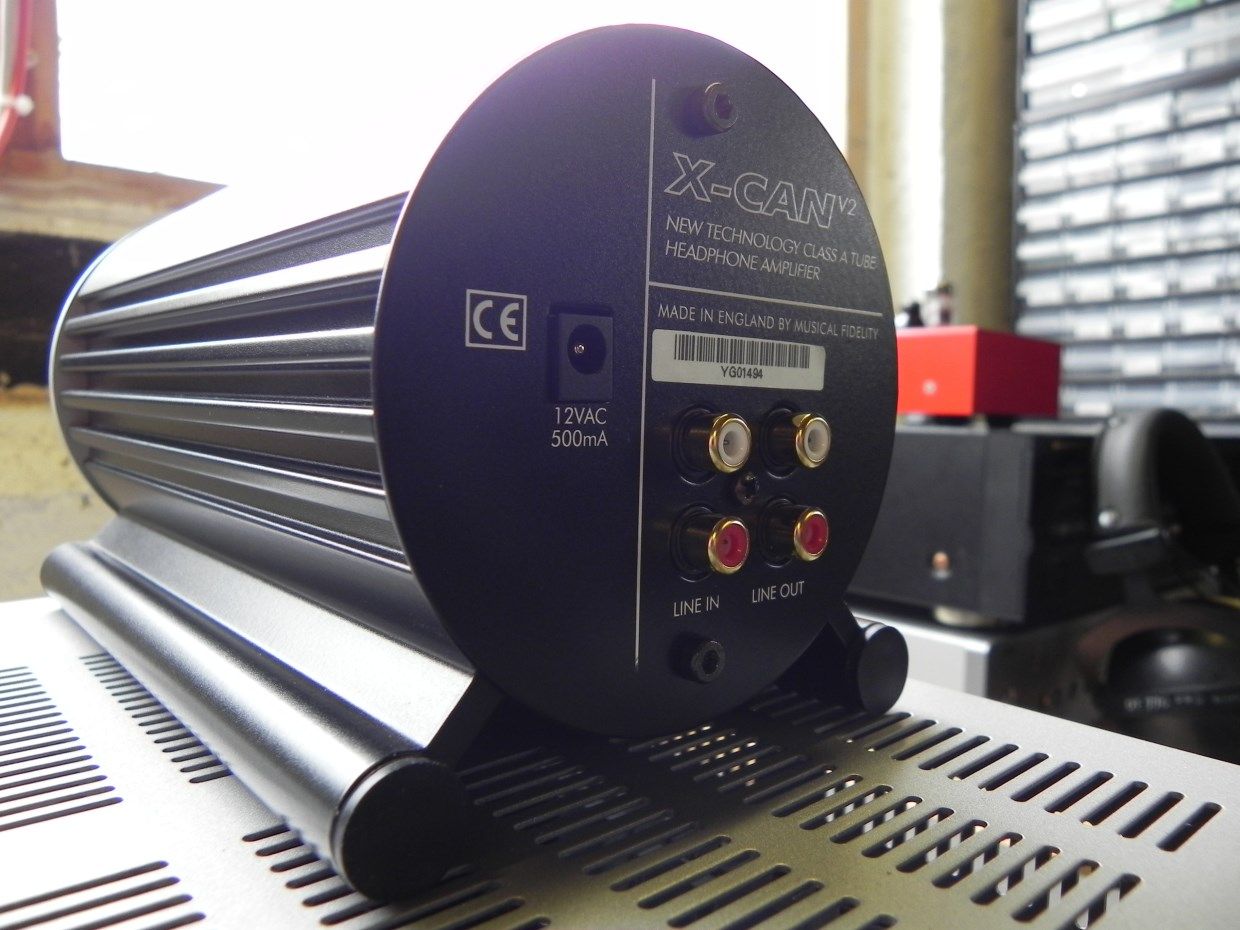
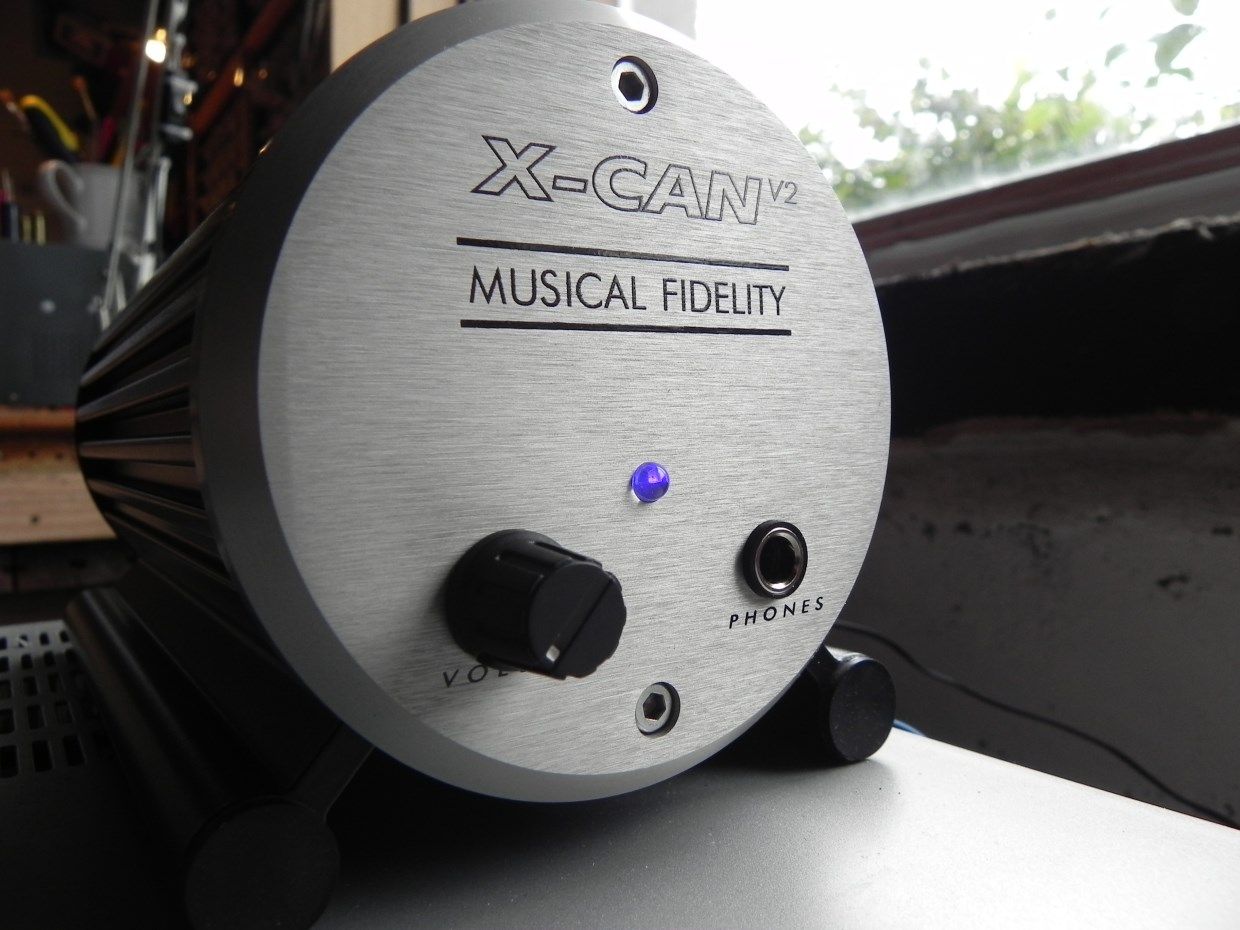
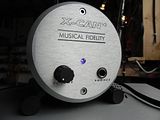

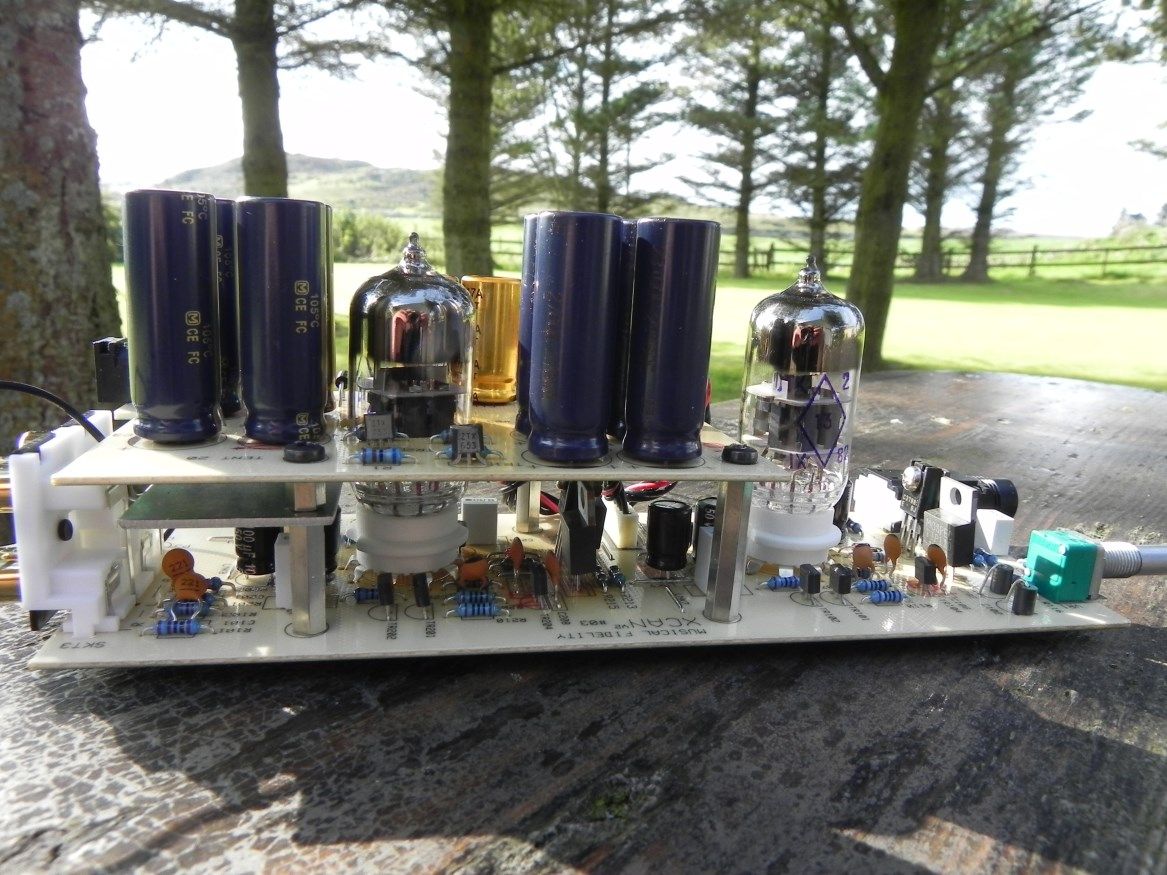
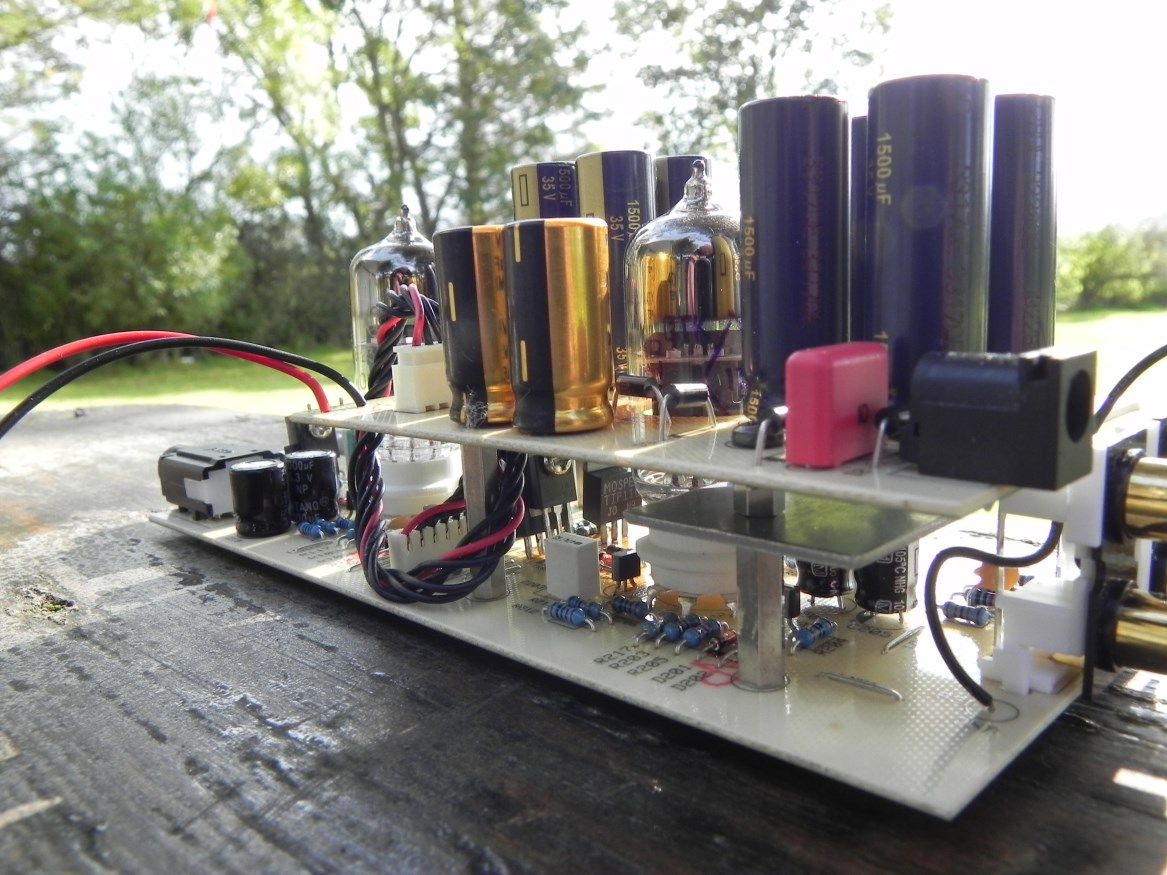
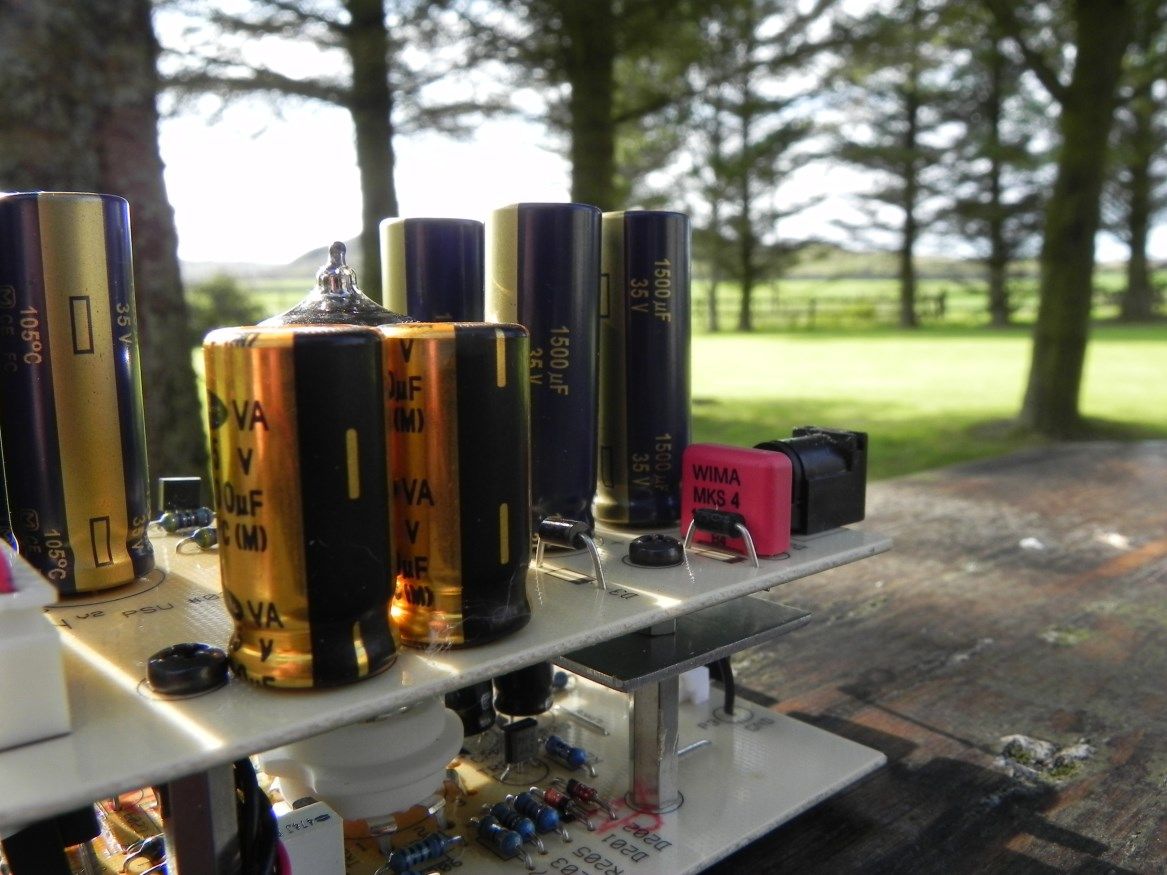


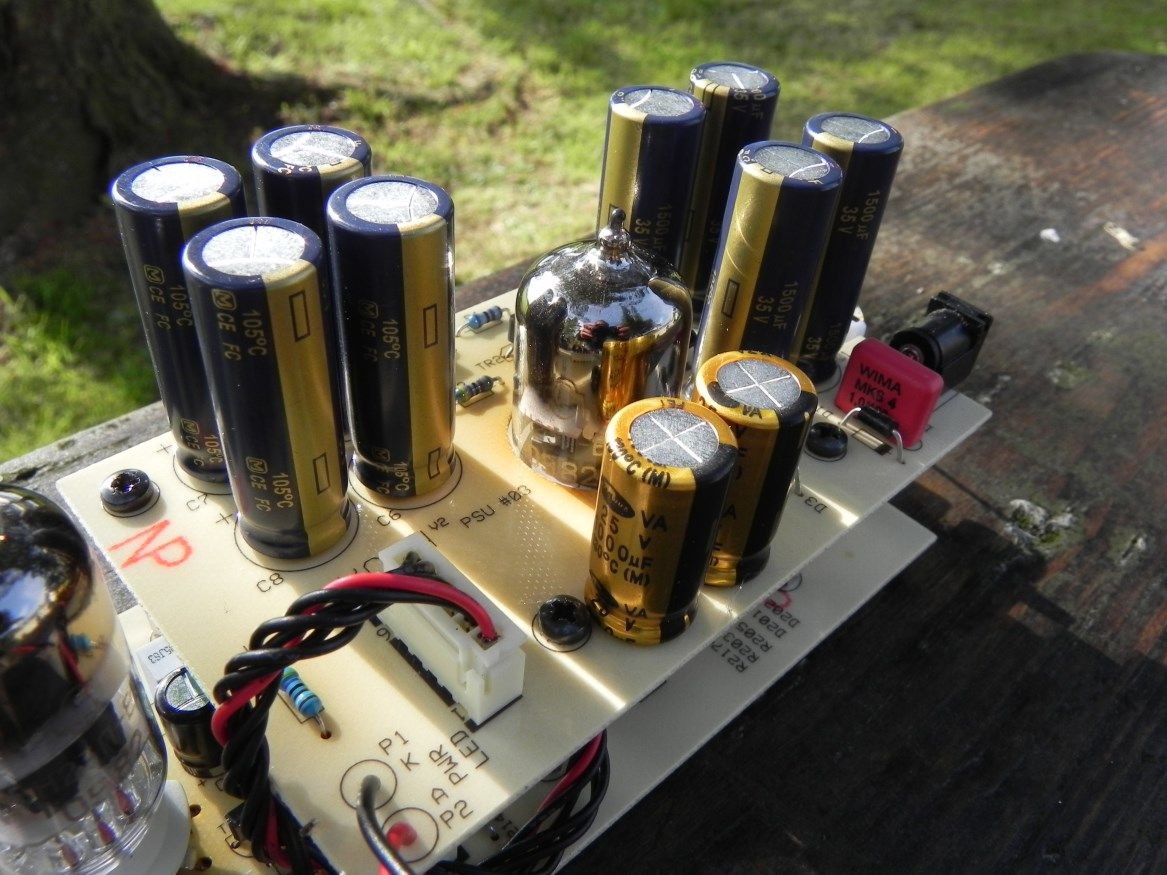
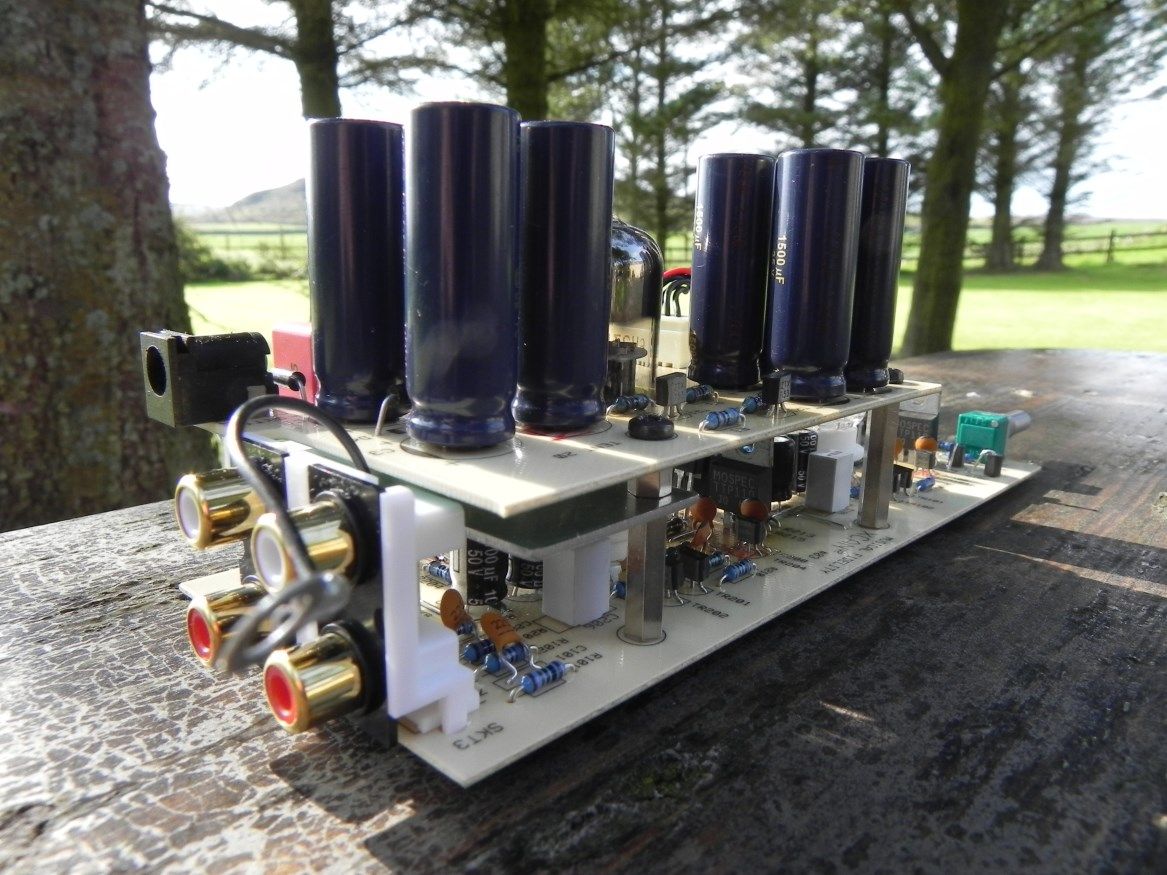

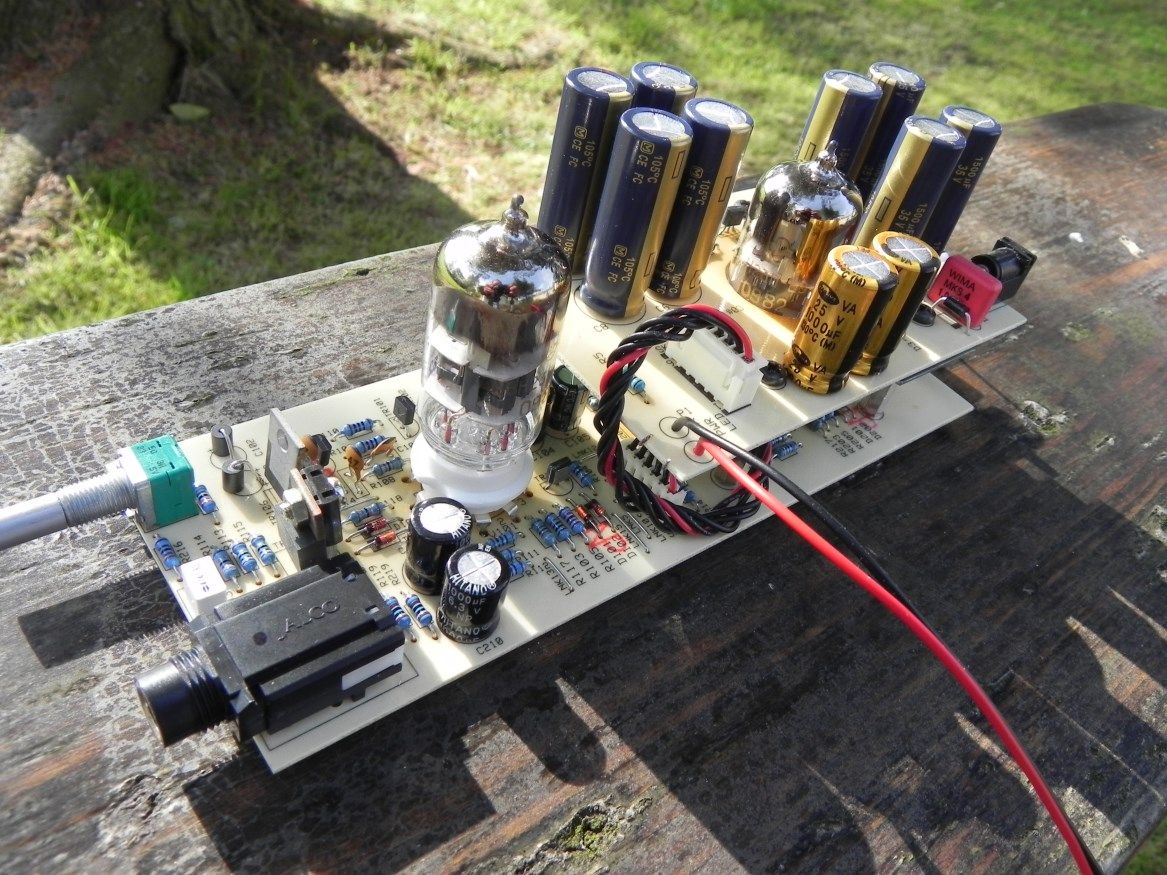

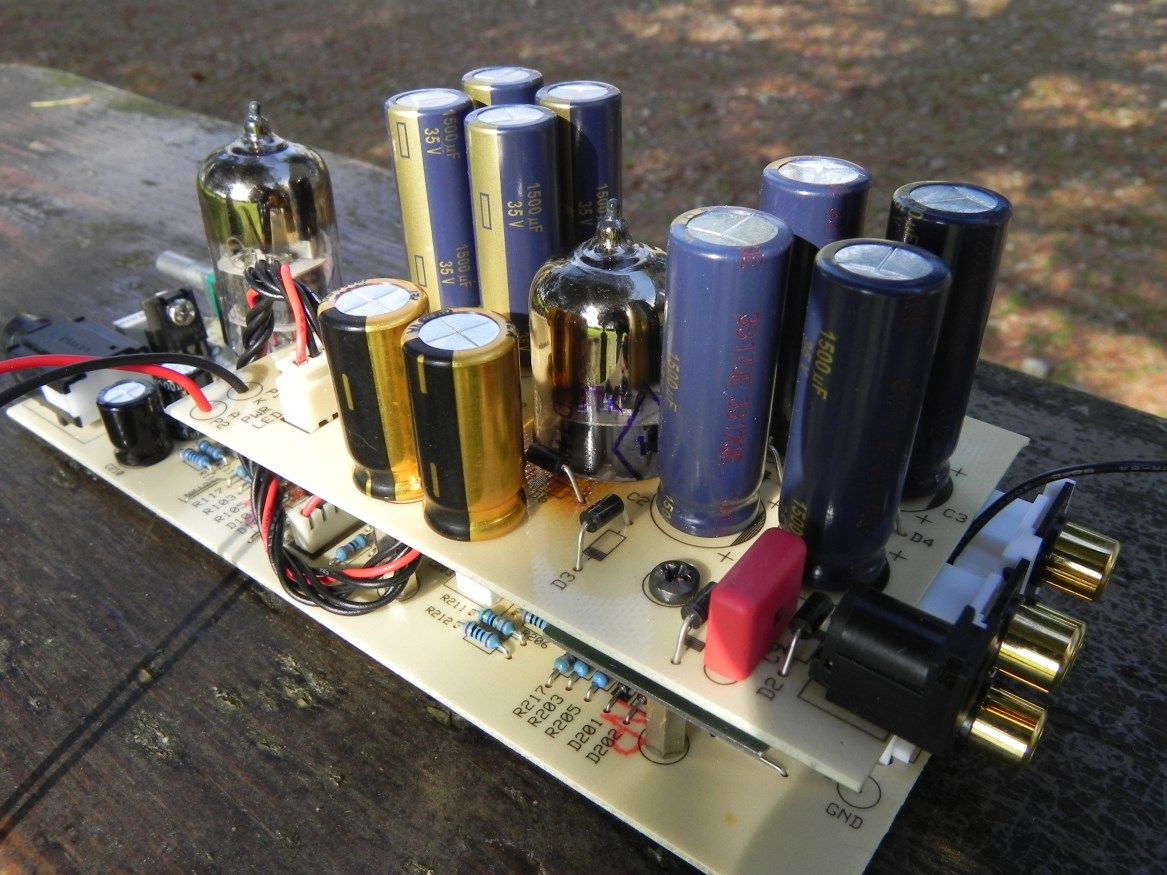










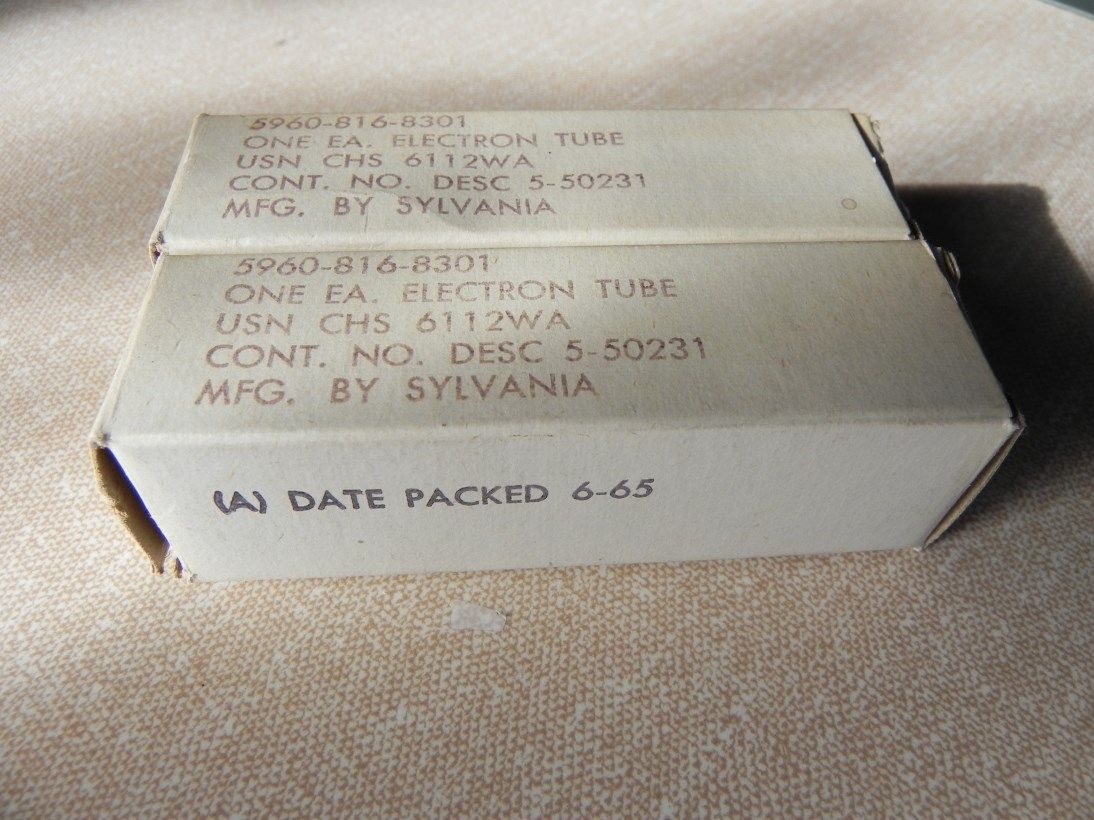
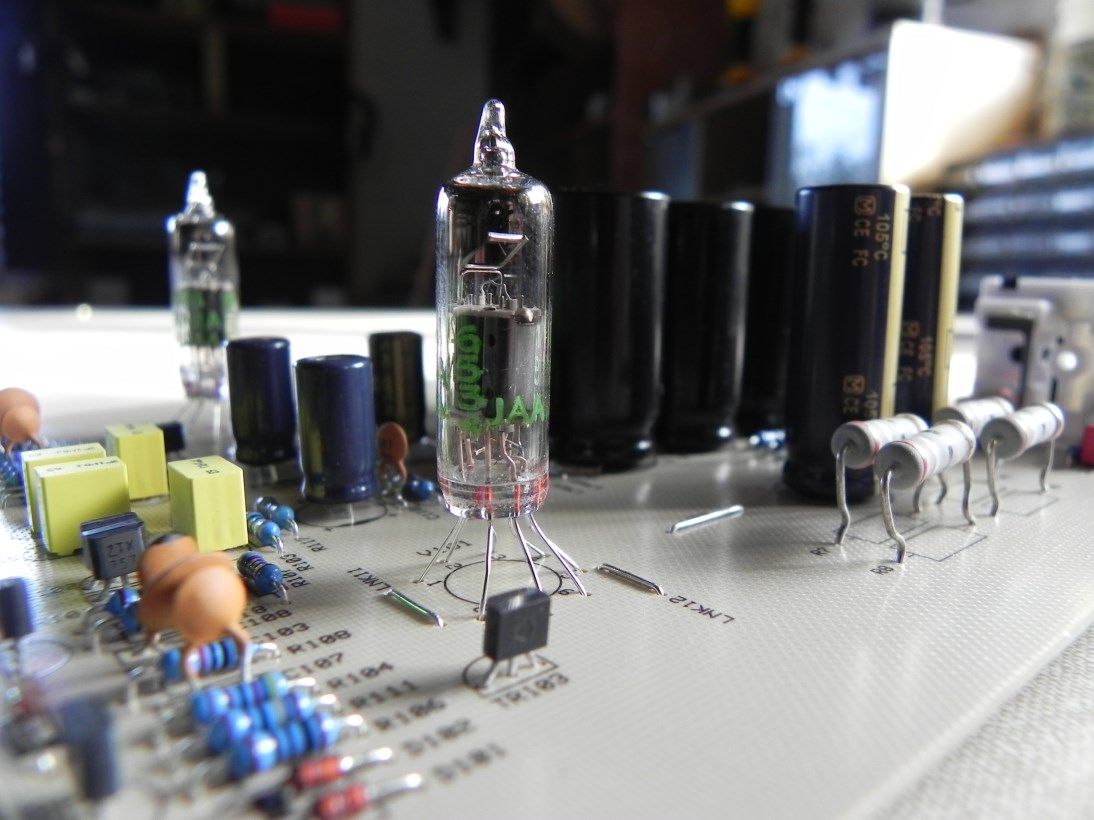
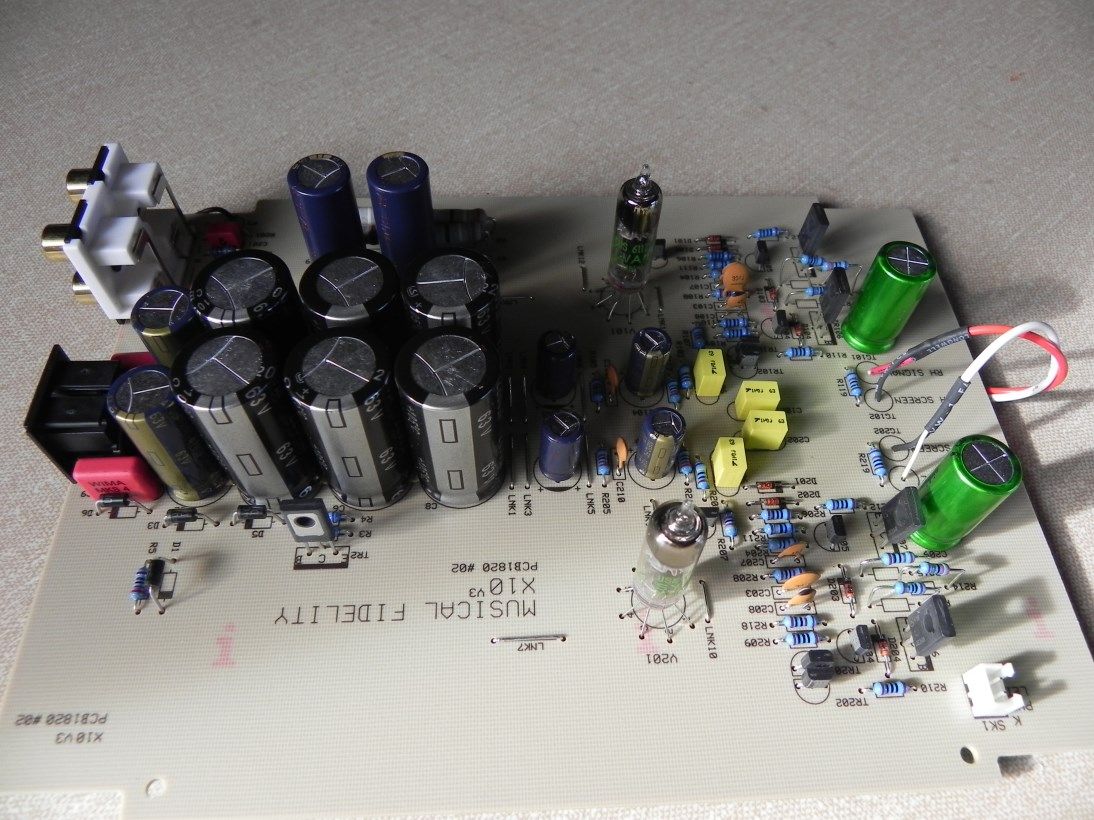
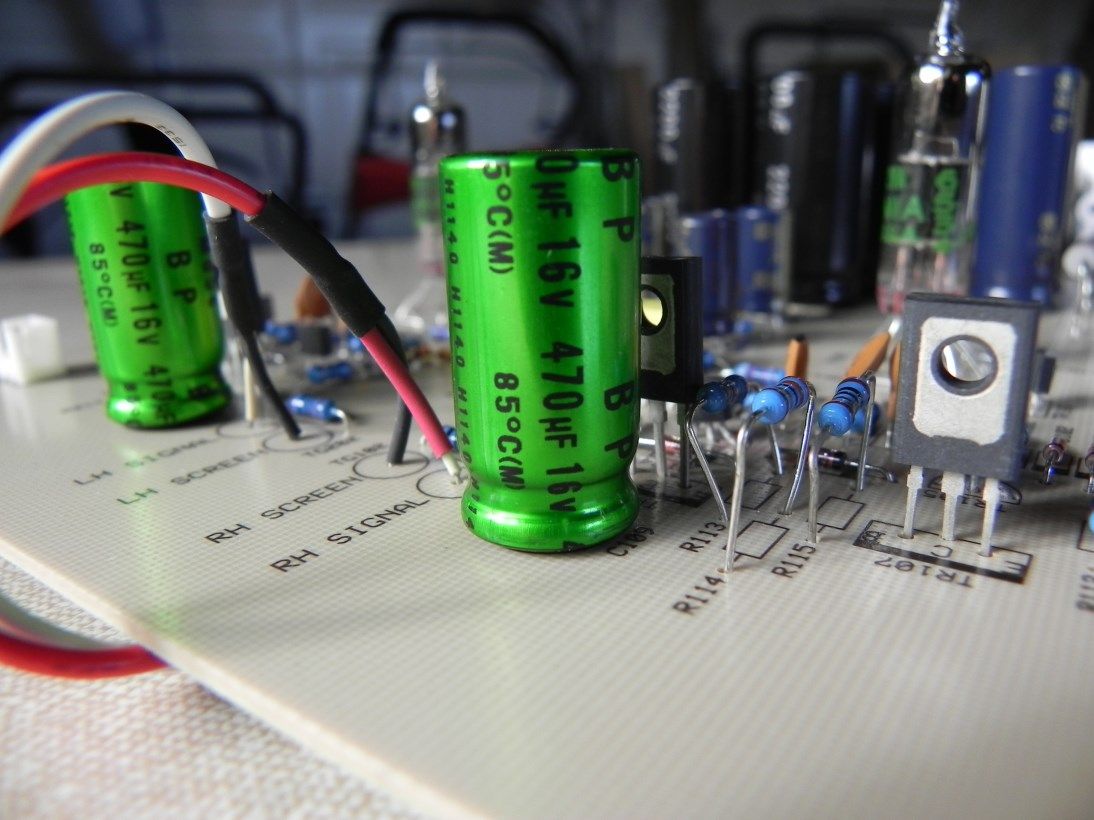
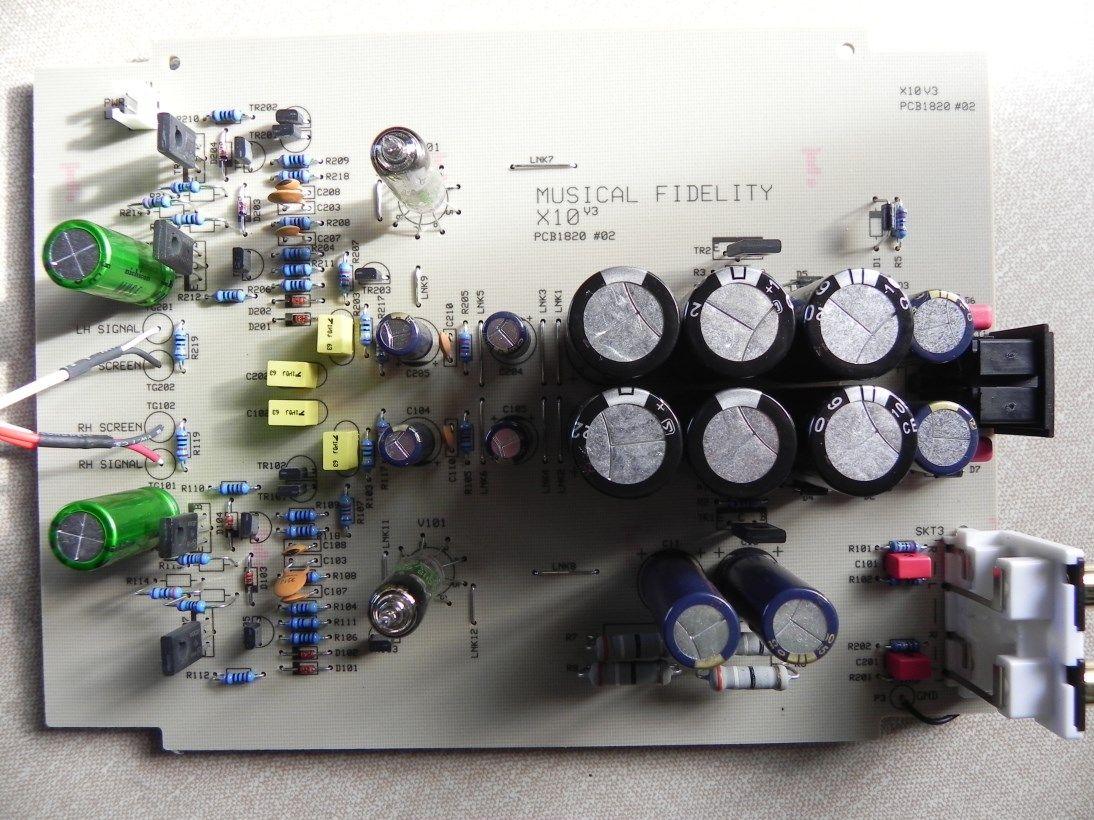

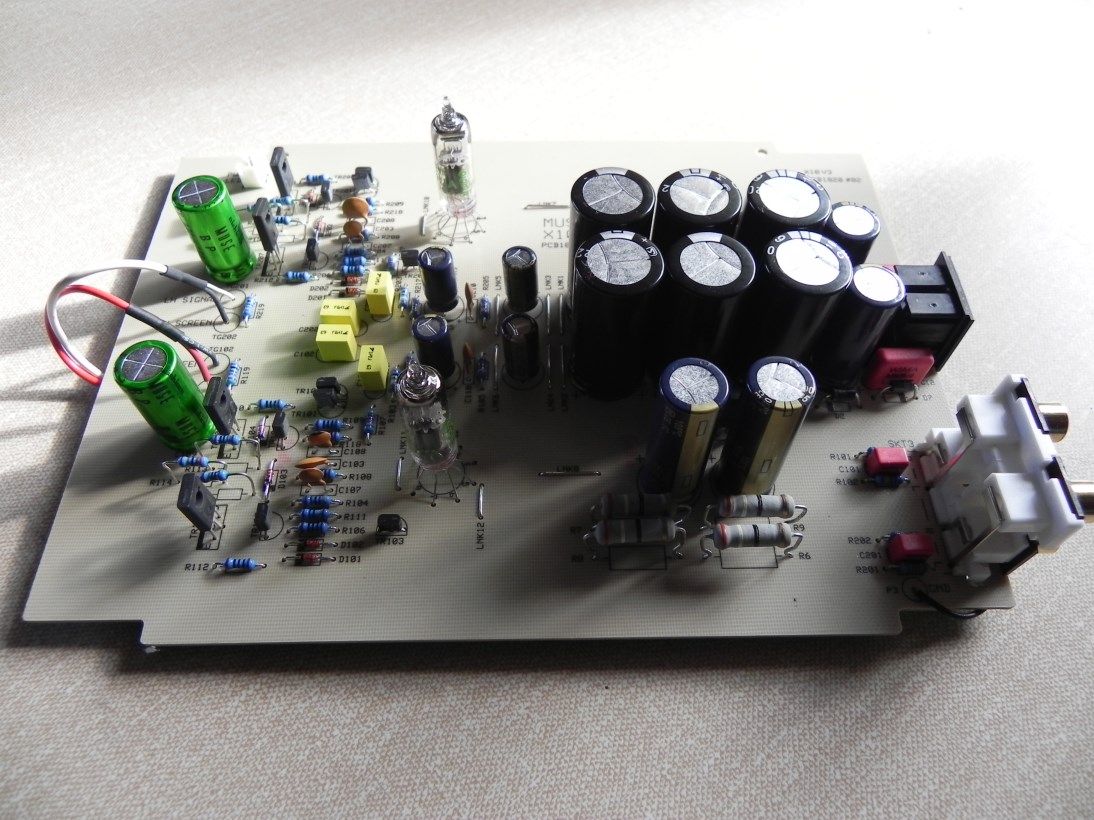
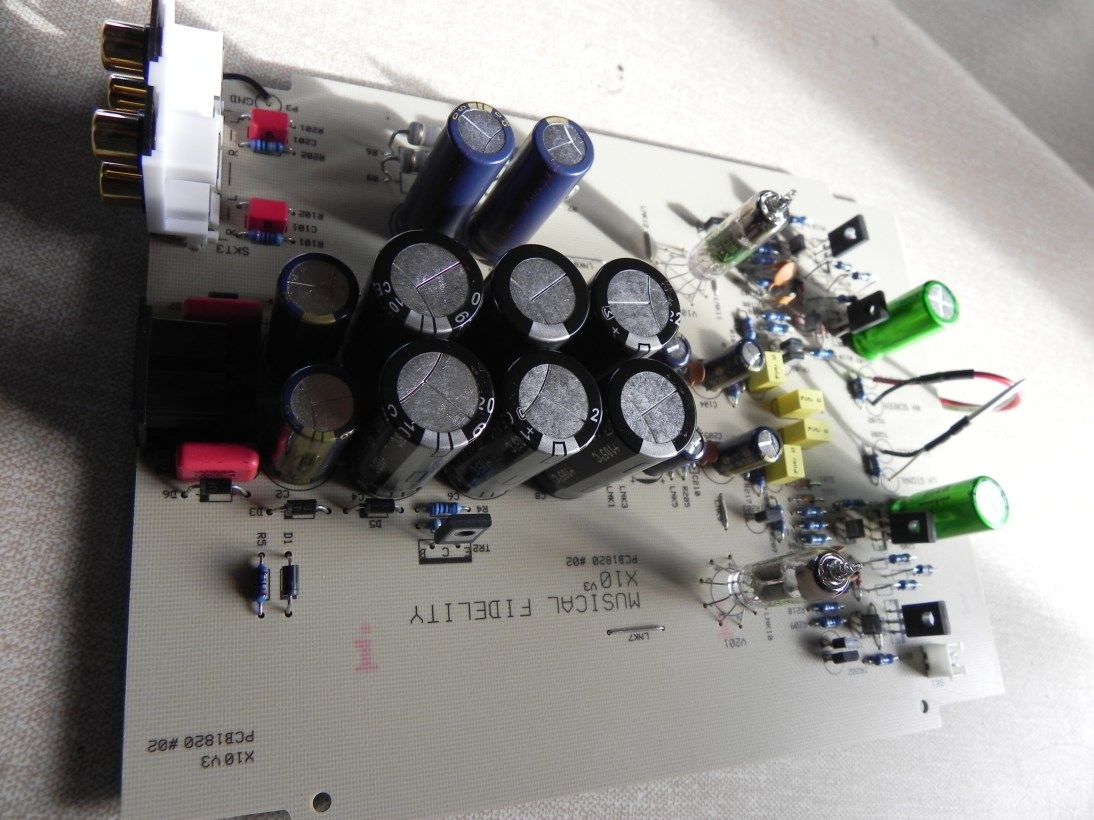


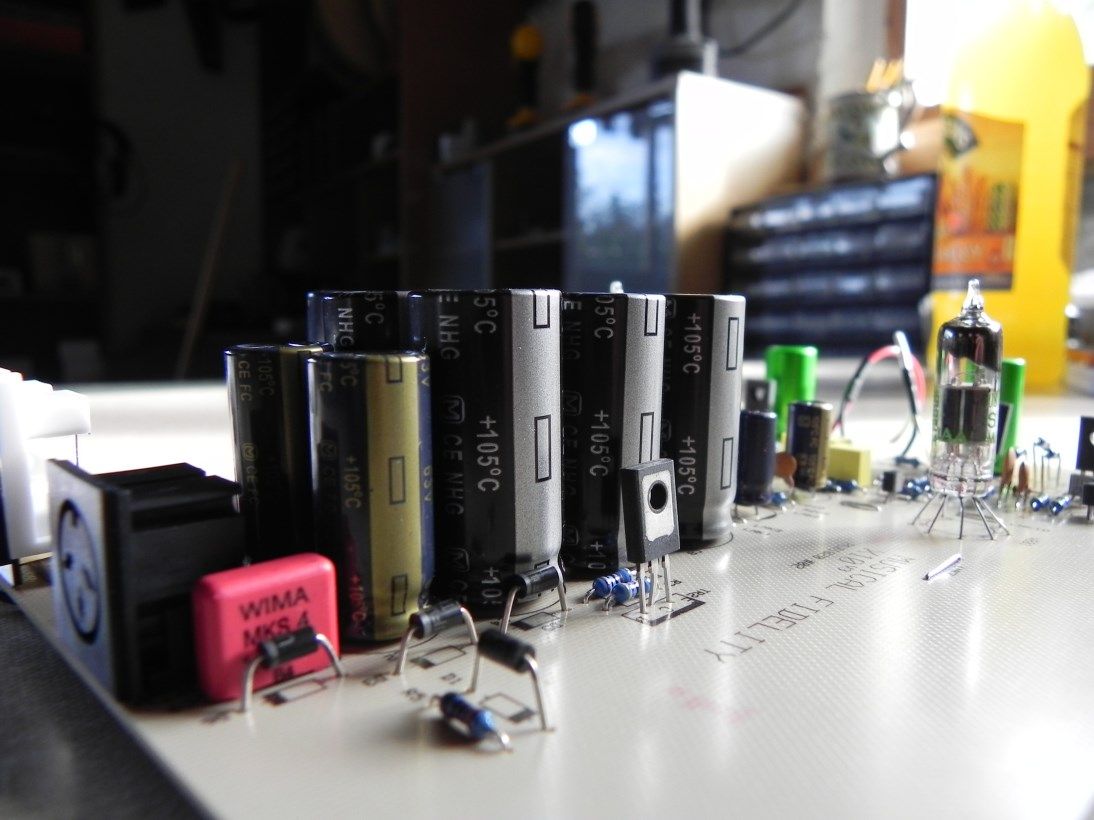
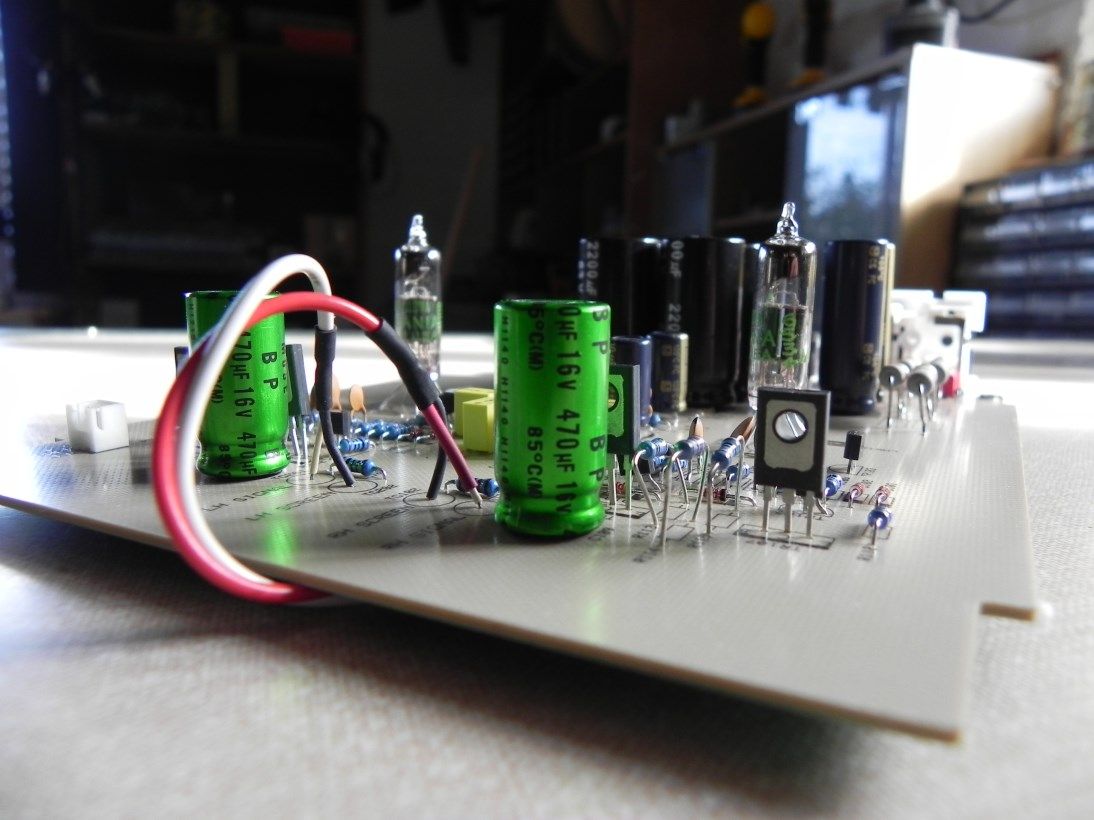
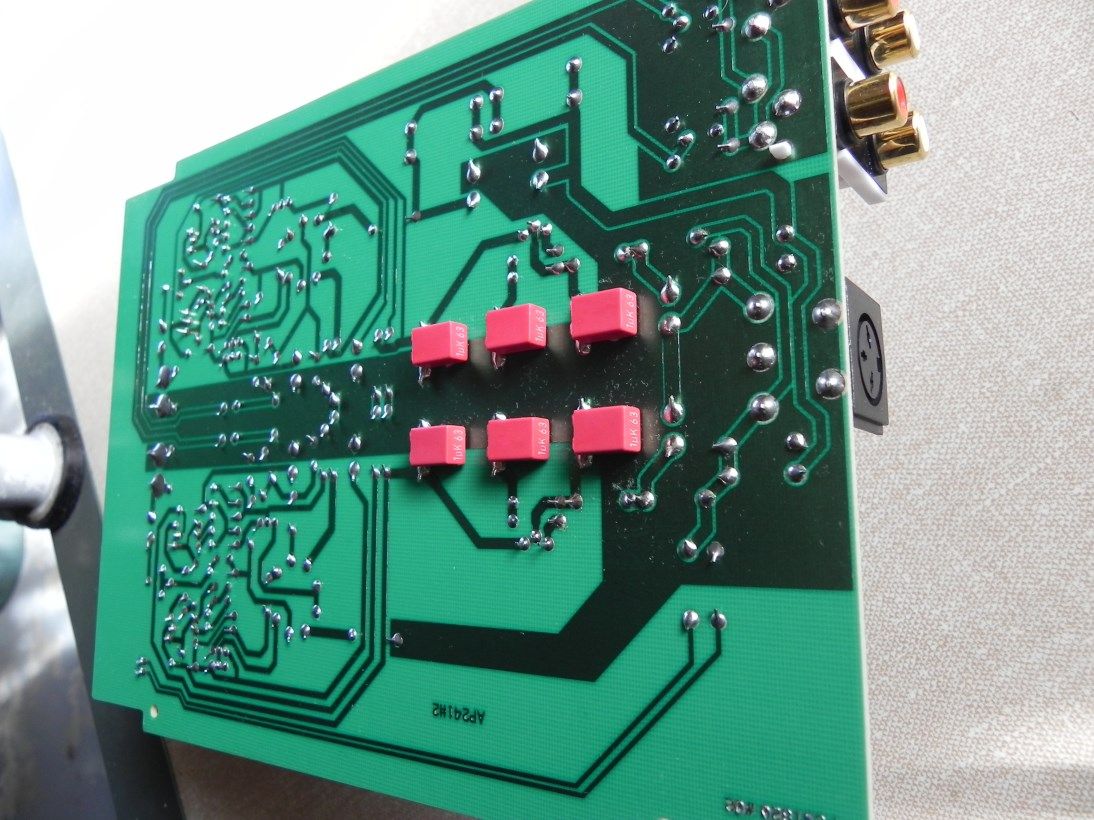









 .
. no ways to buy capacitors .
no ways to buy capacitors .